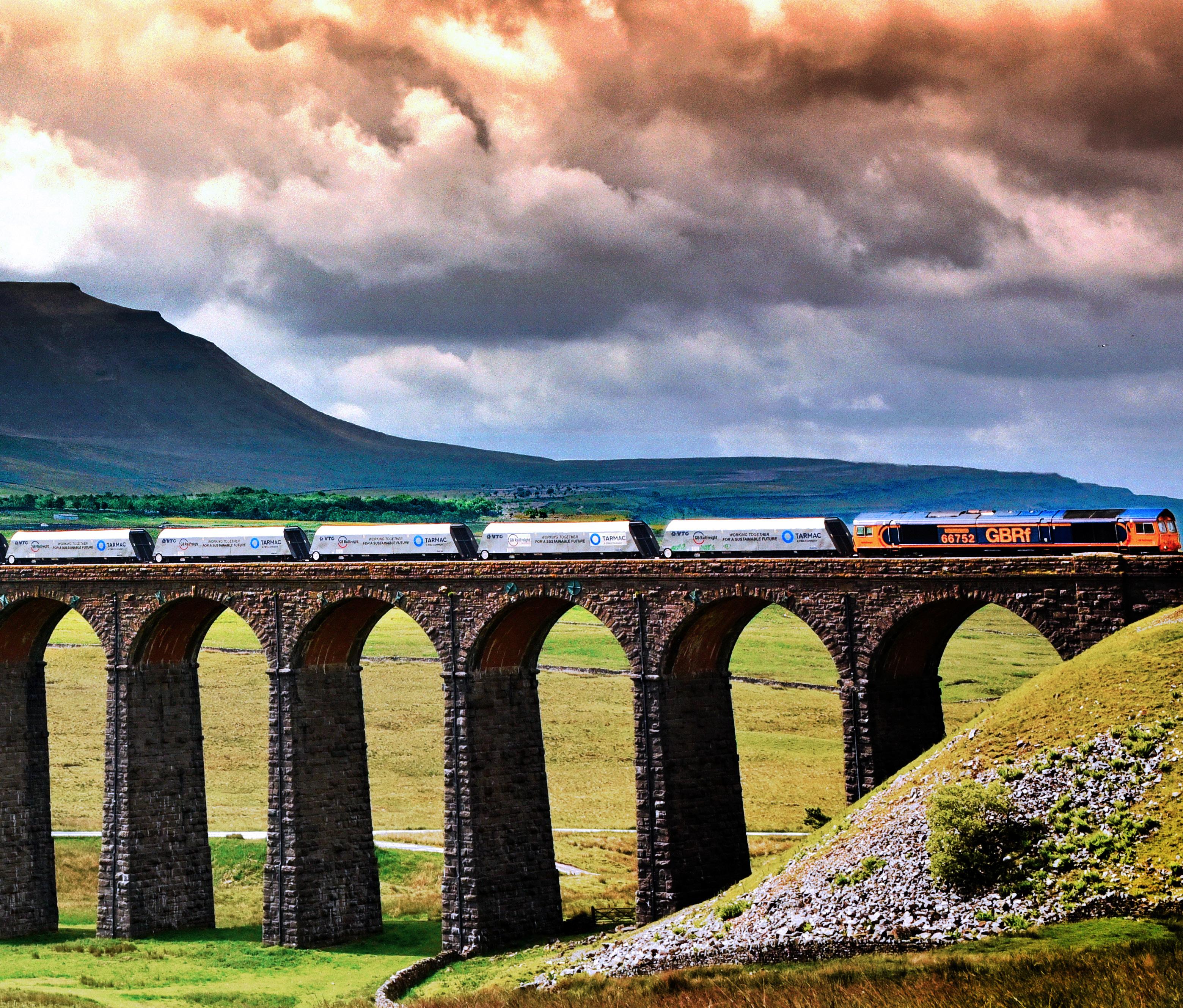

From Quarry to City Centre
At OPC Assessment, we are more than test publishers; we’re experts in our field with more than 25 years’ experience supporting our global clients in the rail and transport sector, engineering industry and beyond.
Our psychometric tools help to: recruit top-tier talent develop high-performing employees support career-long growth
Hosted on our user-friendly Candela™ platform, clients can explore our extensive range of innovative assessment tools. Guided by our expert psychologists, we can advise on bespoke recruitment solutions tailored to your specific needs.
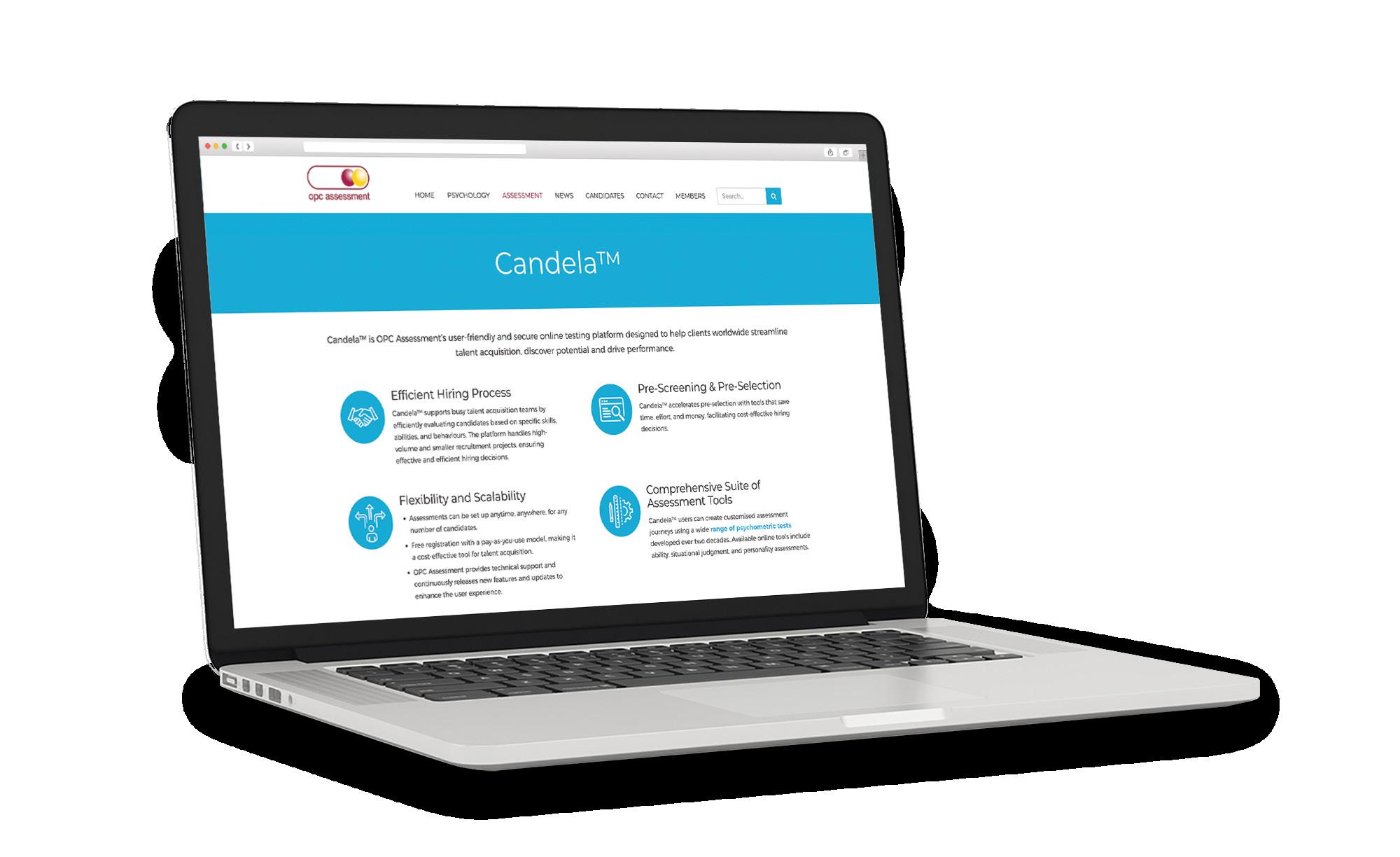


From Quarry to City Centre
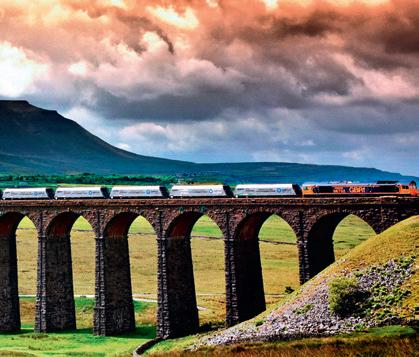


PUBLISHER
EDITORIAL
EDITOR
Sam Sherwood-Hale editor@railpro.co.uk
DISPLAY ADVERTISING
Jamie Tregarthen sales@railpro.co.uk
RECRUITMENT ADVERTISING recruitment@railpro.co.uk
SUBSCRIPTIONS subscriptions@railpro.co.uk
ADMINISTRATION
Cherie Nugent info@railpro.co.uk
Lisa Etherington admin@railpro.co.uk
DESIGN &
Lukasz Saczek production@railpro.co.uk COVER
EDITOR’S NOTE

Before writing this, I read that Transport Secretary Heidi Alexander announced she would accept all recommendations from the James Stewart review which was published on 18 June. The Stewart Review recommended a fundamental reset of HS2 including new governance structures with clearer Financial Shareholder roles, improved capability and trust between stakeholders, commercial renegotiation of the Main Works Civils Contracts, and enhanced cost control mechanisms.
The Transport Secretary will re-establish the HS2 ministerial taskforce for proper oversight, impose stricter financial delegations on HS2 Ltd, and has appointed Mike Brown as new Chair. She committed £25 billion in the Spending Review to support the reset programme.
Elsewhere in the country, Three Yorkshire mayors have united behind a £20 billion rail investment strategy that could unlock transformative economic growth across a region of 4.6 million people. The White Rose plan, spanning West Yorkshire, South Yorkshire, and York & North Yorkshire, represents the kind of regional collaboration that rail reform advocates have long championed – particularly significant as it emerges from an area where infrastructure underperformance has become a barrier to economic potential.
The proposal addresses stark realities that will resonate across much of the network. Rolling stock averaging 23.6 years old, capacity constraints at major stations, and Leeds ranking as the UK's worst location for rail delays with only 54 per cent of services running on time paint a picture of systematic underinvestment. Yet the mayors' response – a strategy promising 83,000 new jobs and 210,000 new homes alongside network modernisation – demonstrates how targeted rail investment can drive broader economic transformation.
In this month’s issue, I spoke to Bogdan Godziejewski, the 101st President of the Institution of Railway Signal Engineers, about his vision for engaging young professionals in railway signalling's digital transformation and how the next generation can accelerate the adoption of technologies like ETCS and CBTC; Daryn McCombe from Great Western Railway and Network Rail about the pioneering joint control function between the two organisations, exploring how breaking down structural barriers and aligning decision-making processes is delivering better outcomes for passengers whilst preparing the Western Route for the transition to Great British Railways; and Tristan Lloyd-Baker, CEO of RailSense Solutions, about his company's journey to international success with IoT sensors and how remote monitoring technology is transforming railway maintenance from reactive to predictive approaches across global networks.
We also feature articles from Steve Medhurst and William Phillips at RSA on how the rail industry must future-proof against climate-related risks through innovative satellite monitoring and collaborative insurance solutions; Ellis Patents on their successful deployment of the Pegasus® cable hanger system at Cockfosters Depot as part of the Piccadilly Line Upgrade; Andrew Cruttenden from Trainline Partner Solutions on how rail's green credentials can attract high-margin business travellers as companies face increasing pressure to reduce their carbon footprint; and Hannah McDonnell from Oxfordshire & Gloucestershire Community Rail Partnership on the power of making carbon impact relatable through innovative communication strategies like ‘kettle comparators’ to encourage modal shift from car to rail.
SAM SHERWOOD-HALE EDITOR
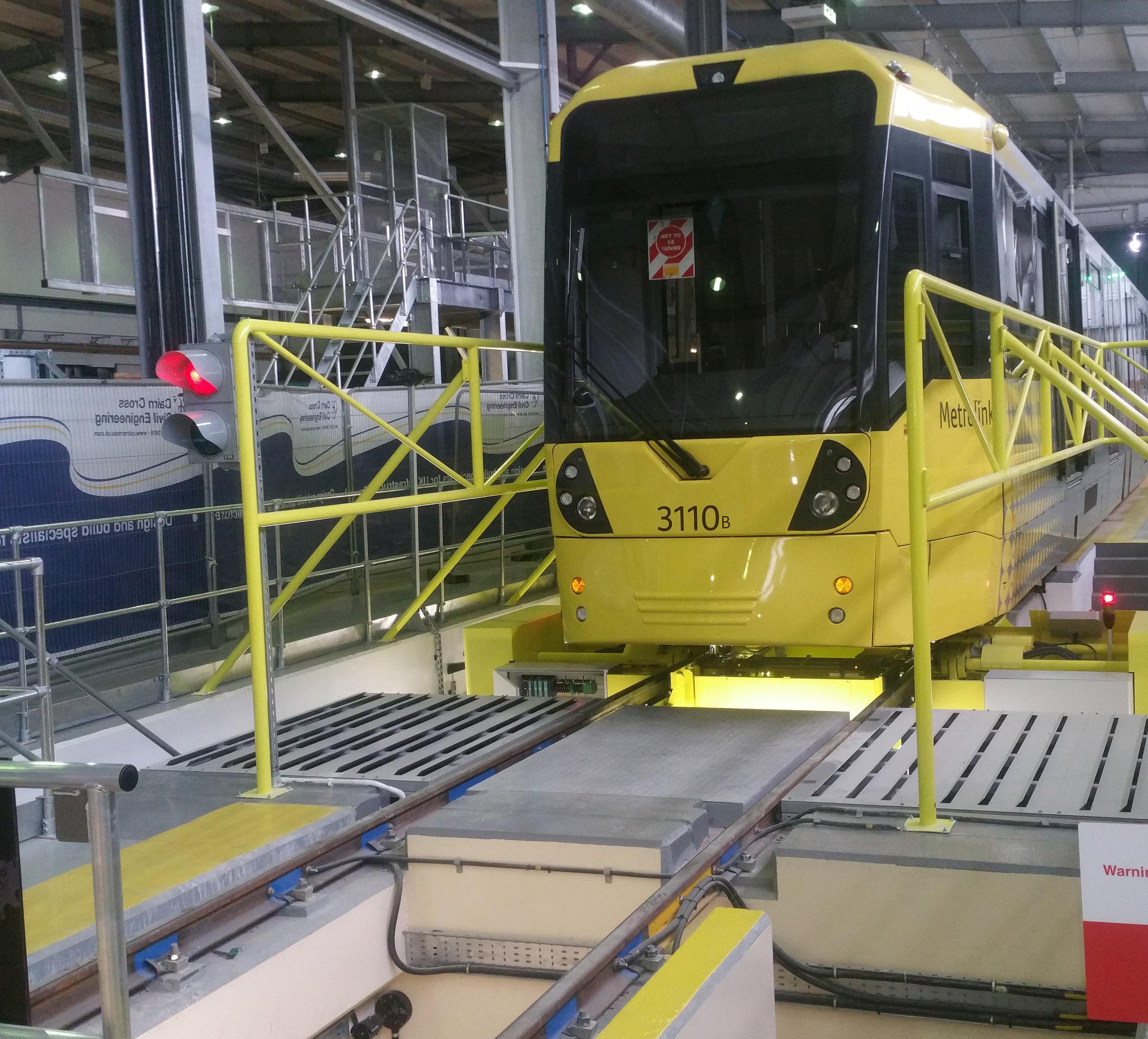
Specialists in rail depots and infrastructure

(Transport for Greater Manchester wheel lathe by Cairn Cross)
All the latest from Network Rail, Transport for the North and industry responses to the latest Government spending announcements
INTERVIEW
12 Sam Sherwood-Hale spoke to Bogdan Godziejewski, 101st President of the Institution of Railway Signal Engineers, about his vision for engaging young professionals in railway signalling's digital transformation and how the next generation can accelerate the adoption of technologies like ETCS and CBTC
THE CHEEK OF IT
Long distance patronage moves ahead of preCovid levels as British rail passenger numbers continue their steady recovery in the fourth quarter of 2024/25
LAYING DOWN THE LAW Court Expands Building Defects Liability 21 VIEWPOINT
Anwen Robinson, SVP at OneAdvanced discusses the challenges faced by desk free workers in passenger transport
23 VIEWPOINT
Alys Lee, Duty Service Delivery Manager at East Midlands Railway, explains how she found her way into a rail career and why her recent apprenticeship recognition means so much 24 WOMEN IN RAIL
Rail Industry Celebrates the Women in Rail Awards 2025
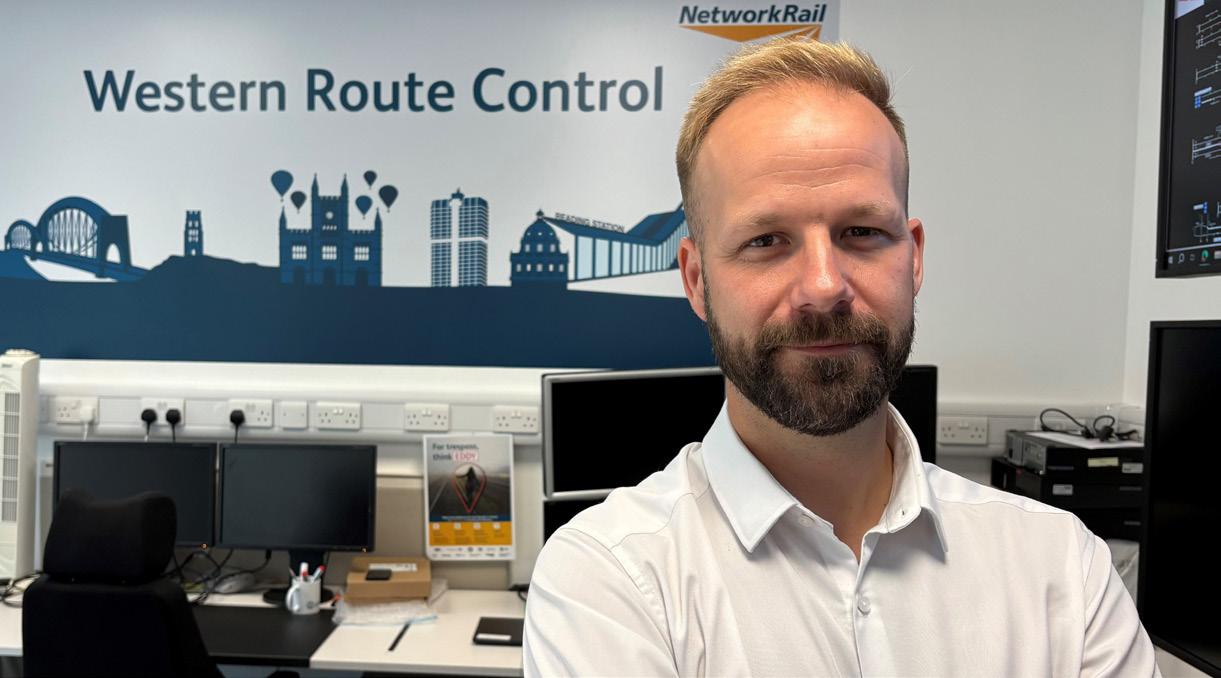
INTERVIEW
Sam Sherwood-Hale spoke to Daryn McCombe about the pioneering joint control function between Great Western Railway and Network Rail, exploring how breaking down structural barriers and aligning decision-making processes is delivering better outcomes for passengers while preparing the Western Route for the transition to Great British Railways 30
Sam Sherwood-Hale spoke to Mel Burrell about Premier Pits' evolution from subcontractors to prefabrication pioneers, their move into rail, and why the industry must abandon traditional concrete solutions
Sam Sherwood-Hale spoke to Chris Showering about IMI's strategic shift from component supplier to systems partner, the challenges of rail electrification, and how building trusted relationships with major OEMs is key
Ellis Patents' Cable Hangers at Cockfosters Depot
Phil Judge, Industry Manager – Railways – WAGO UK & Ireland

Take Your Next Step
Apply today for Certificate, Diploma or Degree courses with CIRO
If you’re looking to take the next step in your career, a CIRO academic course could be the perfect opportunity.
We offer Certificate, Diploma, and Degree-level courses in Railway Operations Management, taught by industry experts and designed to equip you with the knowledge and skills needed to advance your career.
For more information, get in touch with our academic team, visit ciro.org, or join our virtual open evening to hear from past and present CIRO students during a live Q&A session.
Virtual Open Evenings
We’re delighted to be hosting two online open evenings on June 24th and August 5th for those who are considering a CIRO academic qualification. Whether you have already registered your interest for this year’s intake, or are just curious about the possibilities, come along and speak to the team.
To register, email learning@railwayoperators.co.uk


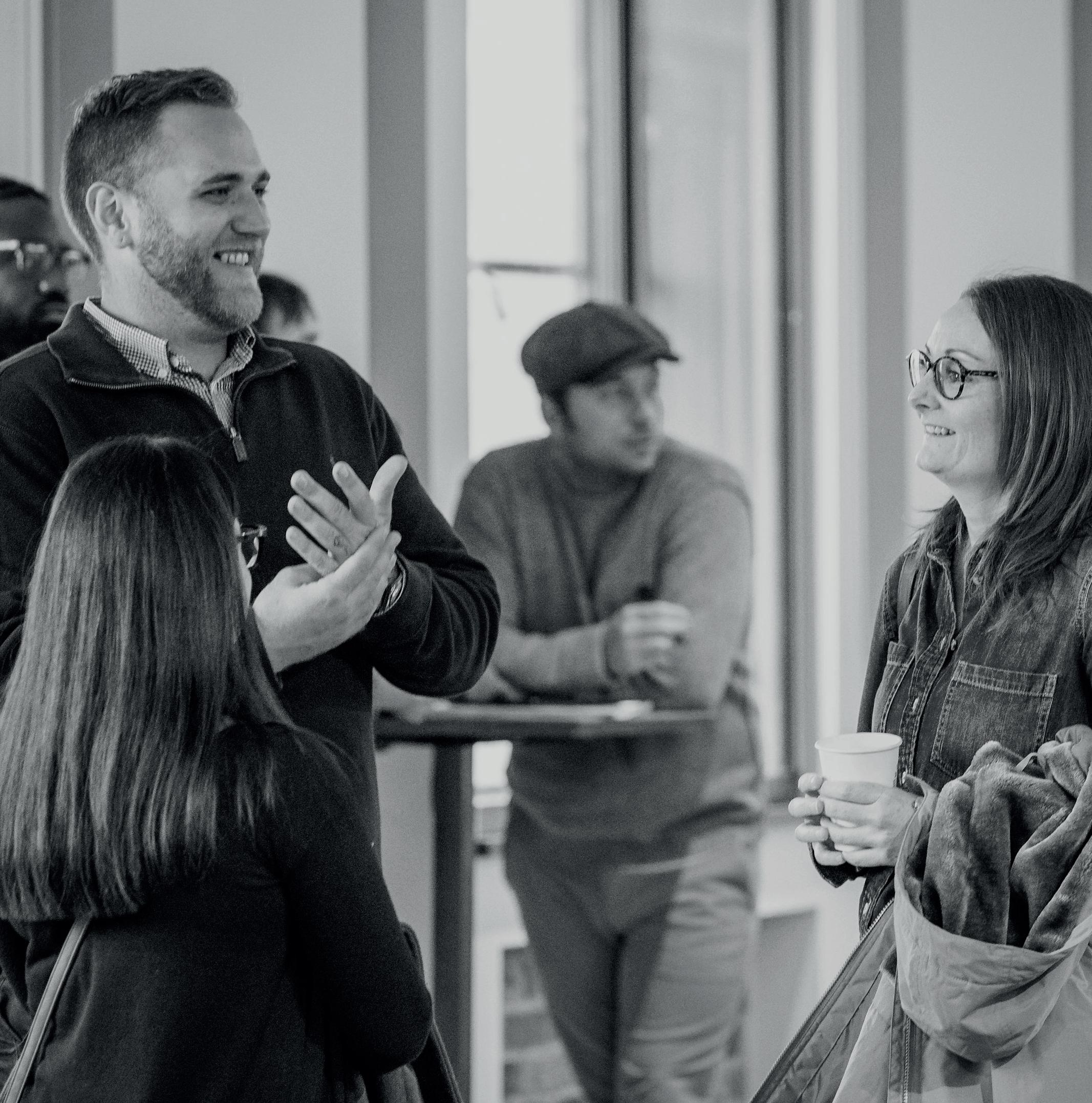




44 SUSTAINABILITY
Sam Sherwood-Hale spoke to Miça Schultz, RSVT Product Lead at Loop, and Angus Townsend, Director of Social Value at Loop, about the evolution of the Rail Social Value Tool, the challenges of measuring social impact in the rail sector, and how the new Sustainable Rail Blueprint Dashboard integration is helping operators enhance their social value reporting across the industry
INTERVIEW
62 Sam Sherwood-Hale spoke to Tristan Lloyd-Baker about RailSense's journey to international success, their IoT sensors, and how remote monitoring technology is transforming railway maintenance from reactive to predictive approaches across global networks
49
51
Steve Medhurst and Nigel Probert from RSA on the role of claims in risk management and lessons from the Troon station fire recovery
Becky Pullinger, head of land use planning at The Wildlife Trusts on why infrastructure projects must integrate environmental considerations from the outset to avoid costly delays and protect our nature-depleted landscapes
53 SUSTAINABILITY
Andrew Cruttenden, General Manager, Trainline Partner Solutions on how rail's green credentials can attract highmargin business travelers as companies face increasing pressure to reduce their carbon footprint
54 SUSTAINABILITY
Hannah McDonnell, Executive Director, Oxfordshire & Gloucestershire Community Rail Partnership (GoCRP), discusses the power of understanding carbon impact and the role and responsibility of the rail sector in increasing this
56 RAIL LIVE REVIEW
A look back at Rail Live 2025 which took place at the end of June
59 RAIL LIVE REVIEW
Petzl Work at Height Solutions
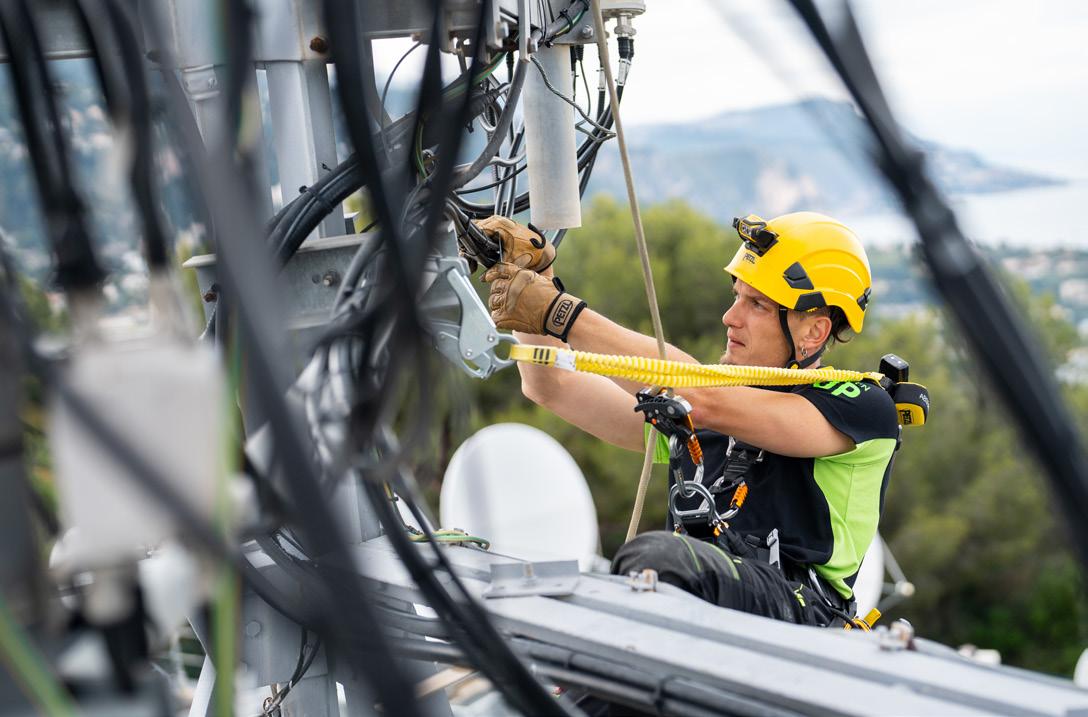
NIS Group, a specialist training provider is delivering a tailored ‘bootcamp’ that will give learners the skills they need to gain employment
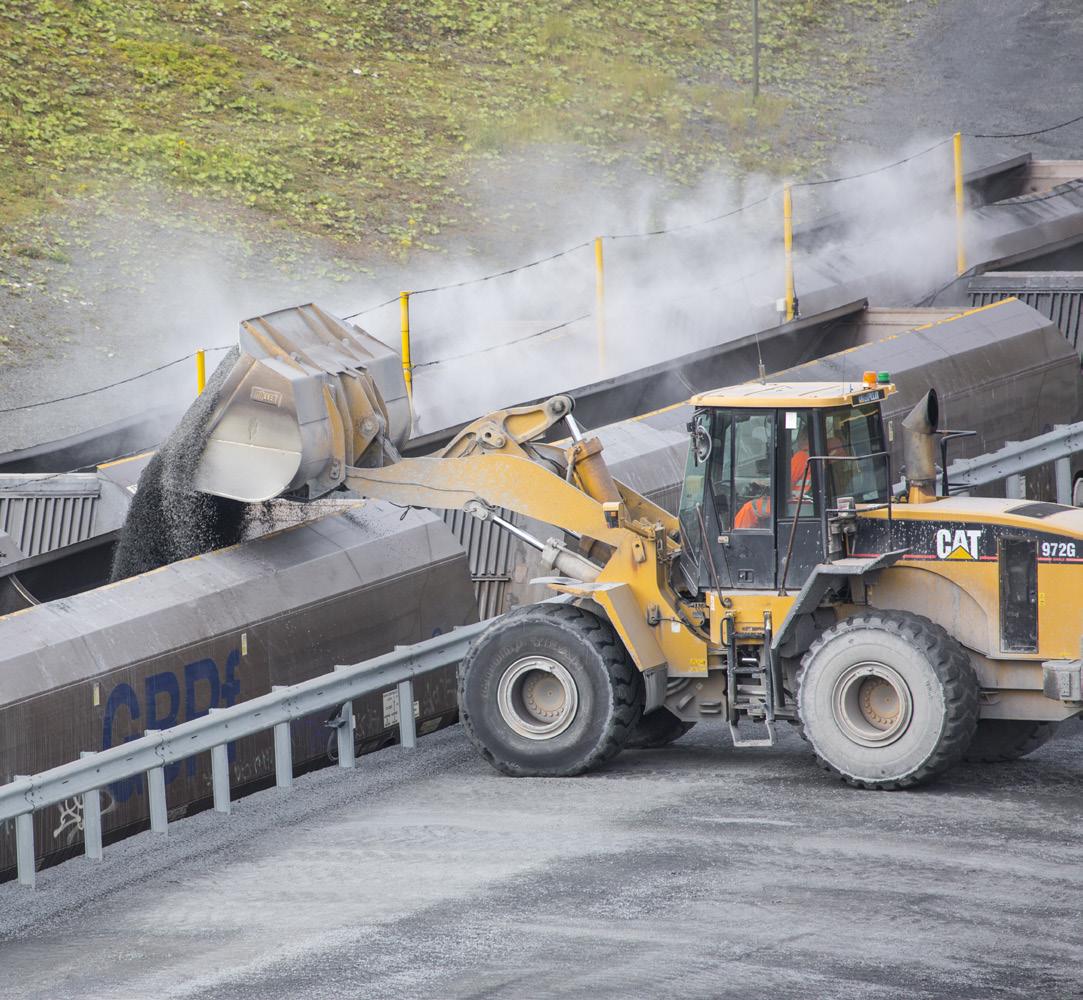


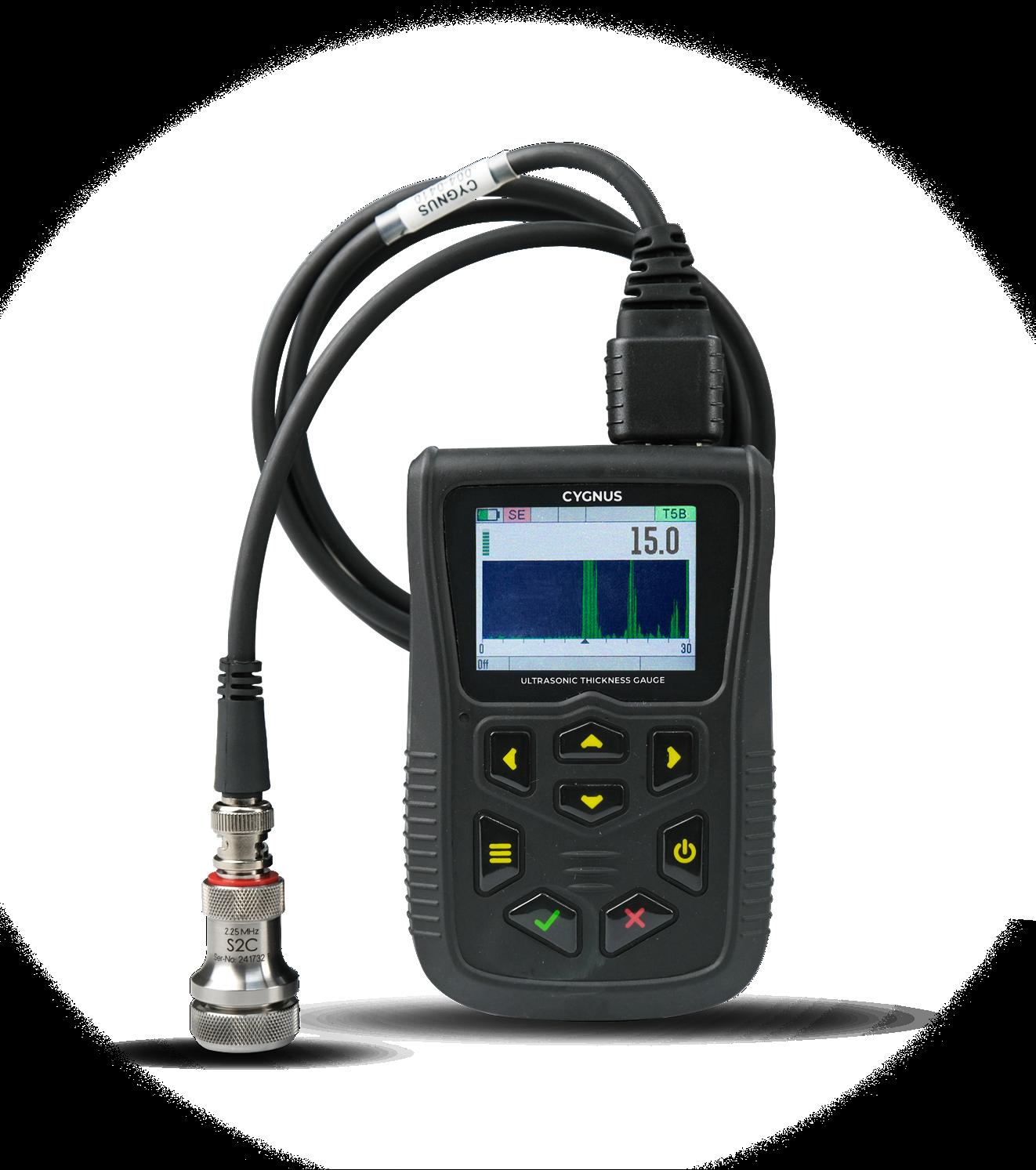
Cygnus 4+ General Purpose
Ultrasonic Thickness Gauge
3 measuring modes, for accurate, through-coat measurements.
Suitable for extreme corrosion.
Live A-scan, intuitive menu and sequential data logging for easy reporting and analysis.

undergroundElevatedthinking,
Gall Zeidler Consultants celebrates 25 years of innovative solutions and engineering excellence, marking a quarter-century dedicated to advancing tunnelling and underground infrastructure.
We leverage our expertise in transportation, infrastructure, water conveyance, energy, and mining to help clients overcome challenges and deliver world-class infrastructure projects sustainably and responsibly. Over decades, we’ve built a diverse portfolio of major projects, many ranking among the most significant worldwide. With a diverse team, we operate globally through nine offices across Europe, North America, Latin America, and Asia.
Scan & SAVE £200*
DISCOUNT CODE RP25
*Only valid when ordering directly from Cygnus Instruments Ltd
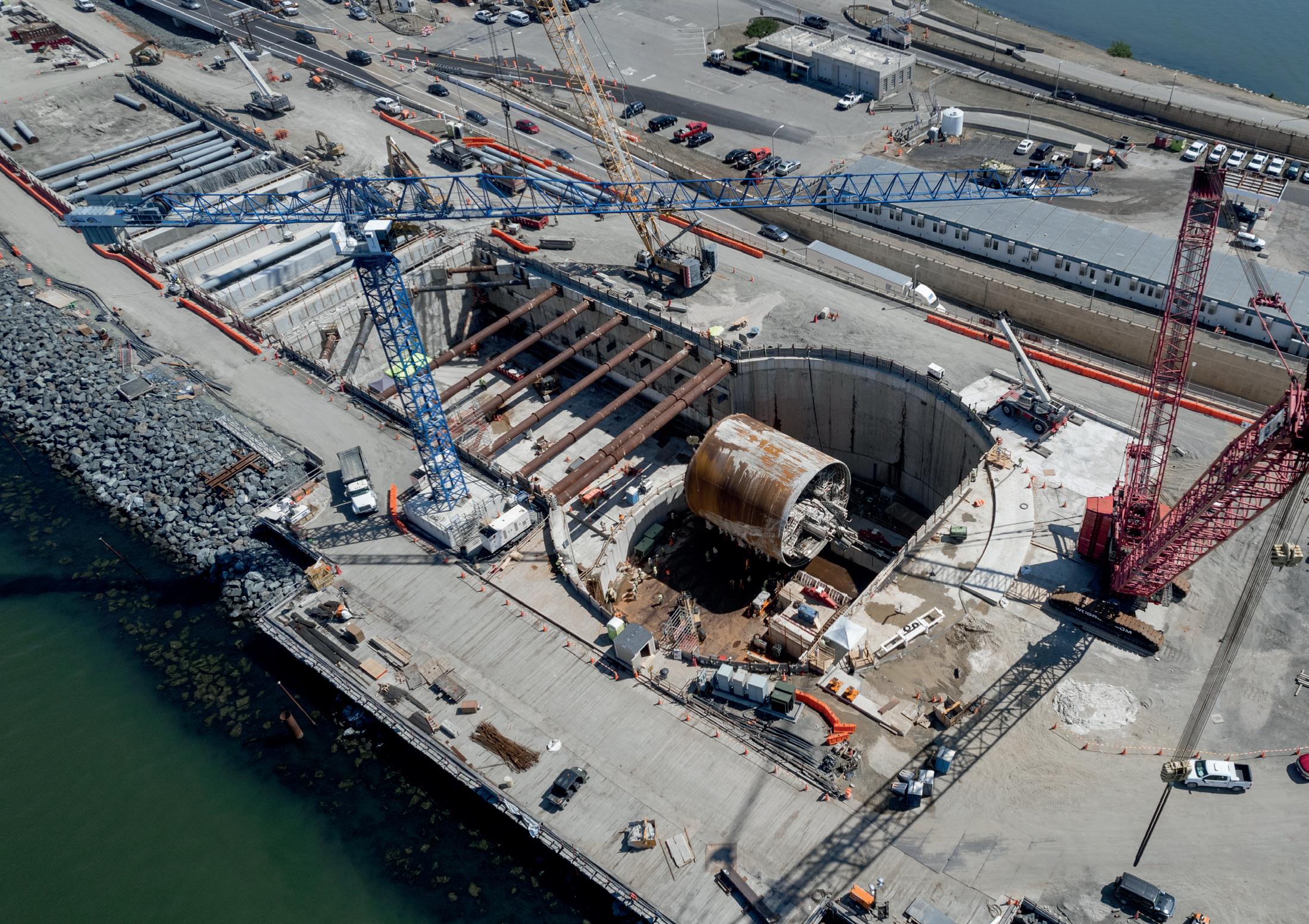

Mayor Announces New Metro Line in ‘Game Changing’ £1.85 Billion Funding Deal
North East Mayor Kim McGuinness today announced the first new Metro line for 30 years will be built as part of a £1.85 billion funding deal agreed with the Government. The new Metro line through Washington stands at the heart of the largest single package of investment ever made in the North East’s transport networks, funding a huge investment in road maintenance, better and safer walking and cycling routes and new bus priority measures.
Mayor McGuinness secured the investment after raising it personally with Chancellor Rachel Reeves and today hailed the deal agreed with Treasury as ‘game changing’ as she delivers on her vision to create the ‘Angel Network’ – a fully integrated sustainable transport network to drive the economy, support new home building and extend opportunity to all.
North East Mayor Kim McGuinness said: ‘When I was elected Mayor I promised voters I would extend the Metro and now, twelve months on, I can today announce that will happen. I am thrilled to say we can now get on with the job of building the first new Metro line for 30 years, at last connecting Washington to the rail network and linking tens of thousands of people to new jobs and opportunity in our growing advanced manufacturing sector.
The Mayor’s deal will provide a major boost towards meeting the total cost of Metro to Washington, with the whole package also expected to include private sector funding. Work to draw up detailed plans for line through Washington is already underway, with the new line, estimated to cost a total of about £900 million, expected to see the first trains run in 2033, just over 30 years since the Metro line through

Sunderland opened. It will serve tens of thousands of homes in Washington, the fourth largest town in England not until now connected to the rail network, and bring people to jobs in the UK’s largest advanced manufacturing zone around the Nissan car factory.
The £1.85 billion announced today will also fund local authority road and public transport projects right across the North East. These include highways maintenance, the roll out of safe and high-quality walking and cycling routes, hundreds of new EV charging points throughout towns and villages, and new bus priority measures to make journey times more reliable. The funding will also take forward the creation of the Angel Network, a fully integrated
sustainable public transport network including contactless travel across bus, Metro and rail and improvements to safety and accessibility where people wait, from bus stops and Metro stations through to large interchanges.
The funding been agreed as the latest phase of the region’s City Region Sustainable Transport Settlement (CRSTS2). It will cover the five-year period from 2027 to 2032.
The agreement is wholly new money and will form part of the North East Combined Authority’s ‘Integrated Settlement’, a fully devolved funding stream that will cover investment in transport, housing investment and economic growth and skills and employment programmes which form the Mayor’s New Deal for North East Workers.
Transport Leaders in the North Plan Rail Devolution
A meeting of Transport for the North's Rail North Committee in Bradford heard that government plans for rail reform offered a huge chance to align the railway to local plan for housing and growth, and enable greater integration with other transport modes such as bus and active travel. The move comes following Chancellor Rachel Reeves announcement last week of more funding to improve transport infrastructure and services in the North's city regions. Political leaders hope Wednesday's Spending Review will build this announcement of billions of pounds of investment to benefit the North's rail network. RNC Chair Mayor Andy Burnham said: ‘This shows that we are serious about taking greater control over our own rail services. For too long decisions have been taken about services and investment by people who don't live in the North and don't use its transport system.
‘Devolution is about correcting that, and making sure that Northerners are at the heart of crucial decision making, so together we can create an accessible, reliable and modern railway.’
The meeting also heard how hundreds of new trains are to be bought for the North's rail network to update the aging fleets currently being used. Northern is to buy up to 450 trains, which could replace two thirds of its existing fleet over the next ten years, while TransPennine Trains (TPT) will buy a further 29 for services across the Pennines linked to the Transpennine Route Upgrade (TRU). Alongside, the Committee reflected on TPT's performance in recent times; cancellations in March dropped to just two per cent and TPT has seen twelve per cent year-on-year passenger growth. The train operating company was brought into public control two years ago due to its poor performance.
Government Allocates £10.2 billion for Rail Enhancements
The Department for Transport has confirmed £10.2 billion of investment for rail enhancements over the next four years, excluding High Speed 2, as part of the government's Spending Review 2025 announcement. The settlement provides a significant boost to inter-city connectivity, with the TransPennine Route Upgrade receiving the largest single allocation of £3.5 billion. The project is expected to reduce journey times between Manchester and Leeds from 55 minutes to 41 minutes, with delivery targeted for the early 2030s. Transport for the North Chief Executive Martin Tugwell welcomed the announcement, saying: ‘We are very pleased with the extra investment in the North's transport infrastructure and services that has been announced. An extra £3.5 billion for the TransPennine Upgrade, support for the reopening of Doncaster Sheffield Airport, and a four-fold increase in local transport grants are all very welcome, especially after last week's announcement of billions for city region transport schemes.’
East West Rail will receive £2.5 billion to continue development of the new railway linking Oxford and Cambridge. The government says this investment will provide new connectivity and unlock growth across the Oxford-Cambridge corridor, supporting housing developments in the region.
Paul Bristow, Mayor of Cambridgeshire and Peterborough, expressed cautious optimism about the East West Rail funding but raised concerns about local priorities: ‘There was silence today on critical upgrades like Ely Junction and the Peterborough Station Quarter. These projects are essential to unlocking growth, jobs, and investment across our region.’
Wales will benefit from £300 million in rail investment, including funding for the Burns Review stations, North Wales Level Crossing improvements, Padeswood Sidings, and Cardiff West Junction. The government has committed to delivering at least £445 million of rail enhancements in Wales to address the country's long-term infrastructure needs.
Leeds station will see a £240 million enhancement programme to improve capacity and relieve congestion at the major Yorkshire hub. The funding forms part of broader improvements to rail infrastructure in northern England.
The spending review also includes provision for progressing the next stage of Midlands Rail Hub West, which will strengthen connections from Birmingham across the West Midlands and to other regions.
Speaking about the Midlands Rail Hub funding, Chancellor Rachel Reeves said: ‘I am providing funding for the Midlands Rail Hub, the region's biggest and most ambitious rail improvement scheme for generations, strengthening connections from Birmingham across the West Midlands and into Wales too.’
Richard Parker, Mayor of the West Midlands, said: ‘The Midlands Rail Hub is about more than trains – it's about opportunity. This investment will unlock thousands of jobs, support new homes and connect our region to faster, greener growth.’
Maria Machancoses, Chief Executive of Midlands Connect, said: ‘This marks a major milestone in this transformational, nationally significant project," adding that it ‘will deliver a step change for passengers, for communities and ultimately for Government's central mission of economic growth.’
Separately, the government has allocated £25.3 billion to progress delivery of High Speed 2 from Birmingham Curzon Street to London Euston. The funding will support what the government describes as a ‘full reset’ of the HS2 programme under new leadership, aimed at addressing longstanding delivery challenges.
The High Speed Rail Group welcomed the news, with a spokesperson saying: ‘This sort of funding agreement creates the platform from which HS2 and its suppliers can carry out the much needed 'reset' of the project and bring clarity on both anticipated costs and programme.’
However, the group warned: ‘We must now work to define what is needed between Birmingham-Crewe to avoid creating Britain's biggest bottleneck in this section of the national railway.’
High Speed 2 spending has been separated from other rail expenditure in the departmental accounts to improve transparency on spending trends over time. Railway Industry Association Chief Executive Darren Caplan said: ‘The Railway Industry Association welcomes the support Chancellor Rachel Reeves announced for UK rail in the Spending Review, and the recognition that the railways are key to delivering economic growth. The Treasury's plans to reassess the Treasury's Green Book investment framework, as social, environmental and regional value are all central to what rail delivers.’
Thomas Knight, Transport Market Lead for UK and Europe at Mott MacDonald, said: ‘Renewed and increased commitment to transport infrastructure investment will deliver transformational projects like East
West Rail, the Midlands Rail Hub and the TransPennine Route Upgrade.’
Richard Whitehead, Chief Executive (Europe and India) at AECOM, said: ‘Having focused on removing planning hurdles and emboldening devolved authorities in its first 12 months in power, this long-term funding cements the government's pledge to accelerate the delivery of essential infrastructure and, in turn, unlock growth opportunities across the UK.’
However, some concerns were raised about delivery capacity. Amish Patel, transport leader at PwC, warned: ‘But investment alone isn't delivery. If we treat each region as an island – tasked with building full delivery and service capacity from scratch – we risk delay, duplication and fragmentation.’
Chris Ball, President – UK & Ireland at AtkinsRéalis, emphasised the broader economic objectives: ‘Infrastructure investment has always been a catalyst for growth and opportunity, but the funding plans today support a clear mission: improve regional connectivity, strengthen energy security, accelerate the build rate of affordable homes and boost socio-economic opportunities.’
Andrew Carter, Chief Executive of Centre for Cities, highlighted the economic potential: ‘The economic underperformance of the UK's largest cities costs the country £50 billion a year. Closing this gap is essential to raising living standards across the country. UK cities lag behind European peers on transport access and economic performance. In Leeds, just 38 per cent of residents can reach the city centre in 30 minutes or less, compared to 87 per cent in Marseille.’
Alasdair Reisner, Chief Executive of the Civil Engineering Contractors Association (CECA), said: ‘The capital investment announced by the Chancellor offers a oncein-a-generation opportunity to revitalise UK infrastructure sector, reinvigorate its supply chains, and create thousands of highly skilled, high-paying jobs.’
Kevin Green, Policy Director at Logistics UK, welcomed the review but cautioned: ‘Nothing, including the economy, moves without logistics. It underpins every sector that our communities and businesses rely on, every day – from keeping the shelves stocked to managing supply chains.’
Daniel Parker-Klein, Director of Policy and Communications for CILT UK, said: ‘Today's announcement recognises the essential role transport, logistics and supply chains play in underpinning Britain's renewal. Electrifying just three miles of railway from London Gateway – the UK's
fastest growing container port – at a cost of less than £10 million, would allow trains to be hauled by electric locomotives all the way to Manchester, Liverpool, Cardiff and Glasgow.’
For London, the government has provided £2 billion of funding between 2026-27 and 2029-30 for Transport for London's capital renewals programme, described as the largest multi-year settlement for the capital in over a decade. London TravelWatch welcomed the fouryear funding settlement as: ‘A welcome step forward in giving greater stability to TfL's finances," but noted disappointment over "the lack of extra funding for key projects such as the DLR and Bakerloo line extensions.’
BusinessForBakerloo called for:
‘Government support and ring-fenced funding to deliver the Bakerloo Line Upgrade and Extension (BLUE)," highlighting the project's potential to deliver ‘up to 107,000 new homes along the route, 150,000 jobs and an additional £1.5 billion in GVA each year.’
Rachel Taylor, government & health industries leader at PwC, noted the wider challenge: ‘To fund the spending choices taken by the Chancellor, substantial savings will have to be made by several departments and wider public services. Salami slicing budgets won't bridge this divide so public bodies will need to make smarter choices, not just cheaper ones.’
The spending review acknowledges the ongoing transfer of rail services into public ownership, which the Department for Transport says will enable the removal of duplication currently spread across 14 train operating companies and create economies of scale.
This transition forms part of the department's commitment to deliver at least five per cent savings and efficiencies, alongside modernisation initiatives and increased use of artificial intelligence in processes.
Beyond national rail projects, the government has committed £15.6 billion by 2031-32 for elected mayors in England's largest city regions to invest in local
transport priorities, including local rail services. City-region transport spending will more than double in real terms by 2029-30 compared with 2024-25.
Jason Prince, Director of the Urban Transport Group, said: ‘The Spending Review –together with the Chancellor's transport funding announcement last week – acknowledges the tireless work of our members in delivering better public transport services, and provides a clear commitment to devolution.’
For strategic long-term rail ambitions in the North of England, the government has allocated funding for further development, with additional details to be set out in the forthcoming ten-year Infrastructure Strategy.
The announcements form part of the government's broader transport strategy, which prioritises investment in northern England and the Midlands whilst giving local areas greater control over how transport funding is allocated and spent.
Contract Awarded to Improve Accessibility at Chalkwell Station
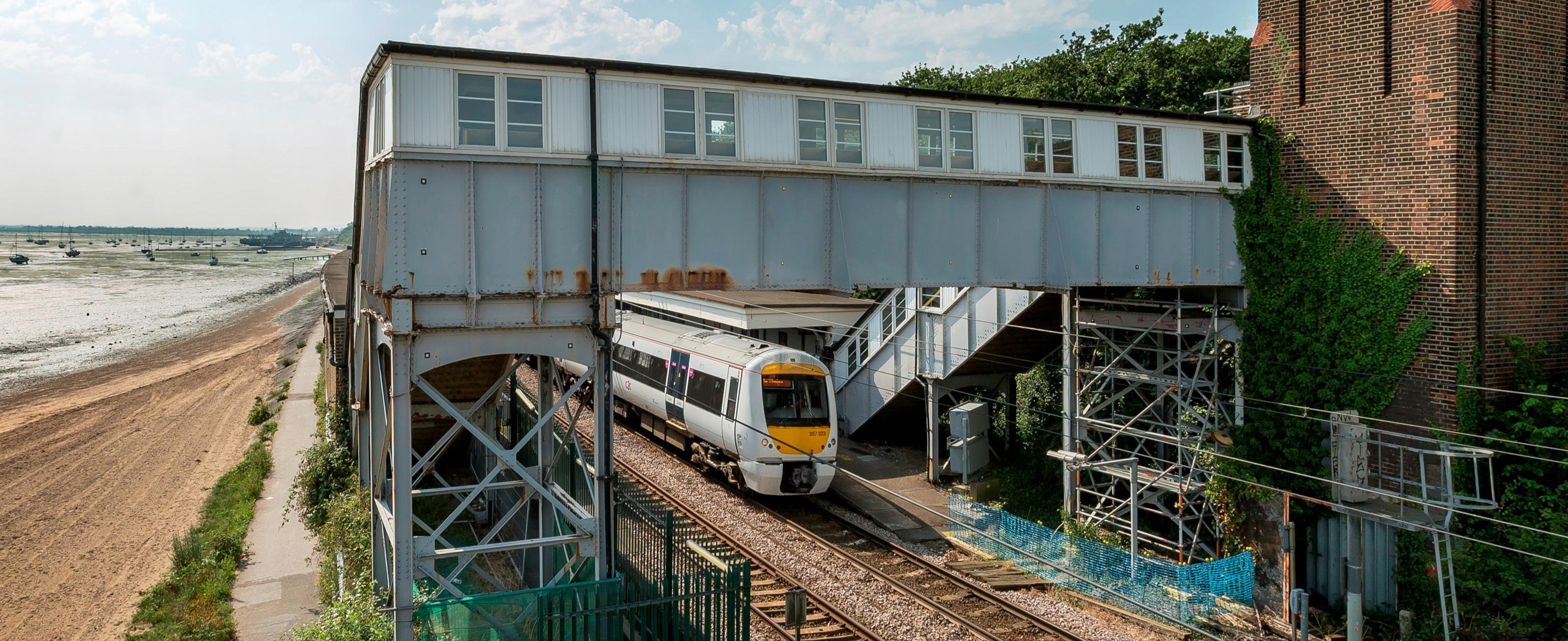
Network Rail has awarded a contract to improve accessibility at Chalkwell station to Octavius, to make the station step-free for the first time. Working in collaboration with c2c and Southend City Council, Network Rail and Octavius will install two new lifts, making it easier and safer for all passengers with reduced mobility, pushchairs or heavy luggage to move between street and platform level. The improvements are being funded by the Department for Transport’s
‘Access for All’ scheme which aims to improve accessibility for everyone across the UK’s rail network.
The work will also include the installation of a new modern footbridge and stairs, replacing the existing footbridge and stairs which is coming to the end of its design life. A disused goods lift shaft at the back of the station building, which has not been in operation for over 40 years, will be removed to make space for the new lift to be installed.
Preparatory works are expected to start this summer, which will include the construction of a temporary footbridge and stairs to allow the old footbridge to be removed this autumn.
Once complete the improvements will significantly enhance accessibility and make rail travel more convenient for everyone using Chalkwell station. Work is currently planned to be complete and lifts open by the end of 2026.
Bogdan Godziejewski
101st President of the Institution of Railway Signal Engineers

Bogdan Godziejewski serves as Rail Director at Mott MacDonald (Netherlands) and was elected as the 101st President of the Institution of Railway Signal Engineers (IRSE) in 2025. He has accumulated 40 years of experience in railway signalling and control systems since beginning his career in 1985 at the Railway Scientific and Technical Centre in Poland. Since joining Mott MacDonald in 2014, Godziejewski has led the firm's digital signalling and train control competence centre, with particular expertise in European Train Control System (ETCS) development and Communication Based Train Control (CBTC) implementation. His project portfolio spans multiple continents, including work in Europe, Australia, and major North American cities such as Washington, New York, Seattle, and Toronto. Bogdan became an IRSE Fellow in 1999 and has served on the Institution's Council since 2018.
Sam Sherwood-Hale spoke to Bogdan Godziejewski about his vision for engaging young professionals in railway signalling's digital transformation and how the next generation can accelerate the adoption of technologies like ETCS and CBTC
SSH: What are your plans to implement your ‘Engaging Generation Unlimited’ vision during your presidency?
BG: I would like to enable young professionals to present their ideas about where we are and where we should go as a discipline and Institution. The demographics among our members are not different from the average in the railway sector. At the same time, we see a growing number of digital signalling and train control projects overall, not only in the UK but also in Europe and elsewhere.
European Train Control System (ETCS) and Communication Based Train Control (CBTC) are extensively being deployed in both greenfield and brownfield environments. This means that in the next few years, we have to attract enough young professionals to keep pace with the growing number of projects. In my perception, there is no time to lose.
In my opinion, the best way is to engage Generation Unlimited. We don't need to tell them what the future will be. It is much more efficient to facilitate their desires and ideas for the future and show that they are important in the ongoing digital transformation process. This is how you will attract younger people. My plan is to implement this vision by improving the visibility of younger professionals.
SSH: What initiatives are you planning to give young professionals the voice you mentioned they need in shaping the future of railway signalling?
BG: First of all, I will invite young professionals to a series of presidential lectures during my presidential year. These will be dedicated to my theme, which means I would like young professionals to explain their vision for the future of the discipline, and also the role which the IRSE should play in supporting their professional development.
‘There's no longer a place in the consultancy world where you can be only a technical specialist. You must at least understand the implications from organisational, legal and financial perspectives.’
based on their ideas, adjust the strategy of the Institution to facilitate their needs for professional development and their role in improving the efficiency of digital transformation within signalling and train control.
SSH: You mentioned that the conference would be different from a standard conference. What was the decision-making process behind that?
BG: The standard way of presentation, where one person presents and then there are questions and answers, might not be enough. We would like to have more interactive sessions where people can really discuss subjects among themselves. This is the way we observe younger colleagues working together. They are much more connected than we perhaps are, and we would like to facilitate that approach.
I also think sharing knowledge, sharing visions and networking is the best way to get connected, and getting connected is a really important point. Within the organising committee of our Aspect Conference, which is scheduled for Yokohama in December this year, we have decided to give special attention to young professionals. We'll have dedicated interactive sessions for them, which will be different from a standard conference, as well as a networking platform. We will have innovator sessions where young professionals can present their ideas and discuss their theses. To facilitate this, we have decided to offer bursaries for our members under 35 to travel to Japan for the Aspect Conference. These bursaries are using a fund created by Frank Hewlett, a past member of the Institution who made a bequest to the IRSE in his will, and from funds established in honour of Alan Fisher, a past president of IRSE. These efforts will ensure the involvement of younger professionals. We will listen, and
SSH: What obstacles do you think you'll need to overcome to achieve greater engagement from younger professionals?
BG: In my career, I have also worked as a manager, helping young people on their career journey. You encounter various characters in life – introverted people, extroverted people. Some will directly tell you what their expectations are, while others will be much more introverted and wonder: ‘What am I doing here?’
I think we must try to facilitate all those to have a vision, and present it. If you have leaders within the young generation, others will likely join and follow. I believe we should not simply dictate things. It's much better to facilitate and have them as partners, who feel responsible and are respected for their actions.
In my daily job, I work with younger professionals and I treat them as partners. They have the same input as I do, and it's much more dynamic. I bring experience, they bring creativity, which is a good mix.
SSH: When you speak about young people, what age group are you envisioning for these initiatives?
BG: We had a long discussion about who is a ‘young professional’. Someone in their 50s who just joined the discipline could also be considered a young professional in some sense. However, we decided to define the category as people under 35.
SSH: What was the thought process behind that decision?
BG: We're looking for openness and creativity. And while we don't exclude anybody, we have to make some decisions. For instance, if we give bursaries, we need to set some conditions, so the age of 35 was determined to be appropriate.
Our focus is really on Generation Unlimited – young professionals who have joined the discipline and are developing. Normally, it takes about 5-6 years to have a qualified person who knows what the discipline is and what they can do within it. It's a question of facilitating them along the way.
SSH: Based on your experience with projects like ETCS and CBTC globally, how might young professionals' vision differ from conventional approaches?
BG: That's a very interesting question. In my opinion, each generation introduces their own way of dealing with signalling projects. When I started my career in 1985, relay technology was predominant. Together with a couple of younger colleagues, we proposed preparing a standard after seeing developments abroad regarding the implementation of electronic interlockings.
We said: ‘We have to start somehow, so let's prepare a standard for implementing electronic interlockings.’ But this was not really supported by my more experienced colleagues – they were very sceptical and said: ‘Computers in safety applications? That will never happen!’ Today, it's the norm.
I think it's up to younger colleagues to change the paradigm of how we think and do things now. There are many technological developments like cloud-based applications, but this technological change must also be supported by changes in processes – for example, how safety systems are homologated for use in railways, or how they are developed.
Other ideas could involve project preparation itself, where the application of modern tools like Building Information Modelling (BIM) and other modelling tools could become the new normal. We don't have this everywhere yet.
Another often-forgotten area is operational maintenance and the use of data analytics. This, along with predictive and prescriptive maintenance supported by machine learning, will surely change how things are performed today.
‘In my opinion, each generation introduces their own way of dealing with signalling projects. When I started my career in 1985, relay technology was predominant. Together with a couple of younger colleagues, we proposed preparing a standard after seeing developments abroad regarding the implementation of electronic interlockings.’
I've observed, especially within the CBTC domain, more attention being given to properly defining roles and responsibilities and focusing on asset management standards like ISO 55000, that provide structure for how maintenance should be done. I think we are missing this in signalling, and I have a few examples, like in Singapore, where this approach was a breakthrough in maintaining signalling systems.
So, I believe the younger generation can use new technologies to create their own ways of doing things. I see a lot of innovation, new tools being developed, but it will be up to the young generation to determine how to use them.
SSH: When you talk about machine learning tools, do you think this is an area where they would have the most impact? There's a generation that's going to learn how to use these tools, and then there's going to be another generation that will take the technology for granted. Are you concerned about how young people might rely on these tools because they're so effective?
BG: I think the answer is that we don't know yet. It's really up to those coming through. In 1987, when I was developing specifications for electronic interlockings, my older colleagues told me: ‘You will never get safety approval for them.’ Today, the same concern exists about machine learning and AI, with everyone asking: ‘How do you make it safe?’
We'll see – it's still very open. It's a question of changing the paradigm, of thinking about how we can use these tools. We don't want artificial intelligence that gives wrong answers; in a safety environment, that can’t happen. I think in three to five years from now, we'll see a real change in this area.
SSH: Is this something you're working on with Generation Unlimited?
BG: I can tell you about my own practice at Mott MacDonald. I work primarily with younger people. I've helped many of them with their university graduation projects here in the Netherlands, trying to spark their interest in signalling and train control, and many of them stay with me. That's where we create a mix of creativity and experience as we work on various projects. What often happens is that they're assigned to a project and stay on it for several years, which provides good experience as they see the whole life cycle. What I do differently is encourage them to look around while they still have time. I take them to various projects so they can benchmark and see things done in different ways. There's no better or worse approach – just different ones – but through comparison, younger colleagues can learn much faster. Some stay with me, some go to industry partners, but I see them all growing.
SSH: Do you keep in touch with these young people throughout their careers?
BG: Yes, of course. I stay in contact as friends and colleagues. Some stay in the Netherlands, some have gone to Canada and Australia, some went into industry and disappeared into that world, but I still stay in touch.
SSH: What is your personal perspective on signalling and train control projects?
BG: I started my international career as a researcher, working with the European Rail Research Institute, coordinating and managing several teams of 15-20 people on the development of safety applications like ETCS and harmonising functionalities of electronic interlockings at the European level.
I also completed management studies, including an MBA, here in the Netherlands and in the US. Through these studies, I learned that the world is different from just the engineering part. That's why benchmarking and looking beyond just the technical aspects to consider operational, financial, and organisational perspectives, is very important.
In the past, we typically focused primarily on technology and technical aspects, but that's no longer sufficient. You have to take a more comprehensive view to understand the complexity of projects and try to unlock
‘We don't need to tell them what the future will be. It is much more efficient to facilitate their desires and ideas for the future.’
that. My first projects were very technical, then we moved to design-build contracts where lawyers worked alongside us, so things changed dynamically.
There's no longer a place in the consultancy world where you can be only a technical specialist. You must at least understand the implications from organisational, legal and financial perspectives. This is what I want to convey to younger colleagues.
SSH: You mentioned visiting projects to compare approaches. How many of these visits have you done?
BG: As a competence centre within Mott MacDonald group for digital signalling and train control systems, we have the opportunity to work in Australia, North America, Europe and the UK. From every project we learn new lessons and compare their efficiency. Although technology stays mostly the same, what matters are ways of procuring, organising and prioritising the signalling projects. With some 50 projects of different sizes and at various stages of implementation, you are able to understand what works and which approach offers the best outcome.
SSH: It sounds like engineers were once more like Renaissance people who needed to know all elements of the job. Do you think people became more specialised over time, and now with these new tools, it's possible to have a more all-encompassing vision of your job?
BG: Exactly. With these tools, the technical part will become less dominant, creating space for a better understanding of the overall project and process.
SSH: Regarding the Tyne and Wear Metro business case, which involves replacing their original signalling system from the 1970s and 1980s, how do you see young professionals reshaping this digital transformation in signalling? What unique perspectives might they bring that experienced engineers might overlook?
BG: The case of Newcastle is special because it's a network that connects with Network Rail, so isn’t a standard solution where you can simply apply CBTC and that's it. You have to think carefully about what to do there.
Each property has its own challenges in dealing with brownfield modernisation, and this applies to Newcastle as well. The key is to look from a lifecycle perspective, and this is where the younger generation can offer a different pace of digital transformation process.
I might be considered a little cautious, but young professionals often don't carry the same historical baggage, so they can think more efficiently about implementation and move beyond old technologies and old operational rules. For example, in New York, they decided to create CBTC overlay systems. We see similar overlay approaches in the UK as well, because infrastructure managers are reluctant to quickly remove old equipment.
However, I think if you apply pure CBTC or pure ETCS, it would be much faster, more efficient, and you would get better results. I believe the younger generation can implement digital transformation much faster than we currently do (typically a brownfield modernisation takes between five to ten years on a metro line), and this is my hope.
If we look at German railways, for instance, they've said that at their current pace, it will take them 60 years to implement ETCS, by which time it will be obsolete. We need to find ways to accelerate implementation, and those entering the industry can help with this in the preparatory phase with better tools, and during testing and commissioning.
Finally, for those further into their career, implementing digital transformation may require a mindset change, but for those starting off in theirs, it is the norm.
SSH: Why do you think younger people learn to use these tools much faster?
BG: Because they are born with the digital technology. If I look at my son, when I'm struggling with my mobile phone settings, he just takes it, looks at it, and fixes it instantly because for him, it's innate – he was born with it.
SSH: What skills do you believe the next generation will need to develop to maintain legacy systems like the one in Newcastle and implement new digital solutions?
BG: You still need time to understand the basics. The fundamentals of signalling have remained largely the same over 200 years of railway history. There are still different technologies and different mindsets about how to translate those basics into modern systems and how to minimise human factor impacts.
This is where I think we still need a mix of experience and knowledge base, which is what IRSE is willing to provide – bringing those basics to young people while also creating platforms for exchanging ideas and collaborative work. With software-based
‘Software-based systems are much more complex, which is why you need cooperation and common understanding... All of this requires a collaborative approach, which I think young professionals can achieve more easily.’
systems, there's no other way but to work collaboratively.
I know people in Europe who work with colleagues from around the world on software-based systems. It's a much more connected environment than having a single specialist working alone to develop something. It's truly collaborative work, completely different from how we did things before.
Previously, we worked in project silos, not only within disciplines but also between disciplines. Now, with software-based applications, these silos are being broken down. In many organisations, I see those developing projects and those operating or maintaining projects as complete silos, whereas with software-based systems, they have to create task forces or common groups to get a comprehensive overview and foster continuous improvement of those involved.
Software-based systems are much more complex, which is why you need cooperation and common understanding – why are you implementing things a certain way, how will operators work with these systems, how will maintainers be able to maintain them, what is the relationship between the property owner and the supplier? All of this requires a collaborative approach, which I think young professionals can achieve more easily.
SSH: How difficult do you think it will be to break down these silos?
BG: My idea is to elevate what they are already doing in their daily work – giving them a platform to talk and explain how organisations should change. This is important not just for infrastructure managers and railway operators, but also for IRSE. I want us to listen to them carefully and draw conclusions about how these organisations should evolve because if we can achieve this, we'll create a platform for collaborative working.
SSH: What was your relationship with IRSE like before becoming President?
BG: It's about people – it's a people's organisation. I joined IRSE in the late 1990s, and because of the job I was doing, I was directly offered Fellow status. Many people I work with internationally, colleagues from the Netherlands and all over the world, are also active members of the IRSE. We meet at conferences, seminars, events, and other occasions, so the organisation brings people together.
I've been on the Council since 2018. To become President, you need to understand how the organisation works, and I think that's a good approach. My colleague Jane Power, who is now Past President, still has a very active role within the Institution. It's a longer trajectory – it takes about ten years if you decide to step into the management level of IRSE, not just one or two years.
SSH: Where are we in your personal vision? Is this year one of ten, or are we halfway through your plan?
BG: For me, the priority during my presidential year is to get things moving. The vision of engaging young professionals is closely linked to the digital transformation of our discipline. This requires continuous improvement and is more about a guiding principle than a time-limited project. I hope that through the various activities during my presidential year, young professionals will become more connected. Later, I will transition into an observer in a supporter role, confident that they will manage things perfectly on their own.
SSH: How do you envision IRSE adapting its licencing, certification, and knowledgesharing processes to prepare young professionals for this increasingly software-driven field?
BG: About a year and a half ago, we started developing a new strategy for the Institution. We created several task-andfinish groups, including a review of the licensing scheme and many others, to understand what's needed for the future. The IRSE licensing scheme has been around for 30 years, and it works well, but with all the changes in this software-driven field, we need to understand what's needed going forward. These strategy groups are working now, and I think by the end of this year, we will be able to consolidate their results.
SSH: What's the feedback process for developing that strategy?
BG: Each task-and-finish group works differently depending on their needs. We have an IT group looking at what instruments are needed within the institution to improve the IT platform for internal and external users. We have a licensing review group that has sent out a
questionnaire to members to see what they like, what they don't like, and what they feel they need for the future.
We're also engaging with large organisations like Network Rail to interview them and understand their vision for future licensing schemes and how they see cooperation with the institution. All these inputs will be brought together into one strategy, which we expect to have ready by the end of this year or early next year. This strategy will prepare the institution for the next five to ten years.
SSH: What role do you see for young professionals in bridging traditional organisational boundaries, and how can IRSE foster these collaborative skills?
BG: Digital signalling and train control systems broke these boundaries long ago. Most of the intelligence of signalling and train control is now on board trains, so the Institution needs to engage train operating companies as well necessitating an even more collaborative approach than before.
We are working to approach train operating companies and see if through this next generation, we can break the silos I spoke of earlier.
SSH: When did your vision for the future of railway signalling first start developing?
BG: I think it's very much related to my work at Mott MacDonald. I've been with the company for more than ten years now. When I arrived, I saw colleagues working independently on projects, and I observed digital signalling and train control gaining momentum.
We started a competence centre here in the Netherlands to support group digital skills. Then I looked around to see who could help me with this and realised there were very few people in the sector, even though it's an engineering field, ready to work with modern systems and available to work for projects abroad.
That's why we approached universities –we work with the Universities of Delft and Twente in the Netherlands – and got the opportunity to help graduates with their final university projects. Many of them stayed, and that's how I built the competence centre team and developed the idea that I really need this younger generation.
SSH: Is this a programme that could be developed EU-wide or even into the UK?
BG: Many colleagues have different approaches, but they face the same problem whether in New York, Singapore, or Amsterdam – how to attract the younger generation. Some created rail academies. Singapore has one, there's one in Europe, and within our company, Mott MacDonald, we also have a special programme for graduates. I think these are good examples of how to attract younger colleagues.
‘I bring experience, they bring creativity, which is a good mix.’
SSH: You mentioned Singapore earlier. Was there a specific example from there that you wanted to reference?
BG: Yes, the LTA (Land Transport Authority) started cooperating with the University of Singapore to organise specific interactive seminars for students and graduates. I am visiting in September this year to join such a seminar and observe how LTA in Singapore works with students and graduates.
Singapore is also a very specific case regarding data analytics. About ten years ago, they had a significant issue with their brownfield environment – they couldn't determine why systems were failing. They assembled a small team of data analytics specialists from the University of Singapore and asked them to look at the vast amount of data from these systems to find failure patterns.
These individuals had no understanding of signalling at first, but supported by SMRT they developed new algorithms and discovered that, for example, thresholds were not properly set – the systems weren't actually failing, but the thresholds were too low. After solving these immediate problems, the digital analytics team was incorporated into the maintenance operations of the SMRT.
They now use various tools for predictive and prescriptive maintenance, and you can see the results in the network's reliability. While we're discussing in Europe how to improve reliability, they only have one or two major failures per year, where a ‘major failure’ means a delay of more than 15 minutes.
I think this demonstrates how you can introduce data analytics without necessarily needing university-trained signalling engineers. You can bring data analytics specialists into the discipline and enrich it that way. There can be various approaches to reaching the goal.
SSH: Does the age of the signalling and train control systems factor into young people's interest? Might they feel closer to newer infrastructure?
BG: I believe it's ultimately about the job itself. For younger people it's important to find work and a work environment where they can experience joy and see real prospects for personal development. It's also a matter of leadership and mentorship – we must engage young professionals and ensure that what they are doing aligns with what they truly want to do.
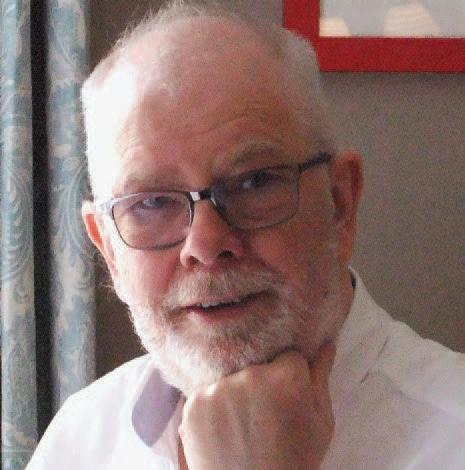
by Chris Cheek
Winter Warmer from Rail Customers
Long distance patronage moves ahead of pre-Covid levels as British rail passenger numbers continue their steady recovery in the fourth quarter of 2024/25
Demand growth in the British rail industry slowed again during the winter: non Elizabeth Line passenger numbers were 5.6 per cent higher than the same quarter in 2024, reaching another new postCovid high. Including traffic on the recently opened line, growth was 5.9 per cent.
Overall, demand rose to 97.4 per cent of pre-Covid levels, according to National Rail Trends statistics, published by the Office of Rail and Road (ORR). However, without the Elizabeth Line, the recovery was limited to 86.5 per cent.
The provisional figures cover the fourth quarter of fiscal year 2024/25, finishing at the end of March: across the network, 429.5 million passenger journeys were made during the twelve-week period, up from 405.7 million in 2023. Between them, they covered 15.8 billion passenger kilometres, 1.3 per cent up, and paid a total of £2.825 billion in fares, 9.5 per cent more than in 2024.
Looking at demand by ticket type, advance tickets were up by 13.6 per cent, taking sales 81.4 per cent higher than before the pandemic. Anytime peak and offpeak fares were up by 6.3 and 4.2 per cent respectively, leaving them 27.0 per cent and 32.0 per cent ahead of the pre-Covid figure. Season ticket holders made 5.6 per cent more journeys than last year, but the 60.1 million total remained 62.5 per cent below the 2019 figure.
Aside from the Elizabeth Line, services in London and South East moved ahead by 4.4 per cent during the quarter, but this was once again the slowest growing sector. Between them, the operators carried 240 million passengers in the twelve weeks, but
slipped back to 18.7 per cent below 2018/19. Amongst individual operators, West Midlands Trains saw the fastest growth on 9.8 per cent, followed by c2c on 7.2 per cent and Chiltern on 7.0 per cent.
The Elizabeth Line carried 59.6 million passengers in its eleventh full quarter of operation, 7.5 per cent up in the year, meaning that the line accounted for 13.9 per cent of the national network’s patronage in the January to March quarter, second only to GTR’s 17.8 per cent.
The long-distance InterCity sector saw demand increase by 7.7 per cent compared with 2024, taking passenger numbers to 36.9 million, 3.7 per cent above 2019 levels. The passenger kilometre figure was 5.3 per cent ahead, leaving it 3.8 per cent short of pre-pandemic levels. Revenue on the InterCity services moved up 9.1 per cent (6.1 per cent after inflation), but remained 19.7 per cent down in real terms on 2018/19. LNER saw the largest growth, on 16.7 per cent, taking the business to 26.3 per cent above pre-Covid levels.
Next came Cross Country on 14.3 per cent, just 1.4 per cent short of 2018/19 levels. Great Western grew by 7.4 per cent, but remained eleven per cent short, whilst EMR grew by 6.7 per cent, taking passenger numbers 20.7 per cent above pre-pandemic levels. Avanti West Coast saw 2.3 per cent growth, still 13.7 per cent down from 2018/19. Caledonian Sleeper, though, saw a 5.2 per cent dip in demand.
Amongst the regional franchises, total patronage was eight per cent up on 2024, but remained 6.3 per cent below 2019 levels. Amongst individual TOCs, TfW led the pack, advancing by 12.6 per cent, but still 4.7 per cent short of its 2019 figures. Northern
bounced back from a drop in the last quarter to be 9.3 per cent up, remaining 7.3 per cent short of full recovery.
TransPennine came next, with passenger numbers up by 8.5 per cent during the quarter, reducing the shortfall against their 2018/19 figure to 6.8 per cent. Merseyrail also bounced back from a loss in the autumn, with a rise of 7.7 per cent, taking demand to 25.2 per cent below on 2018/19. Scotrail saw a 2.2 per cent rise, despite the reimposition of peak fares in October, leaving it 14.6 per cent short of pre-Covid levels.
Amongst the non-franchised operators, First’s operations at Hull Trains saw growth of 8.7 per cent, taking it to 44.8 per cent above pre-Covid levels, but Lumo experienced a small one per cent fall. East Coast rivals Grand Central also saw a small fall, of two per cent, but remained 12.7 per cent ahead of their pre-Covid patronage. Competition from the Elizabeth Line still affected Heathrow Express. Patronage grew by 4.4 per cent on the quarter, partially reversing five quarters of decline. This left patronage on the premium route 28.7 per cent down on 2018/19.
Rolling year figures
The national totals for the twelve months ended 31 March show growth of 7.2 per cent compared with 2023/24, 6.8 per cent excluding the Elizabeth Line. Compared with the last pre-Covid year of 2018/19, the figure was just 1.4 per cent lower at 1,728.7 million. However, excluding the Elizabeth Line, passenger numbers remained 12.7 per cent short of the 2018/19 figure. Passenger kilometres travelled were 7.5 per cent higher at 63 billion, whilst passenger revenue grew by 11.1 per cent to £10.7 billion. Adjusted for inflation, revenue was 4.8 per cent up on the year but remained 16.4 per cent below pre-pandemic earnings.
As in previous quarters, performance varied between the sectors. Passenger journeys in London and South East excluding the Elizabeth Line were 6.7 per cent up on the year, but still 15.6 per cent below 2019 levels. Regional networks saw growth of 9.1 per cent on the year but remained 7.7 short of full recovery. Patronage on the InterCity routes was 8.4 per cent up on the year, and moved past the 2018/19 total by 2.3 per cent, despite a real terms shortfall in revenue of 19.6 per cent.
Comment
This quarter saw some measure of economic growth alongside falls in inflation and interest rates. It was also a relatively mild winter, with fewer severe weather incidents than some past years. A slightly more encouraging context for rail patronage with retail sales rising. All this was before the storms of the second quarter, with Trump tariffs, a new war on the Middle East and the increases in inflation.
The steady recovery in patronage was maintained in all the TOCs bar one, whilst
NEWS IN BRIEF
MOTT
MACDONALD REAPPOINTED AS ADVISOR TO DFT
Mott MacDonald has been reappointed by the UK’s Department for Transport (DfT) to serve as its Futures and Foresight Support Advisor, continuing its support of DfT in embedding ‘futures thinking’ into its strategic planning and decision-making processes, enabling the department to explore long-term trends, uncertainties and emerging challenges. The appointment falls under the DfT’s STARThree framework (Specialist Technical and Commercial Advice for Rail and other transport systems) with Mott MacDonald continuing in its advisory role through to May 2027.
RSSB CARBON LITERACY TRAINING COURSE
The Rail Safety and Standards Board (RSSB) is now accepting registrations for its Carbon Literacy for Rail training program, certified by the Carbon Literacy Project. Scheduled for July 24, 2025, the remote course targets all UK rail sector employees, offering comprehensive climate change education and practical carbon reduction strategies. Participants will develop workplace carbon reduction action plans and learn stakeholder influence techniques. The program includes HS2 case studies and results in official carbon literacy certification upon completion of all assignments and assessments.
there were also small falls in two open access operations – Caledonian Sleeper, Grand Central and Lumo. The winter quarter is the quietest time of the year, especially for leisure traffic, with demand typically dropping by two or three per cent compared with the autumn.
The distinction between the TOCs that traditionally relied on commuters, such as Merseyrail and those in London and the South East, and the rest of the network is becoming clearer. Five of these – Merseyrail, c2c, Chiltern, South Western and South Eastern – remain more than 20 per cent short of their pre-Covid patronage numbers. Meanwhile, the Elizabeth Line continues to power ahead, growing by 6.2 per cent during the year, carrying a total of 234 million passengers.
The contrast with the long distance market is stark. The sector passed the milestone of exceeding 2018/19 passenger journeys during both the quarter and the rolling year – though this is being driven by two operators on the East Coast and Midland Main Line routes, LNER and EMR. LNER’s growth of 16.7 per cent during the quarter was streets ahead of the rest of the network, powering it to a patronage figure no less than 26 per cent ahead of its preCovid peak. The figures for the year show growth of 10.2 per cent, and a total 19.5 per cent ahead of its previous high in 2018/19. Over on the Midland route to Sheffield and Nottingham, EMR’s quarterly growth was less spectacular, at 6.7 per cent, but the total was more than a fifth higher than the same quarter in 2019. The annual growth achieved was 8.9 per cent, exceeding the prepandemic total by 17.9 per cent.
The other long distance operators remained short of full recovery in 2024/25, Avanti West Coast by 11.6 per cent, Cross Country by 7.0 per cent and Great Western by eleven per cent – though the latter comparison continues to be affected by the opening of the Elizabeth Line.
Looking at growth, mention must be made of the strong result achieved in Wales – helped by investment in new
‘LNER's growth of 16.7 per cent during the quarter was streets ahead of the rest of the network, powering it to a patronage figure no less than 26 per cent ahead of its preCovid peak.’
rolling stock, including the tram-trains and the electrification for the Valley Lines. The quarterly growth of 12.6 per cent contributed to an annual growth rate of 19.4 per cent. The annual figure is still 6.4 per cent short of 2018/19, but the trend is clearly in the right direction and represents a strong market response to the investment.
Once again, though, the problem remains revenue. The best example is the InterCity sector, where patronage might be above pre-Covid levels, but revenue most certainly isn’t, being 19.6 per cent behind in real terms.
Looking across the whole network, revenue yields per passenger kilometre are 9.3 per cent down overall, with all ticket types showing a decline, ranging from 12.9 per cent on advance tickets to 3.6 per cent on remaining season ticket sales. The position on advance tickets is particularly surprising given the flexibility to adjust these ticket prices in response to shifts in demand – of which there is no shortage, given the 78 per cent increase in the number of passengers using them since 2018/19. This is surely one area of freedom that should surely be restored to industry managers – a vital change in years to come if the demands on the Treasury for subsidy are to be reduced.
Meanwhile, credit is due to the management teams in both privately and publicly owned TOCs for the huge progress that has been made in recovering the industry’s market position from the dark days of 2020. Problems remain, but it is a huge achievement for which little credit is given by the media or politicians.





LAYING DOWN THE LAW
by Martin Fleetwood
Court Expands Building Defects Liability
The UK’s Supreme Court widens the reach of the defects repair provisions within building safety laws
The Building Safety Act 2022 (the BSA) came into effect on 1 April 2023 and was introduced to focus on improving building safety and accountability, particularly for higher risk buildings which are typically over eleven metres in height and are dwelling places. The Act clarifies the responsibilities of those involved in the design, construction and management of such buildings and was introduced in response to the Grenfell Tower fire.
Within a rail context, new housing often forms part of developments on former city/town centre goods yards and siding complexes and around new station developments. Such developments are often built to provide funding for relevant adjacent railway projects.
The UK Supreme Court (the Court) has recently provided clarity on the reach of the BSA and associated legislation relevant to defects claims in its recent judgement in URS Corporation Ltd v BDW Trading Ltd. The Court was asked to decide how the various construction laws should be interpreted in the light of the BSA, to set the scope of the duties for parties involved in such construction projects and whether parties were entitled to claim certain types of cost related to these duties. The specific facts of the case will be considered at a later date, now that the legal principles have been decided.
Background to the case
After the Grenfell tower fire, BDW Trading Ltd (BDW) conducted investigations into its historic developments and discovered design defects in two sets of multiple highrise residential building developments. To protect itself, BDW decided to carry out
remedial works on the defective buildings, although no claim against BDW relating to the defects had been threatened or made by any third-party owner or occupier.
URS Corporation Ltd (URS) had been appointed by BDW to provide structural design services in connection with the buildings BDW repaired. BDW claimed against URS for the costs of BDW carrying out those remedial works (described as ‘losses’ under the contract). URS challenged the claim on the basis that:
i. the scope of URS’s duties did not extend to covering the losses claimed by BDW; ii. BDW was not entitled to recover those losses because when it carried out the repairs BDW no longer owned the developments; and iii. BDW was not liable for the repairs in any event due to the expiry of a relevant time limit.
The Court dismissed all of the grounds of URS's appeal on the basis detailed below.
Putting the repair works into context
The Court rejected the suggestion that because BDW had decided to repair defects on developments no longer owned by it and without any enforceable legal obligation to do so, such economic losses (incurred by completing repair works) were voluntary and could not be recovered. It concluded that there was ‘a strong case for contending that BDW was not exercising a sufficiently full and free choice so as to be regarded as acting voluntarily in undertaking the repairs’ as:
i. if BDW made no repairs, there was a risk that the defects would cause personal
Martin Fleetwood is a Consultant at Addleshaw Goddard’s Transport practice. The Rail Team has over 30 lawyers who advise clients in both the private and public sectors across a wide range of legal areas. As well as contractual issues, the team advises on operational matters, franchises, concessions, finance, regulatory, property, employment, environmental and procurement issues.
Disclaimer: This article is for informational purposes only and does not constitute legal advice. It is recommended that specific professional advice is sought before acting on any of the information given.
injury to, or the death of, homeowners for which BDW might be legally liable;
ii. BDW had a legal liability to the homeowners under the Defective Premises Act 1972 (DPA) or in contract to incur the cost of repairs, even if no longer enforceable due to limitations in claims legislation; and
iii. potential reputational damage to BDW existed if BDW did nothing once it knew of the danger to homeowners and it was therefore in BDW’s commercial interest to undertake the repairs.
Whether an action is truly voluntary would be based on the specific facts of the case. The Court noted that there was a policy consideration of ‘achieving a fair and reasonable allocation of the risk of the loss that has occurred as between the parties’ in deciding these points. The policy favours incentivising a party in BDW's position to carry out the repairs so as to ensure that relevant dangers to homeowners are removed.
An increased time limit for claims
The Court noted that Section 135 of the BSA increases the time limit for claims under Section 1 of the DPA to 30 years in respect of rights of action which accrued before 28 June 2022 and decided that this extended time limit also applies to claims ‘dependent’ upon Section 1 of the DPA, such as damages for a liability in negligence, or claims for a contribution. This means developers maintain the ability to pursue ‘onward’ claims against responsible parties (whether building contractors, architects, engineers etc).
In reaching this conclusion, the Court carefully considered the policy background
‘Such developments are often built to provide funding for relevant adjacent railway projects’
ii. holding wrongdoers to account will speed up the remediation process and reduce the risks posed by unsafe residential buildings to their residents.
Multiple obligations for a developer
The Court confirmed that a duty under Section 1 of the DPA for defective premises can be both owed to, and owed by, developers. This is because a duty is owed to a person who has ‘ordered’ a dwelling to be built, which can include developers. Developers are covered where they become the ‘first owners’ of a building following the building’s construction, prior to its initial sale.
of money in order for a ‘payment in kind’ to be assessed as a claim for contribution recoverable from a defendant for the purposes of the Civil Liability (Contribution) Act 1978. The fact that the work was done voluntarily, or without a claim from a homeowner, will not generally affect the developer's right to recover a contribution from a party equally liable for the damage.
Impact of the Judgement
to the BSA and the Government policy of making those responsible for building safety defects accountable. The Court took the view that to do otherwise would ‘penalise’ responsible developers who had been proactive in remedying building safety defects in accordance with such Government policy. The decision also supports the Government view that:
i. it is fair for building developers and other contractors responsible for building safety defects to cover the costs of remediation; and
A claim in the courts is not required
The Court decided that BDW was not prevented from bringing a claim for contribution against URS despite there being no judgement against BDW or settlement between BDW and any third party and no third party had ever asserted any claim against BDW. It was sufficient that BDW had made a payment in kind (by performing remedial works) in compensation for the damage suffered by the homeowners.
It was also important that the value of the works could be qualified as a sum
RAIL LIFTING JACKS & PIT EXPERTS
The focus on policy in the judgement, and the consistency of the decisions reached with the overarching policy of the BSA, appears to set the tone for the industry and the approach of the courts in deciding future claims. Such consideration of Government policy behind legislation, rather than simply applying the words of that legislation, has become more prevalent in recent years. Those responsible for defects are expected to rectify those defects to remove risk to homeowners, and the associated cost is to be shared amongst all of those responsible. How such liability is to be shared is likely to become the new focus for claims and there is likely to be some distance still to run on this issue. All parties involved in dwelling developments should remain aware of this still moving area of law.
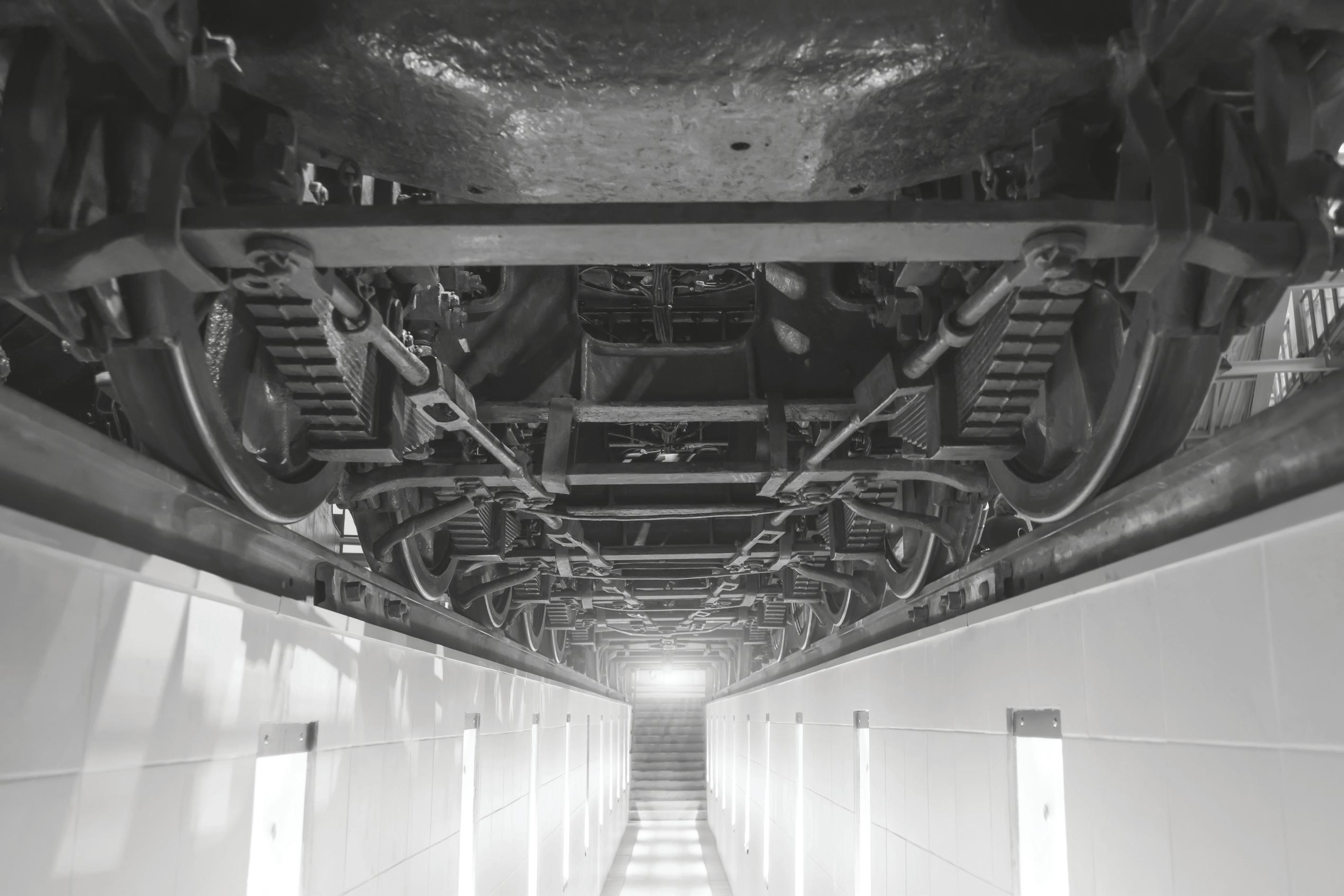
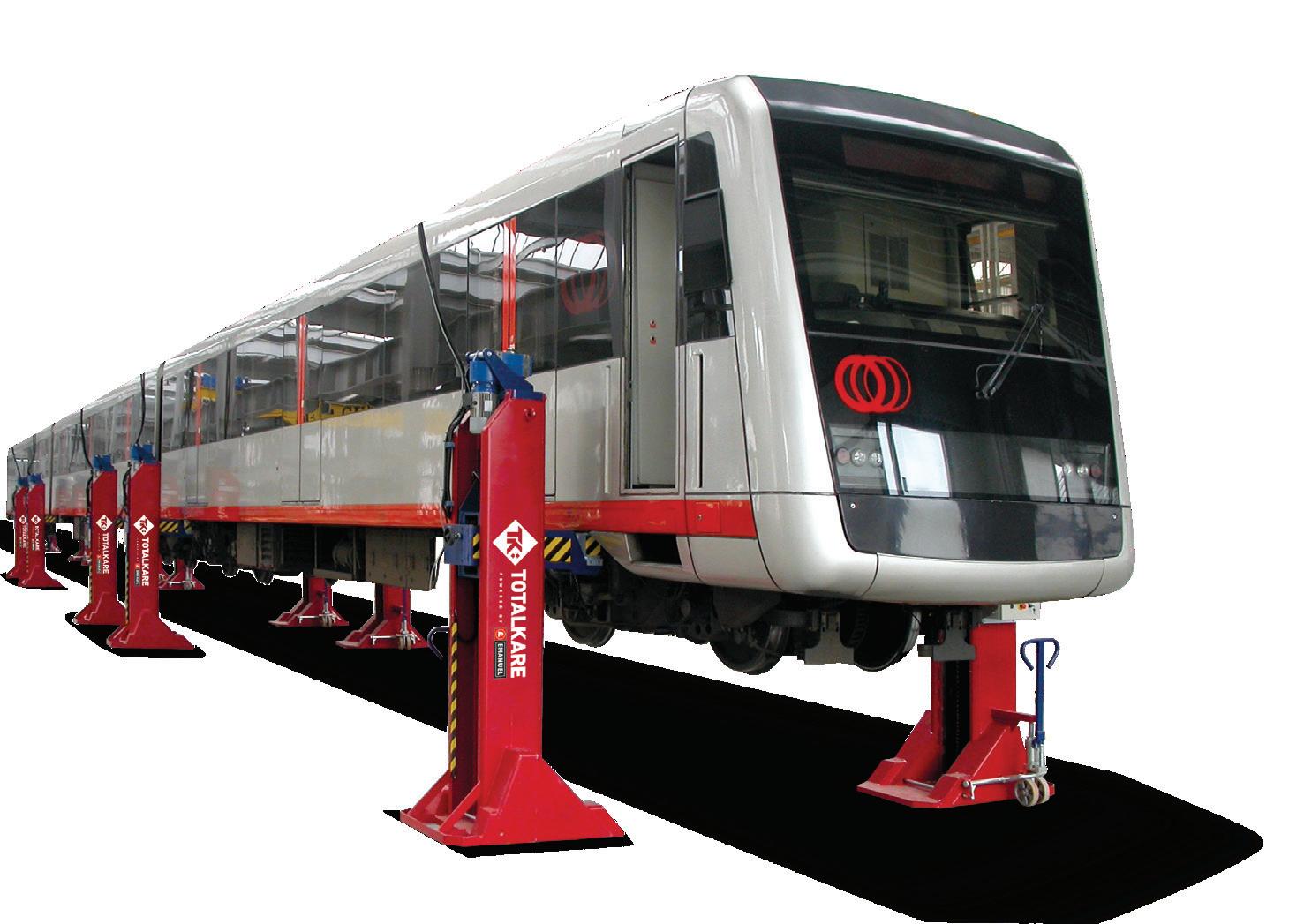
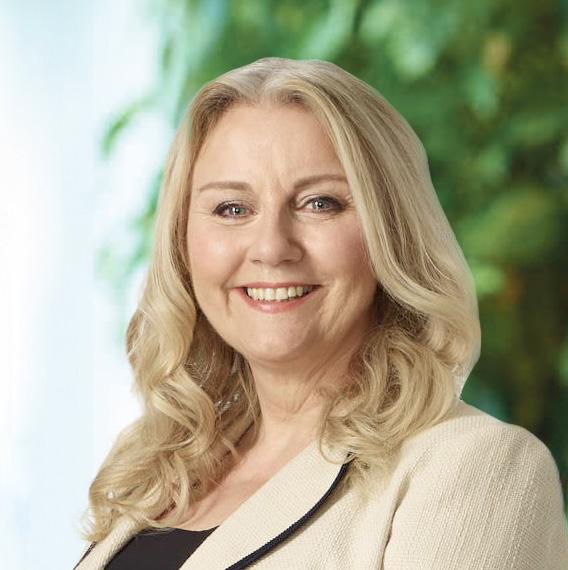
Anwen
Robinson is SVP at OneAdvanced, a leading UK provider of software solutions.
The Distorted Reality Threatening Passenger Transport
Anwen Robinson, SVP at OneAdvanced, a leading UK provider of software solutions, discusses the challenges faced by deskfree workers in passenger transport, and how leaders are failing to grasp what really matters to their desk-free workforce
The frontline workforce is the beating heart of any business. In the majority of passenger transport businesses, the frontline teams are desk-free (DF). Desk-free workers account for around 80 per cent of the total global working population. They are the people who get the job done, often for low pay, anti-social hours, in testing conditions, and with little recognition.
In passenger transport, you can find a huge range of desk free workers. From drivers and operators, to conductors, guards, ticket collectors, engineers and maintenance staff, it’s an industry that relies on people who work away from a desk. Some of these jobs can be highly skilled and require specialised skills, others are more service based – but all are important to the smooth running of operations.
It is vital that staff feel appreciated, empowered and properly communicated with by their managers and senior leaders. If they are not looked after and do not feel appreciated, businesses risk low morale, which can negatively influence attitudes to work and the management team. In turn, that may seep through into how staff come across to customers.
According to OneAdvanced’s latest research, there’s a growing disconnect between what passenger transport workers actually value and what their managers think they value. That misalignment
could be costing the industry both talent and trust.
It goes without saying that if not addressed properly, these issues can lead to job dissatisfaction and increased staff turnover. This directly impacts the bottom line and leads to a decline in productivity, profit margins, and brand image.
What is the research saying?
Flexibility matters just as much as pay:
• 38 per cent of DF passenger transport workers said that flexible shift patterns were just as important as increased pay when it comes to staying in a job. But only 24 per cent of leaders recognised flexibility as a key factor in retention. Passenger transport was also the only sector in the survey that ranked flexibility the highest as a reason for retention.
• Workload pressures are rising – a huge 75 per cent of workers in passenger transport said they feel overworked. Many blamed poor shift planning and high sickness absence – yet more than half of leaders (53 per cent) said they believe workloads are manageable.
• Training isn't the fix – only four per cent of passenger transport workers said more training would encourage them to stay in their role. However, 24 per cent of managers pointed to training and development as a top retention strategy.
‘Desk-free workers account for around 80 per cent of the total global working population.’
This reveals a clear pattern – while leaders may think they're offering support, the daily experience of desk-free workers in passenger transport tells a different story. Failure to recognise the motivations of employees in their roles, increasing pressures on staff, and ignoring flexible working requirements can quickly create a poor working environment that only further amplifies issues.
Communication breakdown
One of most startling results from our Disenfranchised Workforce Report has to be the huge disconnect between what bosses perceive to be a happy, engaged workforce of DF workers, and the reality of a disenchanted team.
We found that nearly every business with desk-free workers, regardless of industry, grapples with a critical issue –the communication gap between these employees and back-office management. This disconnect exists for many reasons, and it is the silent barrier that keeps organisations from reaching their full potential.
In an era where digital transformation is at the heart of all businesses, desk-free workers are being left behind or forgotten.
Ninety percent of those in the most senior roles – chairpersons, CEOs, and MDs – and 81 per cent of all leaders, believe performance expectations are clearly communicated, but only two thirds (67 per cent) of desk-free workers agree. And while no HR Directors or CEOs admit to any confusion in the ranks, ten per cent of desk-free workers say they often don’t know what’s expected of them.
The flexibility disconnect
The gap in perceptions around flexibility is one of the most revealing parts of the study. While 70 per cent of managers believe their passenger transport teams already have some flexibility, half say they’re tied to fixed hours or shift schedules, although they do note there is flexibility in the types of tasks that need to be completed.
For an industry that relies heavily on shift work and predictable service delivery, offering flexibility can be a challenge. However, offering flexible working doesn’t necessarily mean rewriting contracts or reinventing the rota. Sometimes, small changes like more input into scheduling or better communication around shift swaps can go a long way.
With flexibility being ranked so highly as a reason for retention in passenger transport, managers would be remiss to
NEWS IN BRIEF
GREATER MANCHESTER’S £2.5 BILLION FUNDING BOOST
Greater Manchester is set to deliver the UK's first fully integrated public transport system by 2030 thanks to a £2.5 billion government funding boost. Local rail lines will be integrated with the Bee Network, with Greater Manchester communities the first outside London to be served by fully joined-up bike, bus, tram and train travel by the end of the decade. The move will see major improvements to stations, including making more fully accessible, as well as capped fares. Key projects include a new Metrolink line to Stockport, tram-train services connecting Oldham, Rochdale, Heywood and Bury, and new Metrolink stops across North Manchester, Bury and Oldham. The Government is also hoped to back the new proposed Liverpool-Manchester Railway.
ignore this insight. Listening to employee feedback and ensuring it is listened to and acted upon is a vital part of keeping a workforce happy and fulfilled in their roles.
Overworking, burning out
Three quarters of desk-free workers in passenger transport say they’re overworked – and a third of them link it to absence rates among colleagues. Another third blamed poor planning. Yet very few leaders (just twelve per cent) acknowledge that absence is creating this strain.
The result? Teams are covering for each other more often, taking on additional responsibilities, and feeling the pressure –all of which impacts morale and long-term retention.
The bottom line
Passenger transport is a sector that runs on trust, timing, and teamwork. But when leaders are out of step with what their workforce needs – particularly around flexibility and workload pressures – that trust breaks down.
Leaders are now realising that DF workers, often the unsung heroes of any workforce, need to be empowered with the same tools and access to information as their office-based counterparts.
‘38 per cent of passenger transport workers said that flexible shift patterns were just as important as increased pay – but only 24 per cent of leaders recognised flexibility as a key factor.’
People leaders have a critical role to play in bridging the gap between office-based decision-makers and desk-free teams. Our findings show that while many HR and business leaders have good intentions, they risk missing the mark on what really drives engagement, retention, and productivity. These findings should be a call to action for operational and HR leaders to listen more closely, act more thoughtfully, and rethink how they engage their desk-free teams.
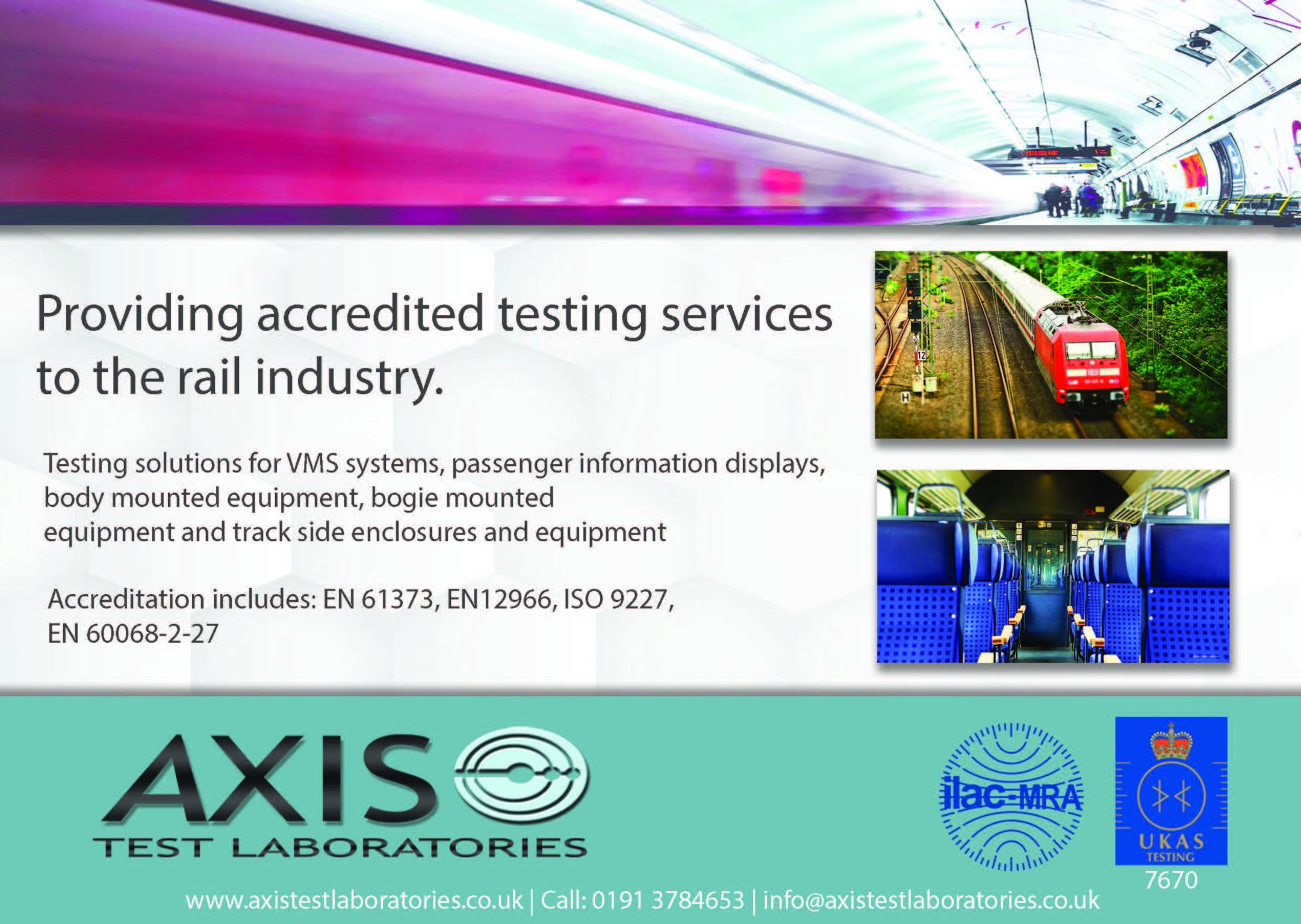
Rail Apprentice Wins Top Award
Alys Lee, Duty Service Delivery Manager at East Midlands Railway, explains how she found her way into a rail career and why her recent apprenticeship recognition means so much
Inever really planned on having a career in the rail industry, it was something I certainly stumbled into. It was only when I finished college and was looking for a job that I found an advert for what was then Virgin Trains. It was a casual contract for a Customer Service Assistant role working onboard the Pendolinos between Manchester and London Euston. I absolutely loved it. Working with different people every day made the job really varied, and I still enjoy that variation today. I made so many memories there. It was where I met my best friend Helen – and we’re still best friends 13 years later. I got to travel with a few celebrities. I even went to the Virgin Trains party at Richard Branson’s home and saw Sam Smith perform live!
I took a short break from the railway –about two years – when I went to fulfil a lifelong dream of becoming a member of the international cabin crew for British Airways. Flying was great, but I was surprised to realise just how much I missed working on the railway – and it wasn’t long before I returned to work for Virgin again in 2015. From there I moved to East Midlands Railway where I’ve worked in a range of different roles that have really helped me build on my skills and experience.
I love working on the railway because no two days are the same. Especially in my current role within Control, you just never know what incidents you’re going to have to deal with on a daily basis. I do shifts as part of a 24-7 manned job. We’re the strategic lead and incident commander for any incidents that occur on the railway. So things like signal failure, people being struck by a train, and more. So you do really never know what you’ll face when you get up in the morning – which means there’s lots of chances to develop yourself. It felt like I had found a place where not only could I do my job well, but also be given opportunities to do additional training, qualifications and overall development – and I’m really grateful for that.
Knowing that there were plenty of opportunities for me to develop I jumped at the chance to enrol as an apprentice. I wanted to continue learning and developing my skills through a formalised qualification, but I needed the flexibility to manage it around my shifts and other work commitments. So an apprenticeship felt like the perfect route for me.
My course is a Level 5 Operations and Departmental apprenticeship, so I will leave with the equivalent of a foundation degree –something I always wanted to do as I didn’t attend university. I’m close to finishing now, but the biggest challenge throughout has been managing my shift work. Work has been supportive on my journey, but I’ve had to be dedicated to my studies and really savvy with my time. So if I’m doing a long night shift, for example, instead of having some downtime I’ll be typing up a presentation, watching webinars or carrying out research at 0100.
I’m so glad that I decided to do an apprenticeship. It’s unlocked a lot of doors and given me tons of skills to set me up for whatever that next role might be for me. I want to keep moving forward and progress up the ladder, so the apprenticeship has been a great way to make sure I’m ready for that next big step. Back in February, as part of National Apprenticeship week EMR invited employees to nominate their colleagues for the Apprentice of the Year award, I was delighted to have received several nominations mentioning my dedication, commitment and motivation towards both my day to day role and my apprenticeship. I was truly humbled to then be presented with the award and announced as the winner for 2025. It is really lovely to be recognised for your hard work and dedication to something and a huge boost to my confidence.
If you’re someone thinking of becoming an apprentice in rail – especially if you’re a woman – then I have a short bit of advice for you: absolutely go for it! It’s a great opportunity to have and we are really lucky to be in an industry that supports our growth and personal development. I’d definitely recommend the Women in Leadership programme as it helps you connect with like-minded women working in different industries who face similar challenges and can teach you new ways to overcome them.
As someone that never planned to work in rail, the most surprising thing I’ve discovered is just the sheer amount of opportunities available to us. There are so many different directions you can take your career whilst remaining in the rail industry, I’ve been lucky to gain experience working in a range of different roles including onboard, at stations, training, assessing and now within the Control function. The possibilities are endless.
NEWS IN BRIEF
CHANCELLOR URGED TO PRIORITISE FREIGHT AND LOGISTICS
Experts at The Chartered Institute of Logistics and Transport UK (CILT UK) are encouraging the Chancellor to protect and boost spending on freight and logistics projects as part of Rachel Reeves’ Comprehensive Spending Review. CILT UK believes that the Government should focus spending on small scale projects within logistics and transport, to help meet growth and net zero goals.
PADS APPROVED PORTABLE EARTHING EQUIPMENT
PENTA has secured Network Rail Product Acceptance Document (PADs) approval for its comprehensive range of portable earthing equipment used on rail tracks and overhead power lines. The approved equipment includes rail clamps, earthing straps, bonds, voltage detectors and signal sighting targets. PENTA developed the products through collaboration with major rail operators and extensive field testing. ‘We're uniquely positioned to help rail operators maintain the highest standards of safety’ said Managing Director Kevin Rushton.
SOUTHEASTERN BOOSTS WATERSAVING EFFORTS
More than 150 automatic water meter readers have been installed across the Southeastern estate, minimising waste at depots and stations. The new technology now covers 90 per cent of the more than 180 stations and depots across Kent, Sussex, and South East London run by Southeastern. By sending real-time data to a central hub, the data loggers allow leaks and unusual usage to be quickly detected and repairs arranged.
Rail Industry Celebrates the Women in Rail Awards 2025
The 8th annual Women in Rail Awards took place on Thursday 15th May at the stunning and iconic Roundhouse, Camden, London, bringing together over 800 professionals from across the UK rail industry for a spectacular evening of celebration, inspiration, and recognition
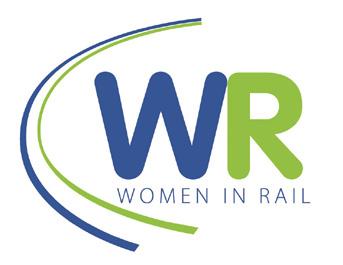
Established in 2012, Women in Rail was created to improve diversity in the UK rail industry through providing networking opportunities and support for all women within the sector, encourage undertakings and stakeholders to adopt diversity as a business strategy and devising initiatives aimed at positioning rail as an attractive career choice for young people.
For more information about WR visit https://womeninrail.org/.
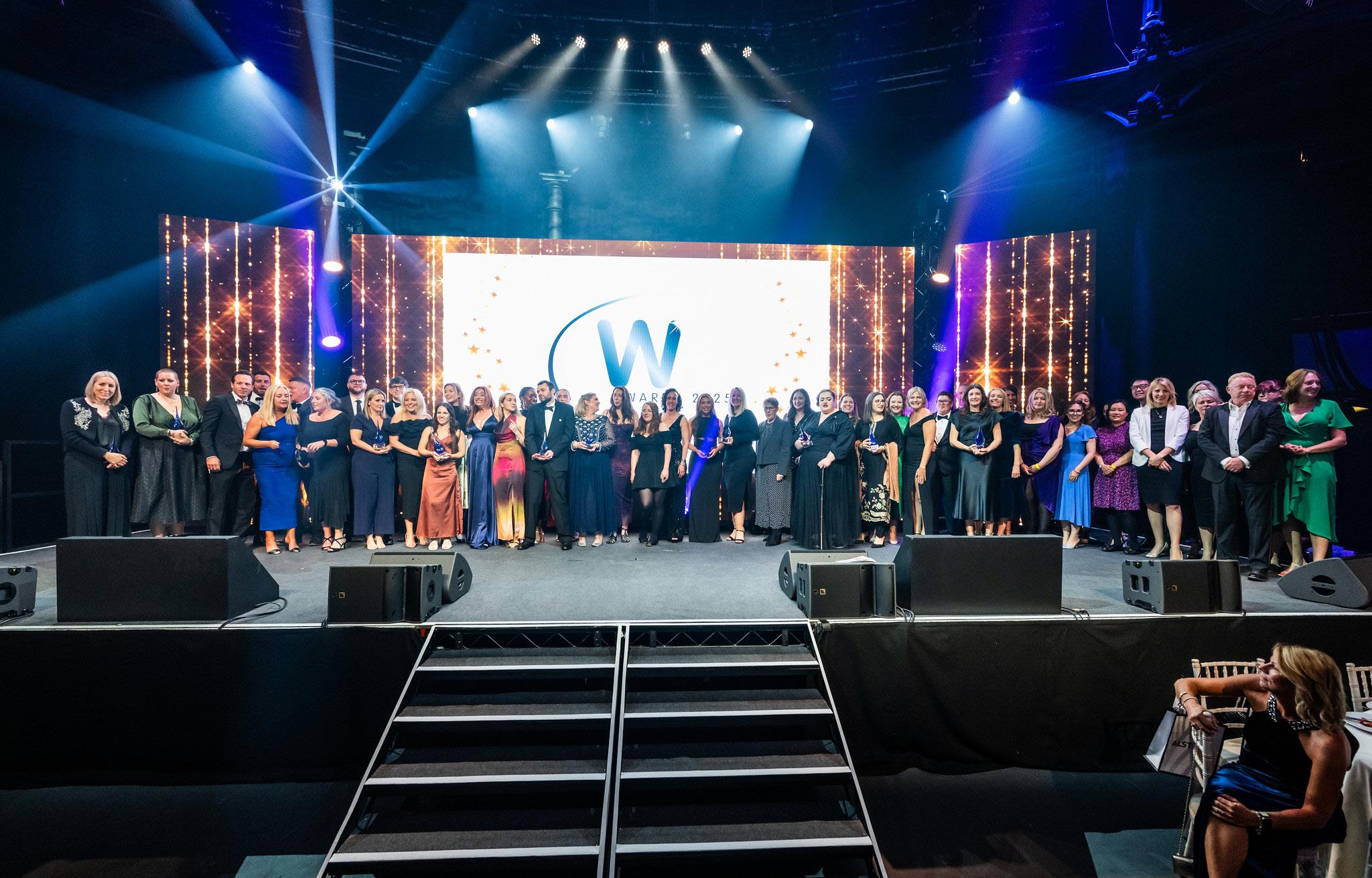
The event, established to honour individuals and organisations who have made outstanding contributions to improving gender balance, diversity, and inclusion within the rail sector, was once again a resounding success. Hosted by Gail Porter, the evening featured moving stories, exceptional achievements, and a powerful sense of unity among attendees.
Following the champagne reception, guests were serenaded to their seats by the
Southeastern TRAX Choir. A welcome address from Chair of Women in Rail, Marie Daly, followed by a keynote address from Laura Shoaf, Chair, Shadow Great British Railways, marked the opening of the ceremony.
A total of 14 awards were presented, celebrating both individual excellence and collaborative initiatives that are shaping a more inclusive future for the rail industry.
The judging panel, made up of senior leaders from across the sector, faced the difficult task of selecting winners from a
record number of entries, a testament to the incredible work being done across the network. The judges specifically requested that all nominees be commended for their hard work, selfless dedication, and commitment, and that a huge thank you be extended to all those who were nominated for this year’s Women in Rail Awards. The complete list of Winners, Highly Commended, and Shortlisted is available on the Women in Rail website, womeninrail. org/awards
Marie Daly, Chair of Women in Rail and Chief Operations Officer at Transport for Wales, said: ‘Since taking on the role of Chair 18 months ago, I’ve seen our industry undergo significant transformation. With the introduction of the Railways Bill to enable the formation of Great British Railways (GBR), we are entering a defining period for rail, Women in Rail stands ready to support industry leaders in shaping strategies that foster inclusive cultures, deliver equity, and help our industry grow. Guided by our purpose, to ensure leaders create environments where women are supported and can thrive every day throughout their careers, we remain focused on improving gender balance, championing diversity and embedding best practice. Our mission is to be ‘unapologetic in our pursuit of gender equity in the rail industry’. Through our business and engagement plans, and by amplifying the voices of our members, we are driving real change. You can all play a part in this journey – together we can do more.’
Marie, further went on to say: ‘I would like to take this opportunity to thank and celebrate all the nominated individuals and companies, all truly inspirational in their own right, whose passion and determination will continue to drive forward the progress and changes needed to improve the gender balance across the sector. Thanks must also go to our 2025 Sponsors, the Women in Rail members, volunteers, trustees and regional teams for their collective contributions and of course, to everyone who attended the event.’
On the evening, Marie proudly spoke about the Women in Rail’s Strategic Business Plan, in how it is setting a bold vision for the future of gender equality in the rail sector. The plan outlines a clear roadmap to attract, support, elevate, and empower women across all areas of the industry through targeted action, collective effort, and measurable impact. Full details of the plan can be found on the Women in Rail website.
The organisation and delivery of the event was made possible through the expert support of Nimble Media, who worked in close partnership with Women in Rail to curate an evening that was both professionally executed and deeply impactful.
Women in Rail would like to extend a heartfelt gratitude to all the 2025 Awards Sponsors, whose generous support made this event possible. Without their commitment to fostering diversity and inclusion in the rail industry, this event and its recognition of outstanding achievements would not be possible. Thank you for your continued partnership and dedication to driving positive change.
The awards received tremendous feedback and we look forward to celebrating our inspirational colleagues with you again next year at the Women in Rail Awards 2026!
‘Our mission is to be 'unapologetic in our pursuit of gender equity in the rail industry'. Through our business and engagement plans, and by amplifying the voices of our members, we are driving real change.’
Marie Daly, Chair of Women in Rail
Headline Sponsor
London North Eastern Railway Limited
Category Sponsors
BAM, Govia Thameslink Railway (GTR) Limited, Greater Anglia, Hitachi Rail, KeolisAmey Docklands, Morson Group, MTR Elizabeth Line, Transport UK, c2c and London Northwestern & West Midlands Railways
Drink & Wine Sponsor
BTTC
Table Decoration Sponsor Avanti West Coast
Fundraising Sponsor East Midlands Railway
Gift Bag Sponsor Alstom UK & Ireland
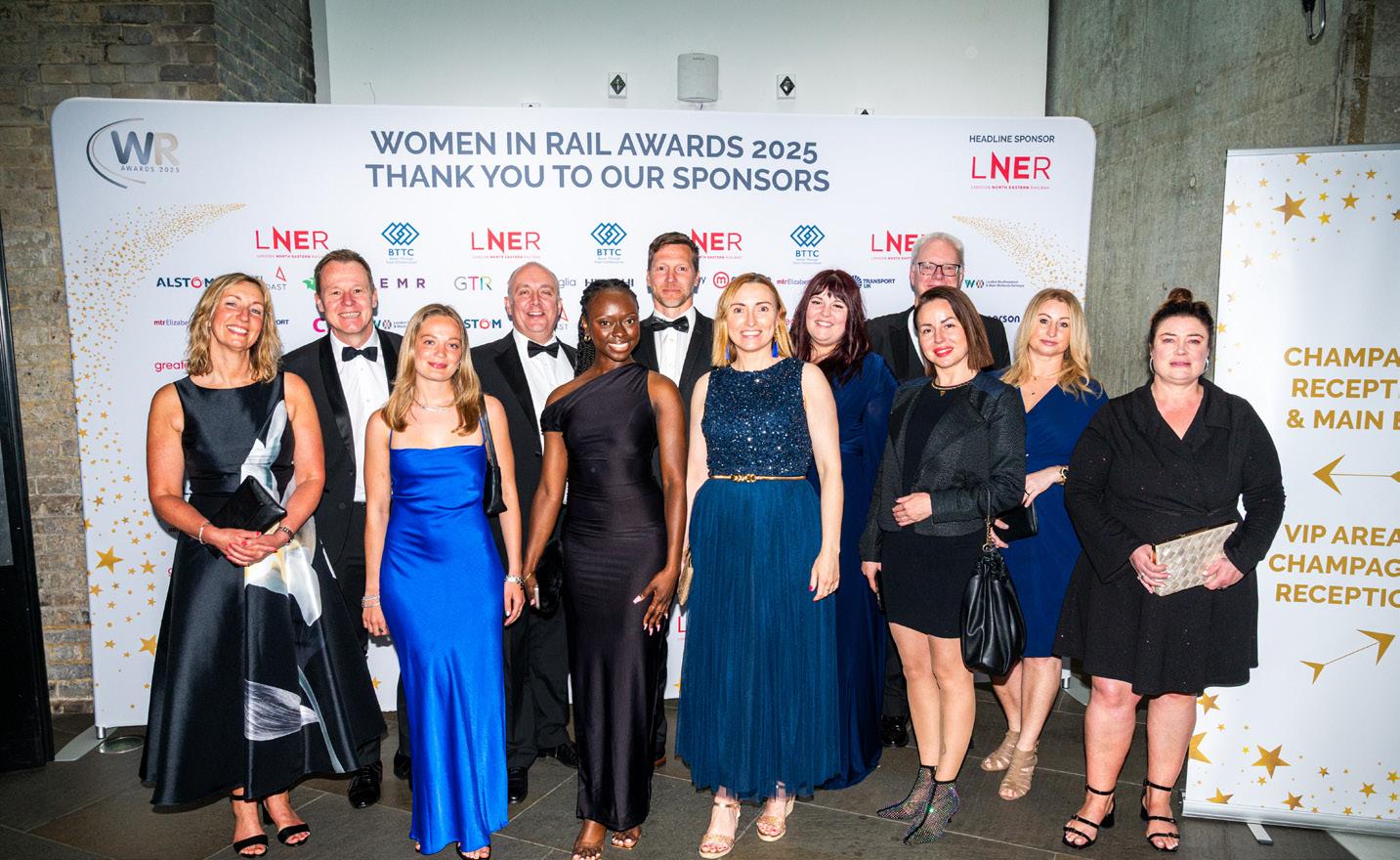
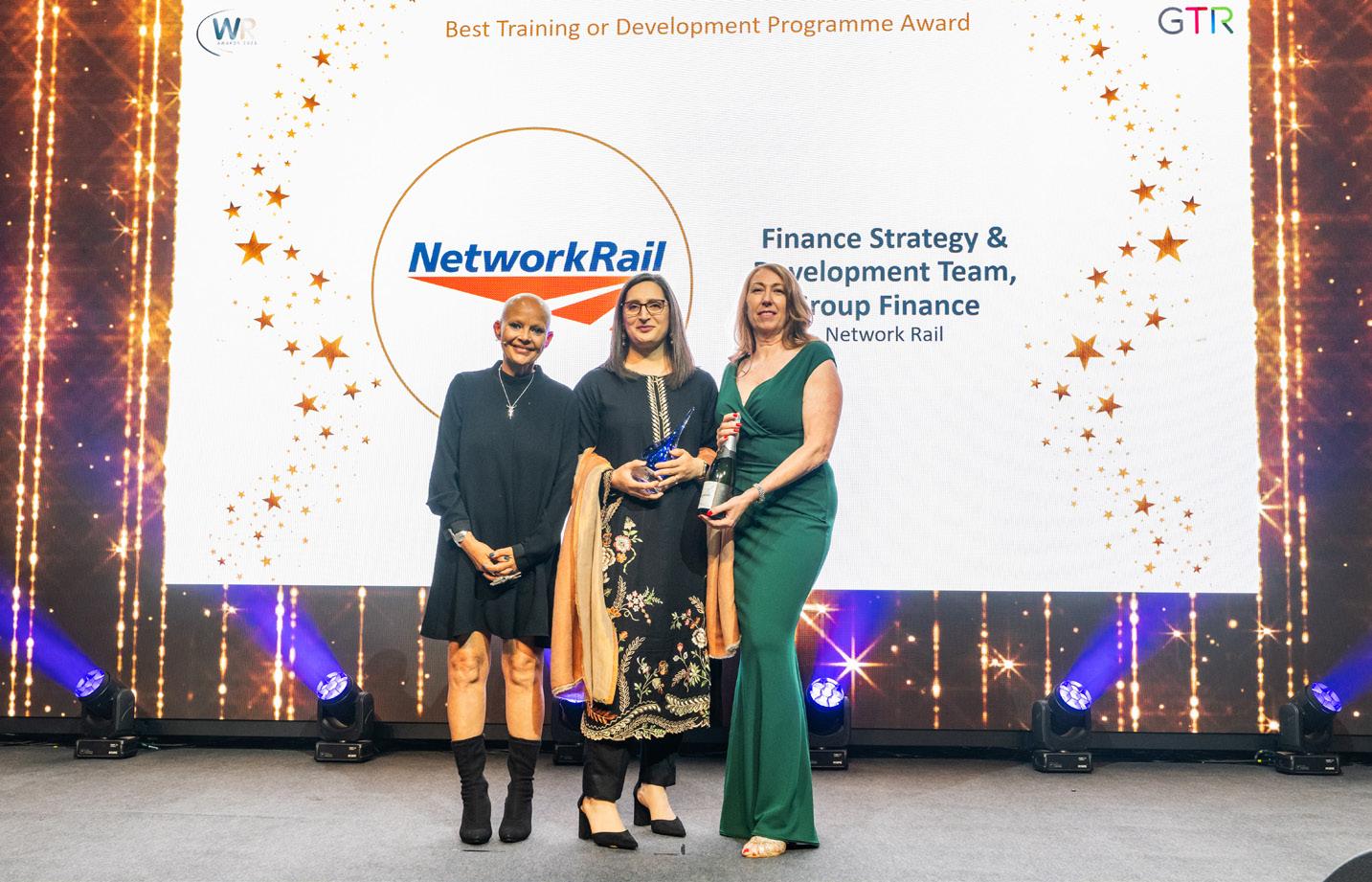
Daryn McCombe
GWR and Network Rail Control teams
Daryn McCombe is Great Western Railway's Train Service Delivery and Performance Director and Network Operations Director for the joint GWR and Network Rail Control teams.
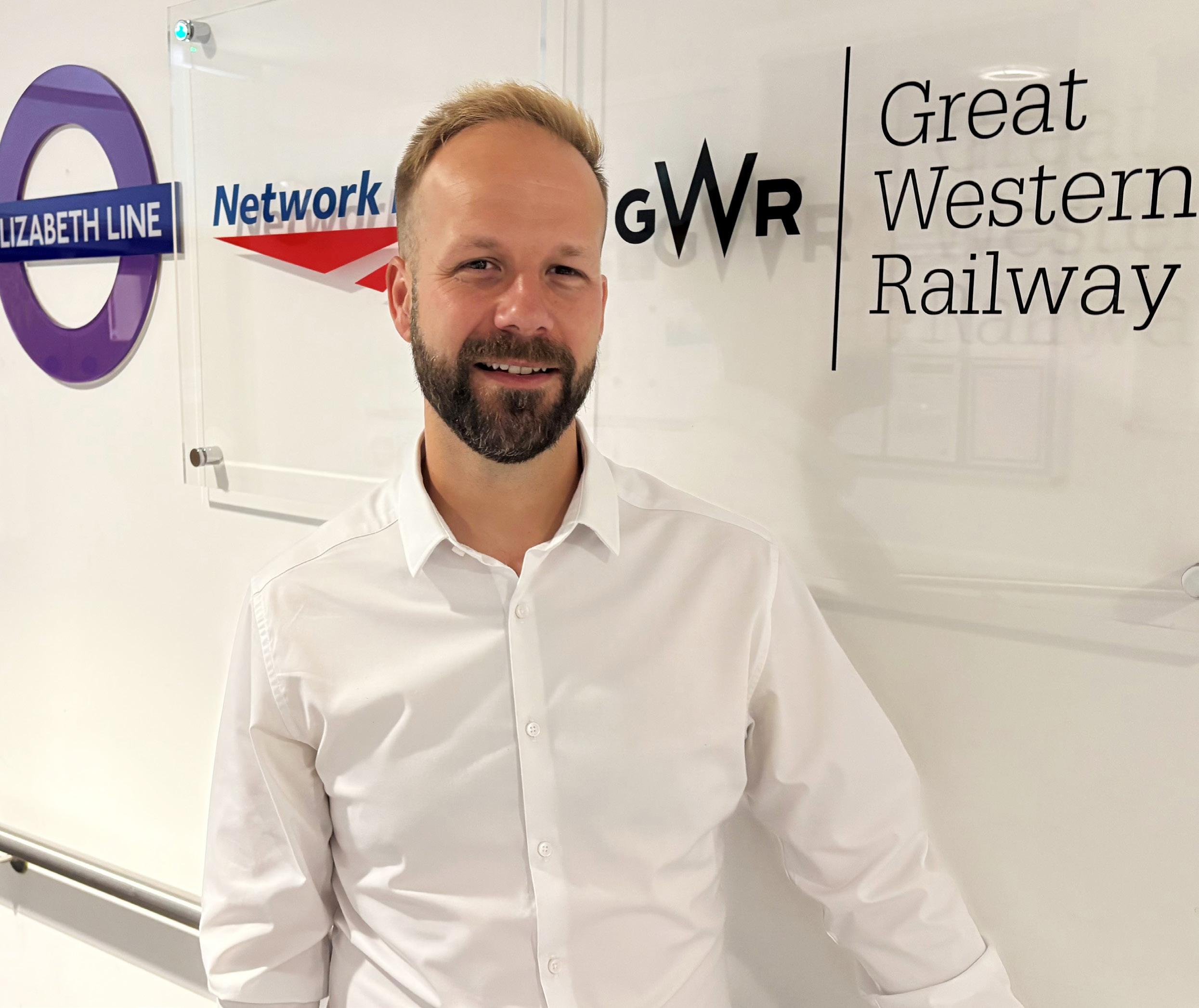
Sam Sherwood-Hale spoke to Daryn McCombe about the pioneering joint control function between Great Western Railway and Network Rail, exploring how breaking down structural barriers and aligning decision-making processes is delivering better outcomes for passengers while preparing the Western Route for the transition to Great British Railways
SSH: Could you share your vision for this new joint control function between GWR and Network Rail? What was the catalyst that led to establishing this collaborative approach?
DMCC: Key for me is to deliver a better service to our customers. By bringing that historically fragmented decisionmaking process together and having a single leadership team, it helps us remove inefficiencies in the process and helps us coordinate that response for our customers more quickly.
This is not a new thing but a continuation of the work we've been doing over the last three years, I've been working closely with Marcus Jones, who is Network Rail’s Western route director, on how we recover from performance-affecting incidents.
We've got a brilliant team with brilliant people. But the way we've set the system up around them means they're often unable to make quick decisions because of the number of people they need to engage with and consult. Sometimes we have conflicting frameworks for decision making across Great Western Railway and Network Rail, and with some of the other operators as well.
Timing is important looking at the bigger picture, with the transition to GBR likely to happen in the next 18 months or so, we wanted to take the opportunity to shape that thinking now – What's the shape? How do we make it work? How do we align the control operations and be more integrated? How can we help respond when the railway is disrupted? And how can we prepare and make sure our resilience for any potential disruption is better?
It's about delivering a better railway for passengers and the people on the trains themselves, but also making it better for our staff and stakeholders as well, and delivering the economic benefits that a highlyperforming railway can deliver.
SSH: In terms of the challenges you anticipate with the rail franchise transitions and eventually moving to Great British Railways (GBR), what do you think would be the biggest challenges in the near future?
DMCC: One of the biggest challenges, particularly on the Western Route, is that
we're not going to be a wholly GBR railway. We’ll still have MTR operating the Elizabeth line, Heathrow Express running between Airport Junction and Paddington, and significant freight operations – all on one of the most congested corridors in the country. We've also got a lot of Open Access operators bidding for work in this part of the world too. GWR also operates over Wales, which isn't necessarily going to be part of the GBR set-up in the future.
So there will still be some fragmentation in our railway. This change isn't a panacea – it doesn't remove all fragmentation. But what it does is enable us to put the customers’ needs at the heart of our decision making.
Network Rail is currently set up in a way to arbitrate between operating companies in terms of allocating infrastructure and train paths. By bringing Network Rail colleagues closer to the customer, we can give them a customer perspective and help them think about how to deliver for the customer in different ways.
There will still be conflicts. there will always be competing priorities between short-distance, high-volume commuters on the Elizabeth line and long-distance passengers travelling from Penzance to London, Bristol or Oxford. Balancing those needs means making tough calls about infrastructure availability and service recovery during disruption.
By removing one of those interfaces, it simplifies the process and makes it more straightforward for people to make decisions quickly. Having an operator mindset means that before we get to making those decisions, we're able to bring the rest of the operators with us in planning and thinking about how we approach things.
SSH: Has your own mindset changed in this process, even though it's only been a short time?
DMCC: Yes, in the same way that Network Rail colleagues are getting more exposure to the customer, I'm getting more exposure to infrastructure issues and how we can resolve them.
I started on the Underground graduate programme back in 2008, which gave me a good perspective from both sides of the track and train interface. I've had a good appreciation from my background on the
Underground of both sides – the fact that you need to maintain infrastructure, you need access to maintain it, you need to be able to fix failures and faults to recover the railway.
At the same time, having that mainline customer experience and understanding the different mix of customers across different operators has been valuable.
SSH: Is it common for your colleagues to have experience of both the customer side and the infrastructure side?
DMCC: Since privatisation it is increasingly rare. Many of those who started their careers in British Rail had exposure to both customer operations and infrastructure management. But today, that breadth of experience is becoming increasingly rare. Most colleagues coming through now have developed their skills either within a train operator or within Network Rail, rather than across both sides of the interface. I think it's a positive step that more people are doing that now. You can't operate the railway without thinking about it as a whole system, and the performance model shows very clearly that both sides of the interface are really important in delivering the high level of performance that passengers expect.
SSH: Did you identify any specific operational inefficiencies or communication barriers between GWR and Network Rail that led to this integration?
DMCC: Yes, we've been working collaboratively with our controllers to identify and understand more deeply their experience of how control works today. We’ve been able to observe incidents, hold workshops, and get deeper insight from survey responses
One of the key things that's stuck out is that we can absolutely improve the clarity of decision making. We've reaffirmed that there are something like ten different roles involved in making a decision during disruption. That's a huge number of interfaces and people to communicate with – some within Network Rail, some within Great Western, and some decisions have to go across the two organisations.
Often we’re working to slightly different frameworks. Network Rail has been

incentivised around on-time performance (NR’s regulated performance measure), while Great Western has been incentivised around time to three minutes (the accepted measure of punctuality for the UK’s train operators).
The good thing is that the industry is now taking decisions to focus on time to three, which is a really positive step forward to give us a single metric for punctuality. That will allow us to create a standard decision-making framework across the two organisations.
I'm convinced there are opportunities to streamline the process so you don't have ten different people involved. That will give us quicker responses, improve our passenger communication, and help us optimise our response resources on the ground, whether that's infrastructure resources or train crew, to help us recover quicker.
SSH: Are there some things that might be more universal in this standardized framework you want to create that could apply to other operators around the country?
DMCC: There will be some common themes that could apply, though I’m convinced that it will depend on the nature of the
customers’ needs and how operators and NR are set up to meet them. One of the great things about Great Western is that we have local, regional and inter-city services, which means we can optimise our timetable to create joined-up travel opportunities. But one of the operational challenges is making sure we can respond to each of those different segments of our customer base.
Other operators are not necessarily set up in the same way, so it will depend. But there will definitely be lessons we can share. We're in close contact with Kent, who are going through a similar process.
SSH: In terms of knowledge transfer, do you think we're culturally ready for the larger, more integrated network that's coming, where information sharing will be crucial?
DMCC: I think, inevitably, yes. When you bring railway people together, our natural instinct is to collaborate – especially among operators. The challenge has never been a lack of willingness to work together; it’s been the structural boundaries that limit how information is shared. Removing those barriers will lead to real improvements.
For me, the key part of this joint leadership role is ensuring we drive that
‘The challenge has never been a lack of willingness to work together; it's been the structural boundaries that limit how information is shared. Removing those barriers will lead to real improvements.’
cultural shift at a local level within the Western Route control. Right now, even though colleagues sit next to each other daily, they aren’t trained together, don’t go through shared safety or business briefings, and often don’t get the chance to fully understand each other’s decisionmaking processes. That creates missed opportunities.
One of the most valuable things we’ve seen in our workshops is how much people
relished the chance to share perspectives. These conversations have helped build genuine, practical understanding between colleagues who have worked side by side for years but never fully appreciated the pressures each other faces. That shift –from working alongside each other to truly working with each other – is critical as we move toward a more integrated railway.
SSH: Were there any outcomes from the workshops that surprised you?
DMCC: We've tried to understand the current state from the controllers' perspective, not just the senior leadership's view – getting the perspective from signallers, Mobile Operations Managers, people on the ground responding, and train crew.
One particular standout from the workshops is that almost 30 per cent of our contingency plans are reworked because of stock and crew diagramming or other infrastructure availability issues.
We also end up duplicating communication, with multiple people involved sending out similar messaging to different parties.
SSH: Is that a challenge for you professionally and personally, having to reserve judgment as this process unfolds? Is your view of what needs to be changed evolving?
DMCC: Absolutely. It is a challenge because as railway people, we like to present the solution and fix things. One of the biggest challenges in the industry is embedding cultural change. I think the way you overcome that is by getting people bought in at this early stage. Before you start presenting solutions, you involve them in understanding the challenge and the problems, and you engage them in what the solutions could be.
We won't be able to do everything that colleagues come up with, because there will be wider policy or regulatory constraints or perhaps they don't always have the wider stakeholder or commercial perspective, etc. But even the process of engaging people in that discussion, and then coming back to them with reasons why or explaining how you could adapt what they've suggested to achieve the wider goal – that's really important in shifting the culture and helping people engage with the change.
SSH: What steps are you taking to ensure frontline staff from both organisations embrace this new approach? Is there a human element to this that you're having to adapt to?
DMCC: Ultimately, I think this is successful if people think this is their change – if they've told us what the problems are, helped us design the solutions, tested those solutions, and iterated them over time
before we roll out any big changes. There are probably some themes around training – how do we train people together? How do we align the training so we understand how each part of the organisation works together and what the interfaces are?
It also involves having clear roles. One feature of the industry at the moment is this element of having to 'person mark' each other's organisation. You've got a trainrunning controller, you've got a train service manager – they're both looking at train service regulation decisions.
We need to make sure we can clarify those roles so that where there is overlap, it's clear what the purpose of that overlap is and how it drives customer improvement.
Communications are also important –making sure our passenger communication is clear, but we also need to be better in our communications to colleagues. Often, passengers can know a little bit more than colleagues do, and we want to make sure that frontline customer service colleagues know what's going on so they can explain it to passengers.
SSH: Has the cultural shift in terms of awareness – with passengers often knowing more than staff and everyone being constantly connected – helped these two teams come together more easily?
DMCC: Customer expectations have changed. Customers expect a much greater degree of real time information about what's happening than they might have done 10-20 years ago, and that's true across all servicebased industries.
If you look at airlines, they've made great strides in being able to push personalised information to their customers about alternatives during disruption. Ideally, we'd get to that point too, though the current industry model makes it difficult because of the nature of the messaging systems and the fact that people can walk up and buy a ticket without providing contact details.
Keeping colleagues up to date during disruption is really important, and making sure we have that aligned view across the two organisations is key. When we communicate, we need to put out a single clear message.
SSH: Have there been some joint projects that the two teams have already successfully worked on that helped foster this new sense of collaboration?
DMCC: Yes, we've been working collaboratively across the route on Project Brunel, which is the investment between Reading and London along with other specified sites on the route. We've seen a £20 million investment delivering a 20 per cent improvement in performance, which is really positive.
One strand of that has been how the control responds to disruption in a more coherent, joined-up, and faster way. For
‘You can't operate the railway without thinking about it as a whole system, and the performance model shows very clearly that both sides of the interface are really important in delivering the high level of performance that passengers expect.’
example, with stranded trains, we've developed a single industry view so we don't repeat some of the incidents we saw 18-24 months ago. While we've probably seen more stranded trains since then, our management of them has meant that passengers don't get stranded in the same way. Those trains get moved to a safe location for passengers to disembark, and then we can arrange onward travel or fix the fault more quickly.
That work involved Elizabeth line, Heathrow Express, Great Western and CrossCountry. We're now working with a supplier on an incident management system so we can have good, shared awareness across the industry about stranded trains or particular incidents, or what we're doing with passengers in those situations.
SSH: What's been the biggest change you've seen in the past ten years related to control systems or more broadly?
DMCC: Western Route has undergone a major transformation in that ten-year period. The electrification of the route, the introduction of the Intercity Express Trains, Class 387 all-electric trains including running those through to Cardiff – that's quite a big change in how we operate the railway. It enables us to move many more people quickly at key events like at Principality Stadium, using that electric rolling stock in longer formations.
The introduction of the Elizabeth line has been transformational for customers in the inner Thames Valley and across London. Old Oak Common is being completely redeveloped into that brand new HS2 station which, while disruptive, has the potential to be as transformative as Stratford was in the East.
We’ve also seen a change in our customer makeup post Covid. That all requires us to think differently, whether in terms of the customer service those people need to access the railway or our ability to give reassuring information during disruption.
Mel Burrell Founder and Managing Director of Premier Pits
Mel Burrell is Founder and Managing Director of Premier Pits, a Lincolnshire firm specialising in prefabricated steel maintenance pits for commercial vehicles and railways. Over five decades, he has grown the business from local subcontracting to international operations spanning 17 countries, with more than 3,500 pits installed worldwide.

Mel Burrell with his wife
Sam Sherwood-Hale spoke to Mel Burrell about Premier Pits' evolution from subcontractors to prefabrication pioneers, their move into rail, and why the industry must abandon traditional concrete solutions
SSH: How did Premier Pits begin its journey?
MB: The business was started 52 years ago and we were basically subcontractors at the time – we would do anything really. We didn't have our own product because when you start a business, you very rarely start with your own product, especially if it's innovative.
After a few years, we found ourselves doing large effluent treatment plants, mostly for the food industry – sludge tanks, flotation cells, contact chambers. It was mild steel or stainless steel fabrication and they were above ground, holding thousands of litres of liquid. We'd always been into watertype vessels really, no leaks.
Then, there was a local transport firm called Fruitex who came along. The MD, Alan Grimer, was driving past and called in to see us. He wanted a vehicle maintenance pit, but his exact words were: ‘I don't want one like everybody else's, Mel. I want one that doesn't leak because we're in a high water table where we are in the fens.’
So we got our head around it and compared to a flotation cell, it was actually simple to make. But that's only part of it – there's two sides to vehicle maintenance pits. You've got the manufacturing, which is controlled in a workshop environment, but then you've got your site conditions. Every site you turn up to can be different – some dig easy, some hit rock, some are dry, some are wet through. You've got sand, every condition, and that's actually the hardest part of our job.
When we did the first pit at Donington 40 years ago, we didn't realise how important it was because when we dig, we don't shutter like conventional in-situ poured concrete ones do. We don't put anybody in the hole – it's all done from above ground.
On that first job, myself and my colleague went along on a Friday night after making it during the week, dug the hole, and planned to install on Saturday morning. When we got there, there was no hole – it had filled up with running silt and we had to dig it out again. We thought we might lose the building wall since we were only six metres away. It was a hell of a learning curve.
But when we finished it, even though we lost money, it looked fantastic. Then it was word of mouth locally – maybe one six months later, then I twigged there could be an opportunity here. The main benefit was we could install a 15 or 20-metre pit in five days, all fitted out with lights and air, so
‘We don't put anybody in the hole – it's all done from above ground.’
no other trades needed to go in after. With concrete pits, you've still got to put stairs in, electrics, lights – everything. There was nobody else involved with the job and that's really how it started.
Over the years it went from one team to five teams, and I always think of it as prefabrication below ground level – that sums everything up. Prefabrication above ground for buildings has been the norm for years, but nobody else had really twigged on prefabrication below ground level.
SSH: What sparked your move into the rail market?
MB: Years ago, we realised rail must have long pits – there must be a business there. Sure enough, there were long pits made from concrete, so we knew we could help the rail industry just as we had done for so many years in the commercial vehicle and bus markets. For trucks and buses, I'd suggest 99 per cent of pits built in the UK and Europe are prefabricated steel. Contractors don't want to know about the old-fashioned concrete way anymore.
When we did the first one for Terminal 5 about 15 years ago, we installed 2no 54m pits in eight-metre sections at twelve metres below finished floor level.
Rail has got a lot busier. The first to really bite and see the benefit were main contractors – they could see the benefits over concrete pits straight away. What shocks us now is that big specifiers still send drawings for rail pits based on in-situ poured concrete pits designs.
SSH: Why should rail operators choose Premier Pits over concrete alternatives?
MB: The major benefit is in the time saved on site – we can save up to 70 per cent of site time compared to in-situ poured concrete. To give you an idea, we're doing a 50 metre rail pit at the moment and we will complete on site within two weeks. If that was insitu concrete, it would take seven or eight weeks. We achieve this by manufacturing offsite, with the pits arriving fully equipped with the lights, air points, stairs and any
other customer requested fittings added. It is just a case of excavating, installing and then the end user’s contractor doing the connections for the lights and air. There are many other benefits to Premier Rail’s Pits too, such as being watertight, easier to clean, well-lit and they are generally a much better environment for technicians to work in.
Unfortunately some specifiers aren't going down our route, and still designing concrete pits for new workshops, but we are seeing progress. At Holgate, someone from a specifier will see it in the ground, think ‘oh wow’ and then tries to get their company to move in that direction. At the moment our product is more driven by the client and the contractor more than the specifiers, however we are hopeful that we can arrange some sessions with specifiers to discuss the benefits of prefabricated steel over concrete pits in the near future.
SSH: The Heathrow Terminal 5 project sounds complex – you had to install pits in eight-metre sections due to site access constraints. How has your prefabrication process evolved to accommodate these challenges?
MB: The Terminal 5 job was a real learning curve. We were installing twelve metres below finished floor level into a large concrete slab with two 54-metre pits, with an underground railway six metres below that. We planned to put up a tower crane and drop 18-metre pieces in, however the client had asked if they could proceed with building the sides and roof. We had to think about how we are going to get the pit in with the roof on. They left us a little opening and we made the sections in eight metres instead of 18 metres, put wheels on them and lowered them through the hole.
SSH: You mentioned the precision required. Could you elaborate on the technical challenges?
MB: If you look at Terminal 5, there's a horizontal rail coming out the side with steel and another at 45 degrees. The rail runs down the middle and all that rail was attached on site with brackets we made. The centre running beam over 50-odd metres had to be within plus or minus 3mm – that's three times the thickness of your thumbnail. The first pit passed at 3mm tolerance. A week later, they checked the next pit and it was zero! They said it was impossible, but we'd achieved it. We jumped up in the office and punched the air
because it might have been the difference between being paid full amount or having a reduction. There was a hell of a lot of risk in that job, but I think it made a statement for us within rail.
SSH: I see that Premier Pits has installed over 3,500 pits across 17 countries. Where are you seeing international growth for rail pits?
MB: For rail specifically, although we believe we're going to get something from France shortly, the only one we've actually completed was Norway for Bane NOR, their equivalent to Network Rail. They saw the benefits straight away. That was about five years ago, just after Covid. The contractor got in touch working for Bane NOR and it went really quickly – they saw the benefits, no problems, placed the order and it was a great project.
We currently have inquiries from Poland, France, and the Middle East for rail projects. The Norwegian contractor was very easy to deal with – he sent photos, told me about the projects, and was more than happy for me to do a case study and share it wherever I wanted.
We've exported to 17 countries on the truck and bus side, including a pit in Antarctica, but with rail, although we have these enquiries, Norway is the only one we've completed to date – but hopefully more to follow.
SSH: The Holgate Depot project for Network Rail is fascinating. You managed to complete work while the depot remained operational. How does this compare to your other installations?
MB: At Holgate, we put the first pits in eight years ago, and now they've come back for more. This is a great sign and we feel that once a company has a prefabricated steel pit installed, and can see the benefits, they don't go back to traditional concrete, which is a good sign. For the Holgate project we were working for Story Contracting. We installed 214 metres of pits – three pits of 58 metres, 68 metres, and 88 metres – in eleven weeks. That would have taken an extremely long time to do had it been completed in traditional concrete. The sheer size was phenomenal, and the end user is Network Rail.
SSH: You mention significant time savings. Could you walk me through your installation process and why it creates such advantages?
MB: We manufacture the pit in Lincolnshire with everything inside – lighting, air points, everything. You're not forming anything on site – everything's just dropped in and it's plug and play, ready to go.
The time saving comes because with traditional concrete you've got to cast the pit, wait for it to cure, then go back and do

all the services. When our teams go on site Monday morning – there's only two people in the team – they go to an existing floor that's been cleared. They mark the floor, the client signs off where he wants it, we sawcut the floor, break and dig it out, which is mostly done in one day.
On the second day, the pit arrives onsite, is lowered into the excavation and levelled up ready for staged pours of concrete. Following this stage, the pit is commissioned and ready to be handed over to the contractor to install the rails.
SSH: You emphasise providing a ‘watertight’ solution. Why is water ingress particularly problematic for rail maintenance facilities?
MB: Our first customer 40 years ago said: ‘I don't want one like everybody else's – I want one that doesn't leak because we're in a high water table.’ That became our core principle. When you build concrete pits with thousands of metres of individual rebar all tied together, you've got weak points. Our reinforcement is physically welded to the pit – it leaves as one piece.
SSH: Your Heathrow design with supports projecting only halfway across the pit width seems innovative. How do you approach custom design challenges?
MB: We have seen pits been built in America where the supports went right across the pit, so every four metres you had to duck. The people working there wore hard hats and you could see where they kept hitting them. These guys showed me photographs of engineers working there and the damage to the hard hats where they keep hitting their heads.
I thought, well, you don't need to go all the way across – we'll go halfway across. That means the engineer can walk all the way
down the side at full height. That doesn't sound like much now, but when I look back 15 years ago, I was being led by people who had been in that industry for years. For me to say ‘you don't need to go all the way across, we'll go halfway across’ – that was challenging them all the time.
SSH: How has navigating complex rail compliance requirements influenced your manufacturing process?
MB: We use the same design that specifiers provide – length, width, depth – and do it in prefabricated steel. But I see these large drawings with in-situ poured concrete that needs thousands of metres of individual rebar all tied together, with labour in the excavation physically doing the job, where all our reinforcement is physically welded to the pit. We don’t put any staff in the excavation, which is a major plus for health and safety.
We've always promoted that we should do the installation rather than supply-only, because they might think they're saving money but sometimes it's not the case. You've only got one chance to get that pit in correctly, and using somebody like ourselves who has put thousands of pits in, you stand a better chance of getting it right.
SSH: Looking at rail versus road vehicle installations, what unique challenges have you observed in rail projects?
MB: We've not done any supply-only for rail yet, and I don't think we will. With trucks and buses, you get the odd contractor who thinks digging a hole is easy, but you've only got one chance to get that pit in correctly.
The main challenge between the road vehicle industry and the rail industry is the starting point with the specifiers, and getting modern rail workshops designed with prefabricated steel pits rather than insitu poured concrete.
The other challenge has been the overall design of our pits compared to standard road vehicle pits, because rail pits need to accommodate a seat for the rail. This required a lot of research and development. We use bullets with 24mm taped holes.
SSH: What's been the response from Network Rail and main contractors?
MB: We have worked with many main contractors who have been satisfied because they have seen the benefits on site during the installation process, and the end user, such as Network Rail, can see the benefits of the end product – a well lit and easy to clean pit with all the services included.
We also work with a lot of Heritage Railways. They are lovely people – they want your product and they'll bend over backwards to help you.
SSH: What's your outlook for the rail sector, particularly with changes like Great British Railways coming?
MB: I would like to think that with nationalization and government control, there'll be more scrutiny about costs and time. But years ago when we started working for rail, there was an old guy I met who'd
been in rail for 40-odd years. He told me that when he was a young lad at university, he could see things that were going to change, but hardly anything changed in those 40 years. He gave up after years and just went with the flow.
We're now more driven by the client and the contractor than the specifier. Main contractors struggle for labour and can see that we make their life easier. They don't want the headache of getting people to work in holes and managing traditional concrete processes – we take that headache away.
SSH: Looking ahead, what's next for Premier Pits in the rail sector?
MB: We want to get more rail pits in the ground and push those examples. In an ideal world, we want to set up a lunch and learn session at a site where we have installed a Rail Pit, where specifiers, contractors and end users can actually get in the product itself and see the benefits.
We're definitely down the organic growth route with rail. We see it in the bus and truck industry – a company doing a new build will contact an architect and say ‘I want a prefabricated steel pit’ as a matter of course. We don't really see that in the rail industry yet.

We want the end users, the technicians, the decision makers and management in these rail maintenance depots to see our products. When a new project comes up, we want them telling the specifiers ‘I want a prefabricated steel Premier Pit’. We've got five live rail projects at the moment, so it is growing.
‘We can save up to 70 per cent of site time compared to in-situ poured concrete. To give you an idea, we're doing a 50 metre rail pit at the moment and we will complete on site within two weeks. If that was in-situ concrete, it would take seven or eight weeks.’
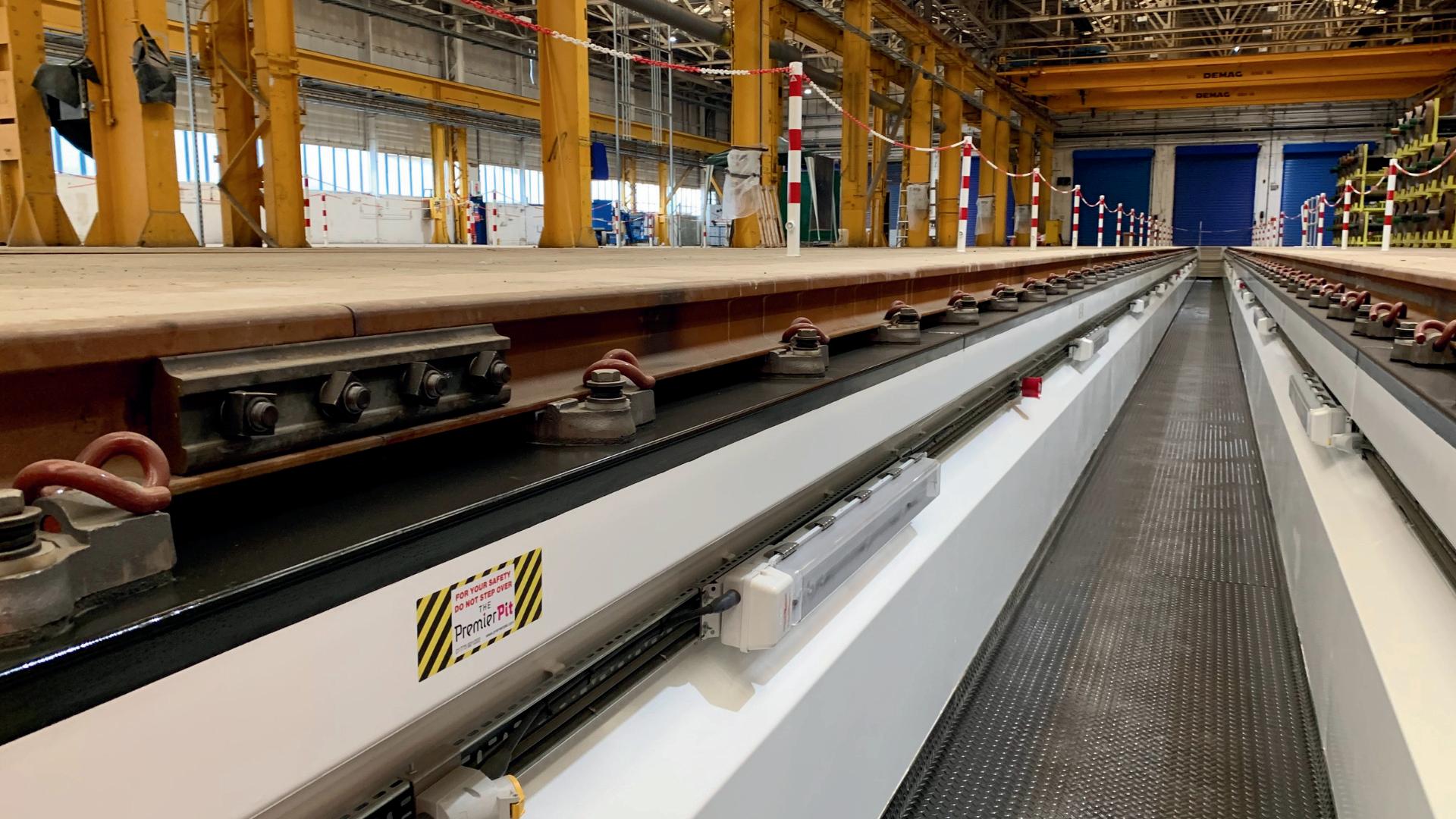



Our product brands: IMI Norgren
IMI Bimba
IMI Bahr
IMI Buschjost

Efficient, safe, and sustainable rail transport starts with the right partner. With over 45 years of expertise, our custom pneumatic and electric control solutions safeguard lives, reduce costs, and keep railways moving. Our transport solutions, covering urban, regional, high-speed, and freight systems, are engineered for exceptional reliability and full global compliance.
• Performance that withstands -40°C to +85°C, meeting the highest safety and durability standards.
• Custom solutions supported locally in 50 countries to maximise operational efficiency and reduce downtime.
Breakthrough engineering for a better world
Chris Showering Product Management
and Marketing Head for Rail at IMI
Chris Showering is Product Management and Marketing Head for Rail at IMI, a role he has held globally for over 15 years. He joined IMI in 1996 in technical sales support, progressing through applications engineering before specialising in rail systems.

Sam Sherwood-Hale spoke to Chris Showering about IMI's strategic shift from component supplier to systems partner, the challenges of rail electrification, and how building trusted relationships with major OEMs is key
SSH: When did you join IMI and how has your role evolved since then?
CS: I joined IMI in June 1996 as part of the internal technical sales support team. My initial responsibilities involved assisting customers by providing product information, technical data sheets, and addressing any related inquiries. Over the past 30 years, IMI has offered me numerous opportunities to grow and develop my career. My role has evolved significantly during this time. I began in technical support and later transitioned to roles such as applications engineer and subsequently into the rail sector approximately 15–16 years ago.
Currently, I hold a global position that encompasses responsibilities in product management and marketing, allowing me to oversee and contribute to broader, global strategies. During that time, as a Tier 2 contractor, you'll have seen the supply chain shift significantly.
SSH: What's been the biggest change?
CS: As a Tier 2 contractor, one of the biggest shifts we’ve observed has been within the supply chain, particularly in the nature of customer engagement. Initially, interactions were primarily centred around fulfilling specific part or product requests
– customers were simply interested in replacing individual components. However, over the years, there has been a notable evolution in expectations. Customers now seek comprehensive, system-level solutions where we act as integral system partners rather than just component suppliers. This transition reflects a deeper level of collaboration, where we work alongside customers to innovate, optimise, and advance their systems. Consequently, while we still maintain an extensive catalogue of legacy parts, our focus has moved away from standalone components to delivering holistic system solutions, demonstrating our commitment to supporting our customers' long-term strategic objectives.
SSH: Why do you think that shift happened?
CS: For me, I think the shift occurred due to several key factors. Firstly, when customers purchase individual component parts from multiple suppliers, it often leads to increased complexity and higher overall costs. By consolidating these components into a complete system from a single supplier, customers can streamline their procurement processes and significantly reduce their cost base – placing one order instead of managing multiple. Also, relying on multiple suppliers introduces a higher level of risk, as
each supplier represents a potential point of failure within the system.
Consolidation helps mitigate those risks by centralising responsibility with a single, trusted partner. Additionally, working with a supplier who provides a comprehensive system fosters stronger, more collaborative relationships. This approach ensures a deeper engagement with the customer’s overall objectives, offering greater oversight and alignment, which ultimately enhances the value delivered.
SSH: Have there been any specific challenges with changing your approach to becoming more like a partner?
CS: This move has of course come with challenges. Building a partnership and establishing trust has been the most significant challenge in transitioning to a more collaborative approach.
Historically, the focus was primarily on engaging with procurement teams, who often operated on a transactional basis, specifying only the immediate needs for particular parts. However, the evolving dynamic now requires expanding conversations to include technical teams. This shift is critical for aligning with their long-term strategies and goals, enabling us to stay ahead of their needs and provide more meaningful support. While
progress has been made in deepening these relationships, breaking through to this level of engagement still requires overcoming barriers of trust and access. Gaining the OEM or end user's confidence to explore deeper collaboration within their organisation remains an ongoing process, but it is integral to achieving a true partnership.
SSH: How has this changed in terms of how your clients deal with you?
CS: This shift has seen us transition from a more transactional approach, where interactions were primarily individual and task-focused, to a fully integrated and collaborative model. Our team now includes highly knowledgeable professionals across various roles, including engineers, myself, and dedicated sales teams. This shift has allowed us to move beyond simply selling individual components to offering tailored solutions specific to the rail industry. By having team members who deeply understand the sector, its unique language, and its complexities, we can provide a level of expertise and confidence that resonates strongly with our customers and OEMs. This expertise fosters trust and reinforces our clients’ confidence in our ability to meet their specific needs.
SSH: What types of companies do you collaborate with?
CS: We collaborate with major OEMs – from train builders to complex system suppliers. Additionally, we also work with a wide range of operators. Our support spans the entire lifecycle of trains – from the initial manufacturing phase with OEMs to working closely with operators when trains are in service, addressing product updates, redesigns, or replacements as needed. This approach ensures we provide value at every stage, from the inception of the train to the end of its operational life.
SSH: When a client comes to you with a particular problem, what's the process you work with them through to come up with a solution?
CS: When a client approaches us with a specific challenge, our process is collaborative and solution oriented. From the outset, we engage our engineering team and work to thoroughly review the initial specification provided by the client, carefully analysing the details to determine feasibility. Following this review, we provide the client with initial feedback, outlining our proposed approach and confirming that the project aligns with our capabilities. At this stage, we invite the client's engineers to engage directly with our team. This ensures that we all work together to refine the solution, address technical possibilities and constraints, and land on a clear and actionable path forward. This method not
only fosters transparency but also ensures the delivery of effective, tailored solutions.
SSH: What's the most interesting project you're working on at the moment?
CS: I think the most interesting project we are currently working on focuses on electrification, which represents a significant shift in the rail industry. Specifically, we are exploring the development of electric drives for pantograph systems, while also exploring how electric actuation can replace traditional pneumatic solutions in various train applications. This is particularly exciting for us because, as a company with a strong reputation in pneumatics, we are now adapting to align with the future direction of the industry.
Electrification introduces new challenges for us in rail, especially in relation to strict environmental, safety, and specification requirements, making this an entirely new frontier in this sector. While electric actuation is not unfamiliar to IMI through our work in Industrial Automation and other verticals, applying this technology to the rail industry also an opportunity for our team to expand our expertise and contribute to the evolution of rail technology.
SSH: That's interesting that other parts of the business have some experience with this. What's the best practice or particular lessons that you've learned from that side that you're applying to the rail side?
CS: One of the key best practices we've identified is the importance of cross-functional communication and collaboration. By engaging with other parts of the business, we've been able to gain valuable insights into the challenges they faced and the lessons they learned during product development.
While electric drives may initially appear similar across industries, in the rail sector, the requirements are significantly more complex due to stringent validation, safety, and compliance standards. This makes the process far more involved. By incorporating their experiences – understanding what
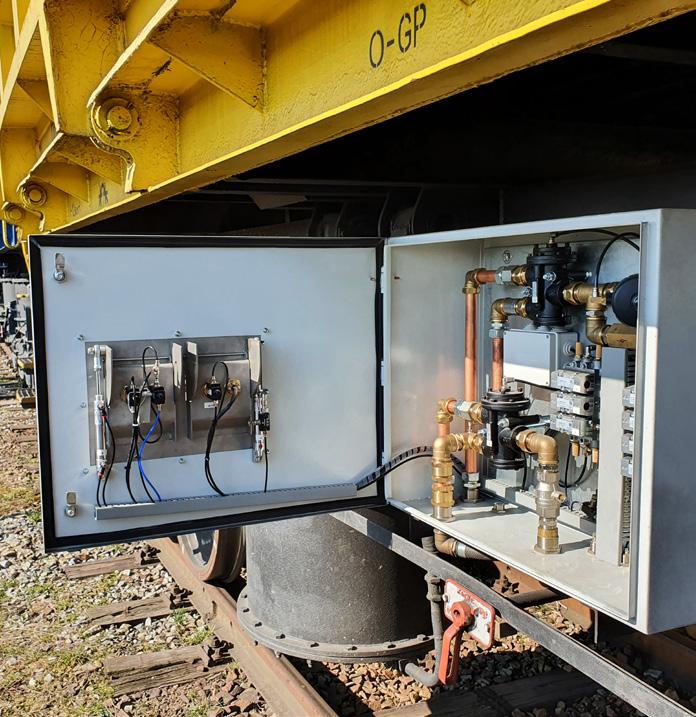
they did, how they approached it, and the rationale behind their decisions –our engineering team has been able to integrate these lessons effectively. They have combined this knowledge with the specifications provided by our rail customers to develop a robust product tailored to the unique demands of this industry.
SSH: Talking about electrification, I was reading in the article that triggered this interview where you wrote about the electrification opportunity gap. Switzerland has achieved approximately 99 per cent of its rail network being electrified, the UK is only around 38 per cent. What do you think is the cause of that huge gap and what can we learn from what the Swiss are doing?
CS: I think the biggest gap is the investment for infrastructure. Ultimately, if we don't have the infrastructure, there's no point having the trains to run on it. So, it's the infrastructure which is the biggest issue and that's usually addressed by government or private funding.
SSH: That cost challenge is something else you mentioned in the article – some OEMs are re-evaluating their approach to cost control. What's the real effect of this?
CS: The cost challenge is a big factor. Many OEMs are reassessing their cost control strategies. The real impact of this lies in balancing the drive for cost reduction with the stringent safety and compliance standards inherent to the rail industry. While there is an increasing demand for more cost-efficient solutions, the nature of rail products – where safety and reliability are paramount – makes this a particularly complex equation. Achieving cost efficiency without compromising on the rigorous certifications, validations, and safety requirements necessary to operate on the network is a meticulous process that requires careful consideration and innovation.
SSH: Is that something that you anticipate changing?
CS: Fundamentally, this will hinge on securing increased investment and support from key stakeholders, including government and industry bodies. Investment is indeed crucial to catalyse progress. Major OEM train manufacturers are already proactively developing products designed for electrification, which can be utilised on extensive electrified rail networks, such as those in Switzerland and China, where a significant proportion of lines are already electrified. These regions are a great example of the successful adoption of electrification, and the UK, among others, must invest efforts to bridge the gap and align with these advancements in rail infrastructure.
SSH: What's the biggest misconception you see companies making when they try to balance sustainability goals with cost control?
CS: I think even outside of rail, companies frequently focus on immediate costs rather than long-term benefits. Implementing changes may have a higher upfront cost but can significantly reduce expenses over time.
SSH: From your perspective at IMI, what's the one strategic shift you believe will separate the leaders from the laggards in this balance between sustainability and decarbonisation against economic imperatives?
CS: I think it goes back to that bottom line of developing trusted partnerships with the OEMs. I think that will give you the edge when it comes to being a leader rather than a follower. Establishing such trust ensures a collaborative approach to innovation, where OEMs are confident in sharing their forward-looking visions and technological goals. This collaboration allows for proactive engagement in developing tailored solutions, enabling companies to stay ahead of industry challenges and the evolving landscape. Ultimately, fostering these partnerships is key to positioning as a leader within the industry, driving sustainable progress while meeting economic demands.
SSH: In terms of getting that trust and getting that information, what's that process like?
CS: Our strategy is always based on the future market and what we think is going to happen and the best and most reliable source for that information is the actual OEM. So, if you've got that trusted partnership with the OEM, they will share that with you. And that's how our strategy works. By cultivating trusted relationships with six or seven key OEMs, we gain access to invaluable intelligence about industry developments and emerging trends. While market reports and external analyses remain beneficial, the foundation of our strategy lies in actively listening to and understanding the perspectives of our customers. This customer-centric approach ensures that our strategies are both informed and adaptive to the needs of the industry.
SSH: Are they all singing the same tune in terms of where the market’s going?
CS: There is a strong alignment among OEMs regarding the market's direction. While each organisation naturally has its own set of priorities based on its own business, they are largely aligned on key themes. A central focus is cost reduction, which remains a significant driver across the board. Reliability is also a critical factor, as many OEMs get a substantial portion of their revenue not from the initial sale
of trains, but from long-term maintenance contracts, often spanning up to 30 years. Due to this dynamic, the reliability of their products and systems is paramount; unreliable solutions would lead to higher costs over these extended contracts, undermining profitability. By ensuring high reliability, OEMs not only reduce potential long-term costs but also bolster the value of their maintenance agreements, which are essential to their revenue model.
SSH: Is that a positive development do you think?
CS: Yes, I think it is a positive way of working now. Most OEMs seem to adopt this model, actively engaging in long-term maintenance contracts. This framework is advantageous not only for the manufacturers but also for the end users. By entrusting maintenance to the original OEM, end users can benefit from the expertise of those who designed and built the trains. OEMs have an intimate understanding of their systems, including what can or should be modified, and are unlikely to rely on substandard components. Instead, they ensure the use of original, high-quality parts to maintain reliability and performance, to ensure the train's operations are maximised.
SSH: You mentioned market reports and how you value the actual conversations you're having with the OEMs more. Is that something that you've seen change in terms of the value that comes out of those market reports? Are the conversations you're having with individual people at these OEMs more data rich?
CS: The market reports we receive have remained relatively consistent over the years in terms of the information they provide. They offer valuable insights into high-level metrics, such as the number and types of trains being manufactured. However, these reports often lack the granular details required to fully understand the specific systems being implemented within those trains.
That level of insight is critical for us to accurately evaluate our market position and determine the percentage of products or systems we contribute to a given train. Engaging directly with OEMs provides a far richer and more in-depth perspective. Through these conversations, we gain a clearer understanding of the specific systems the OEMs plan to integrate and how they align with the unique requirements of end users across different regions.
SSH: What process do you put in place to make sure that you're servicing that particular need?
CS: This goes back to being close to the customer. For instance, customers often inform us when they are entering the
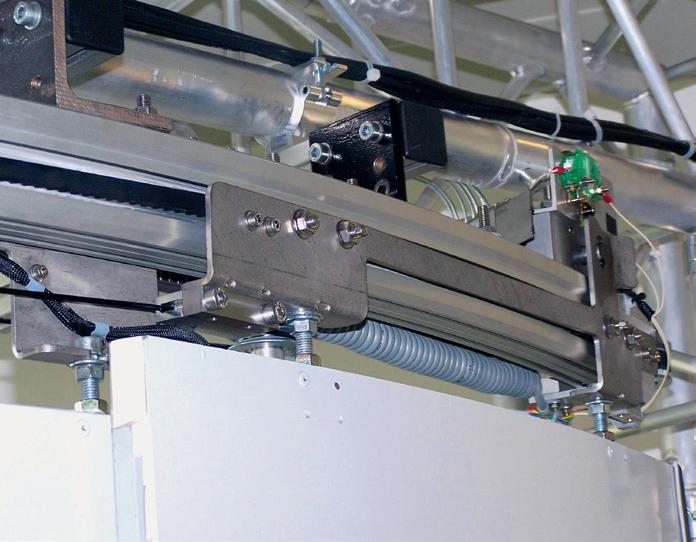
tendering phase for new projects, and during this stage, we collaborate closely to provide the necessary pricing and system information. This proactive approach allows us to identify the systems we will supply early on, ensuring we are well-positioned to support them should they secure the tender. By staying aligned with our customers at every step, we can deliver tailored solutions that meet their unique needs.
SSH: Do you have maybe a specific example where this sort of collaboration has really improved an outcome for an end user?
CS: One notable example of how our collaborative approach has significantly improved outcomes for an end user relates to a project with a European OEM. They approached us for the development of an internal door system for their high-speed train. While we have extensive expertise in door systems, we were not their initial supplier of choice. However, they turned to us when other suppliers, who predominantly offered standard, off-the-shelf products, were unable or unwilling to accommodate their need for customised solutions.
We worked closely with the OEM to design and develop a solution tailored to their specific requirements. This process not only demonstrated our engineering capability but also fostered a strong and trusting partnership with the customer. Over the past eight years, this trust has been reflected in their continued reliance on us for a range of additional applications, including secondary suspension systems. Within this area, we have successfully delivered solutions across multiple projects, as well as partnered with them on new technological developments in secondary suspension.
The key to this successful partnership has been our commitment to collaboration and support. We prioritise listening to our customers, maintaining open communication, and ensuring direct engagement through site visits and joint engineering efforts. For instance, when producing samples, we actively participate in their assembly and testing processes, ensuring a seamless integration into their operations. Similarly, their regular visits to our facilities further strengthen mutual understanding and cooperation. This
partnership shows the value of aligning closely with our customers to deliver bespoke solutions meet real industry challenges.
SSH: Looking ahead five years, what will differentiate the rail OEMs that thrive in this decarbonised future from those that might struggle to adapt?
CS: Looking ahead over the next five years, the rail OEMs that will excel in a decarbonised future are those that can strike a balance between technological advancement and cost-effectiveness. The challenge lies in implementing the right solutions at the right price point, recognising that not every situation requires a premium, top-of-the-line approach. It will be essential to prioritise practicality and feasibility, understanding both the limitations and opportunities within their strategies. Successful OEMs will focus on delivering innovations that meet sustainability goals while remaining realistic about what can be achieved within budget and market demands. Ultimately, those who adapt by aligning ambitions with achievable outcomes will lead the way.
SSH: You wrote an article a few years ago about three new secondary suspension products for rail, emphasising this 'one stop shop' capability. How has that strategy evolved and what role does it play in your current approach to your partnerships?
CS: The article you’re referring to marked an important shift in how we positioned ourselves within the market, transitioning from being seen as a supplier of individual components to a provider of integrated systems. At that time, we showcased how three distinct secondary suspension products could be combined to create a cohesive system, demonstrating our capability to deliver greater value through a more holistic approach.
Over the past two years, this strategy has become a central element of our operations. While we don’t develop complete systems, such as braking systems in their entirety, we integrate the elements we specialise in, offering grouped components that align seamlessly within larger systems. This approach has allowed us to provide more comprehensive solutions to our partners, fostering stronger and more collaborative relationships.
SSH: Was this shift to being more of a system supplier something that came from your clients, or were you driving it?
CS: Our clients have consistently emphasised the importance of reducing risk and cost by working with a single supplier capable of delivering all the products required for specific applications. For several years now, we’ve been proactively
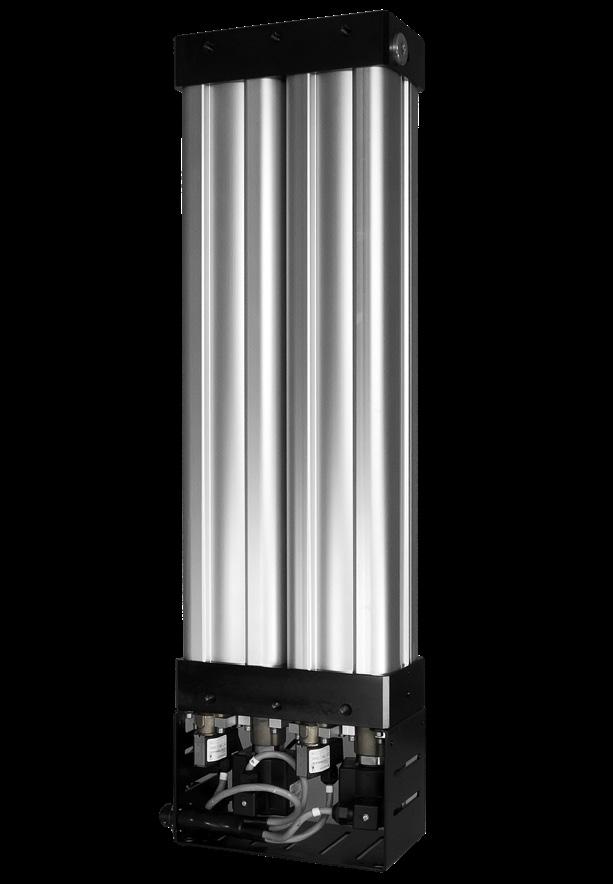
communicating this strategy, making it clear that we are a system supplier rather than a provider of standalone components. Today, leading OEMs fully recognise this capability, as evidenced by the nature of the projects they now approach us with. This shift has been about educating our customers on what we can offer and demonstrating our ability to deliver these comprehensive solutions.
SSH: Once you've got that message across, do you see a significant shift in terms of the working relationship?
CS: Definitely. By establishing ourselves as a trusted partner, the dynamic evolves considerably. It fosters a deeper level of collaboration and trust, encouraging customers to share more insights and involve us in broader discussions. Instead of limiting interactions to procurement teams, we are now engaging with their engineering and R&D teams as well, exploring opportunities for future innovations.
This is particularly important in the rail industry, where projects often span two to three years before yielding substantial results due to extensive testing and refinement. It underscores the need for a long-term outlook, as we consistently focus on planning and developing solutions for the next three to five years.
SSH: Has that runway gotten longer?
CS: It’s certainly changed. Initially, our role was primarily that of a component supplier. The process was relatively quick – you simply provided the product to the client. Occasionally, we would be tasked with delivering systems, which inherently required longer lead times as this is the standard practice within the rail industry.
Typically, the industry demands at least twelve months of in-service testing under various conditions – different environments and seasons – to ensure reliability and
compliance. Even for certain individual products we supplied, extensive testing periods were mandated before they could be implemented and integrated onto the trains. This underscores the inherently long-term nature of projects in this sector.
SSH: In terms of justifying the ROI on decarbonisation investments, is that something that you're also involved in?
CS: Yes it is. While original equipment manufacturers (OEMs) typically have their own specific targets and milestones related to decarbonisation, at IMI, we also have established sustainability objectives that align with these broader goals. Our role involves closely collaborating with OEMs to understand their decarbonisation strategies and requirements. By doing so, we aim to offer solutions and support that help them effectively meet their targets while maintaining alignment with our own commitments to sustainable development.
SSH: Is there a synergy or similarity across the different six or seven major OEMs that you work with? Are they all on the same page in terms of their targets?
CS: Yes, I think so. There is a noticeable synergy among the six or seven major OEMs we collaborate with in terms of their approach to decarbonisation. While each OEM has its own roadmap and specific milestones, there is an overarching alignment driven by global and governmental push towards sustainability. None of the OEMs are committing to an immediate and complete transition, but rather adopting a phased and pragmatic approach, focusing on gradual improvements. For instance, the development of hydrogen-powered trains illustrates this progression. While currently limited in scale, these initiatives highlight the industry's commitment to innovation and continued progress towards decarbonisation.
SSH: Do you see some as being more successful or less successful?
CS: There are variations in the success and progress of different organisations within the industry. With regard to hydrogenpowered trains, one company has notably distinguished itself by launching their trains earlier than others, thereby establishing a strong reputation in this area.
This early adoption has positioned them as a leader in hydrogen train development. However, when considering the broader scope of decarbonisation efforts, there appears to be a general agreement across organisations. The nature of enquiries, whether related to electrification or other sustainable advancements, tends to be quite similar, reflecting a shared focus on achieving sustainable innovation industry-wide.
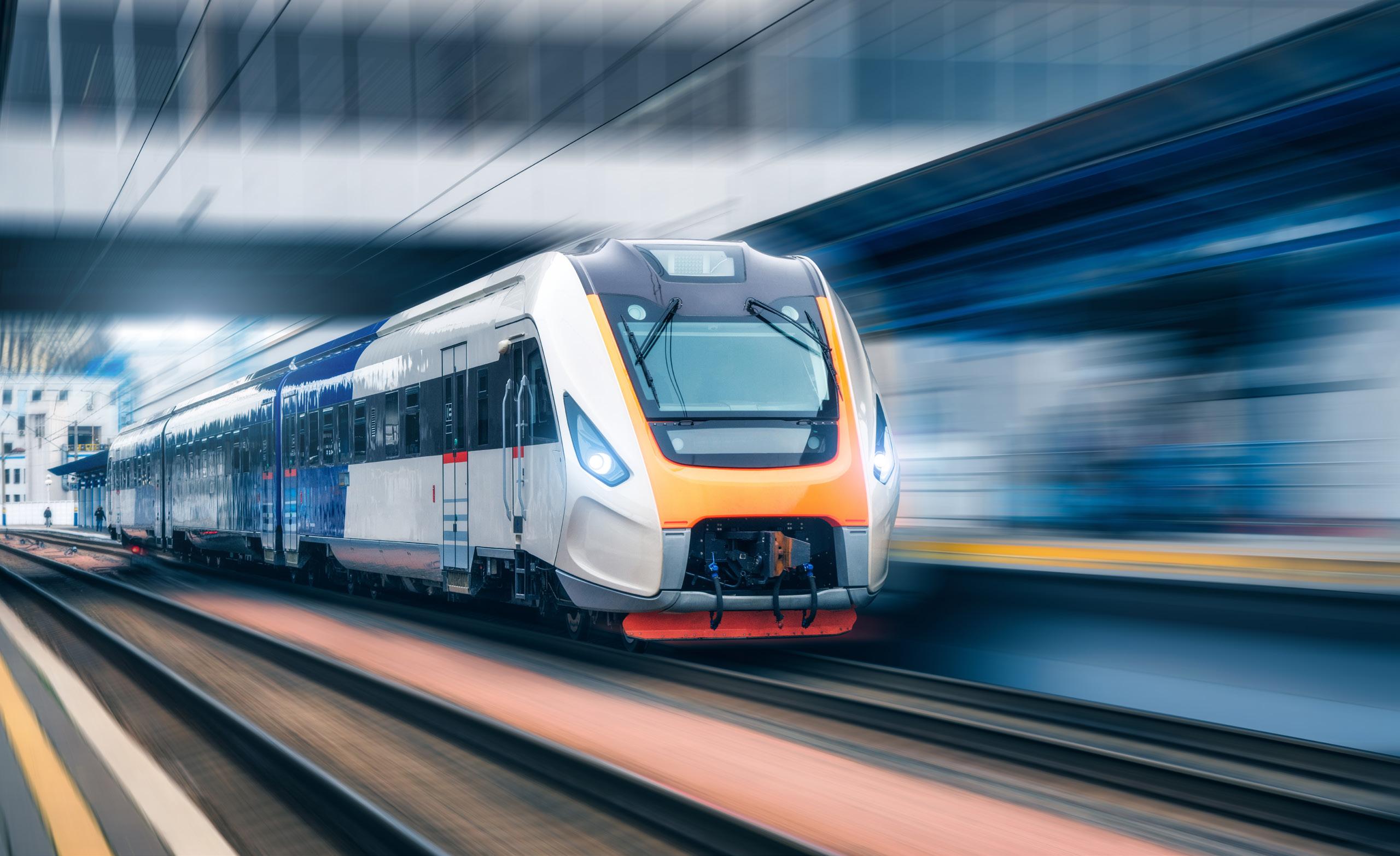


Norbar is a UK manufacturer of battery, electric, pneumatic and manually operated torque multipliers, wrenches, torque measurement equipment and bespoke torque control solutions specially developed for the rail industry Contact Norbar and speak to The Voice of Torque Control

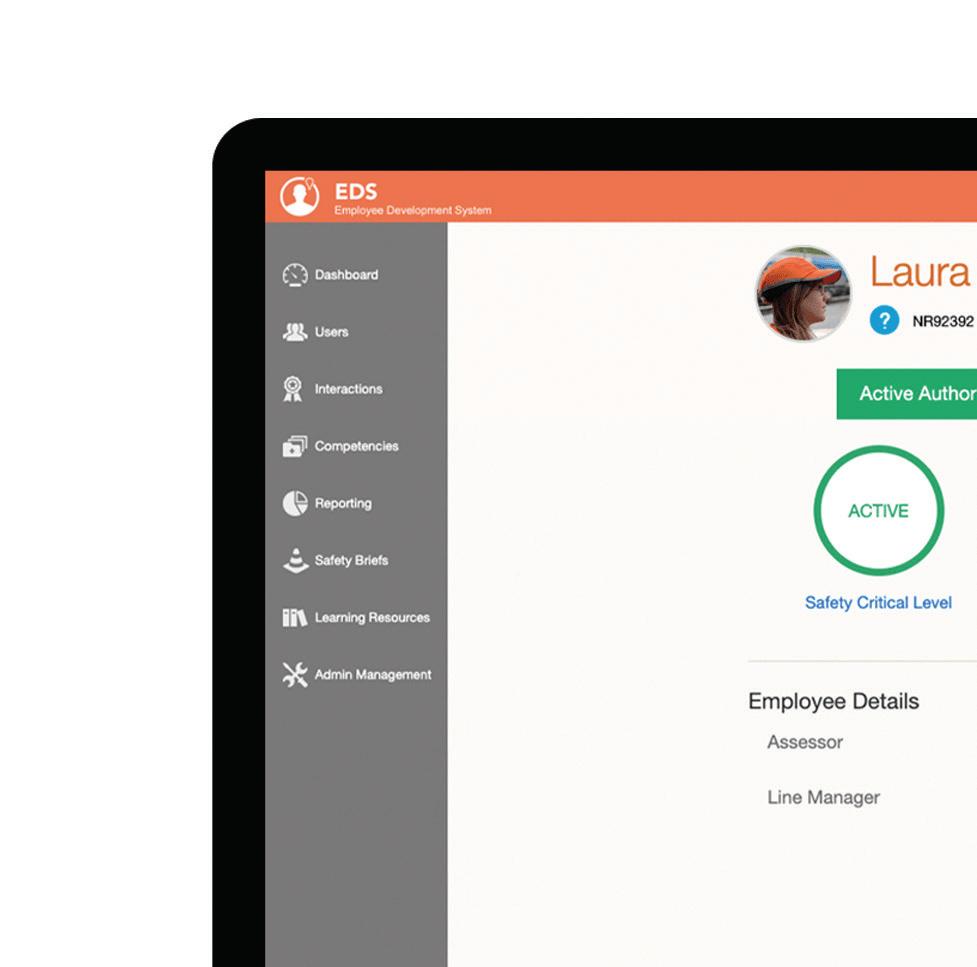
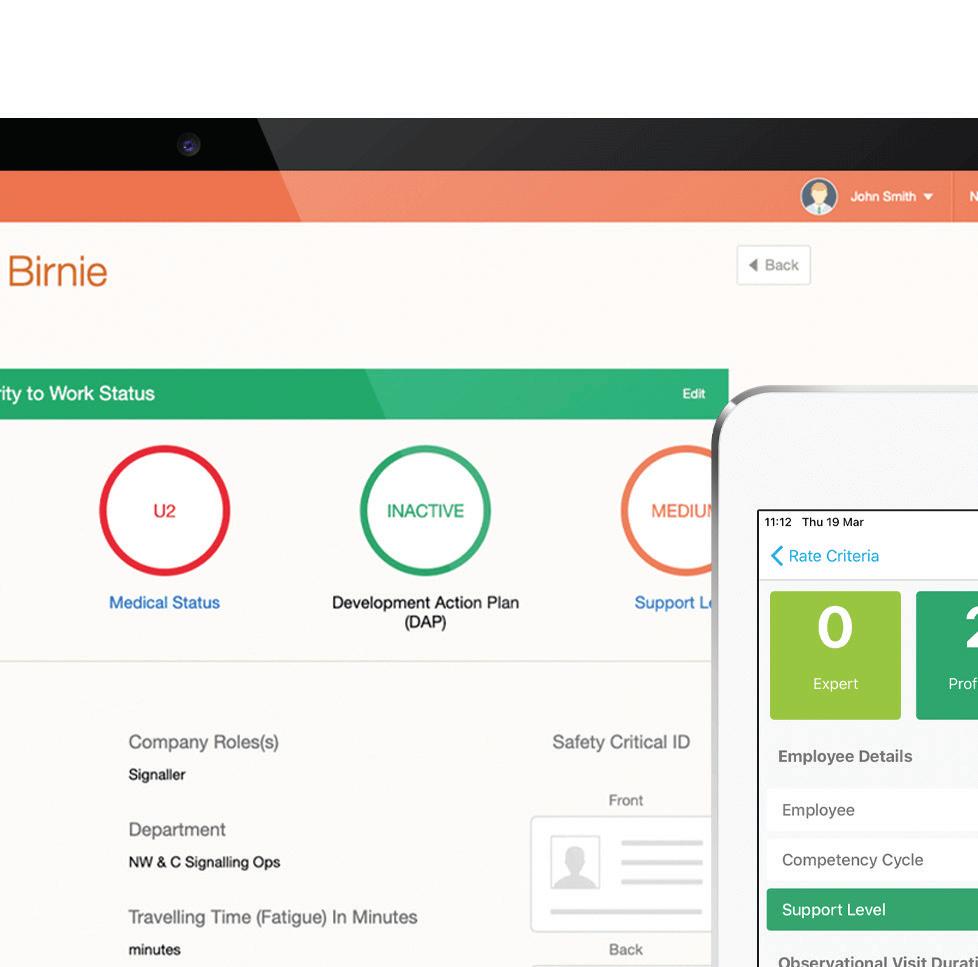

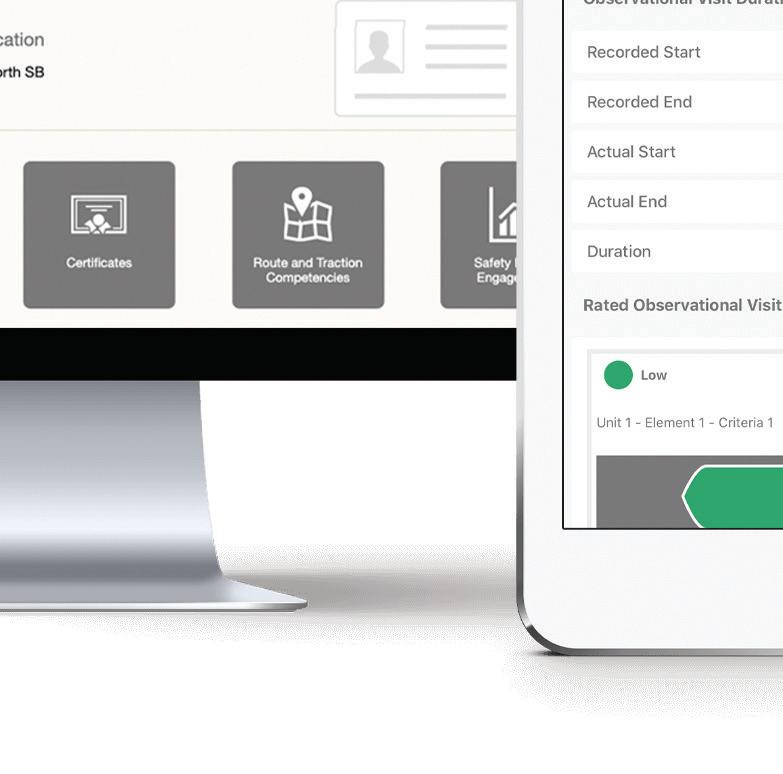
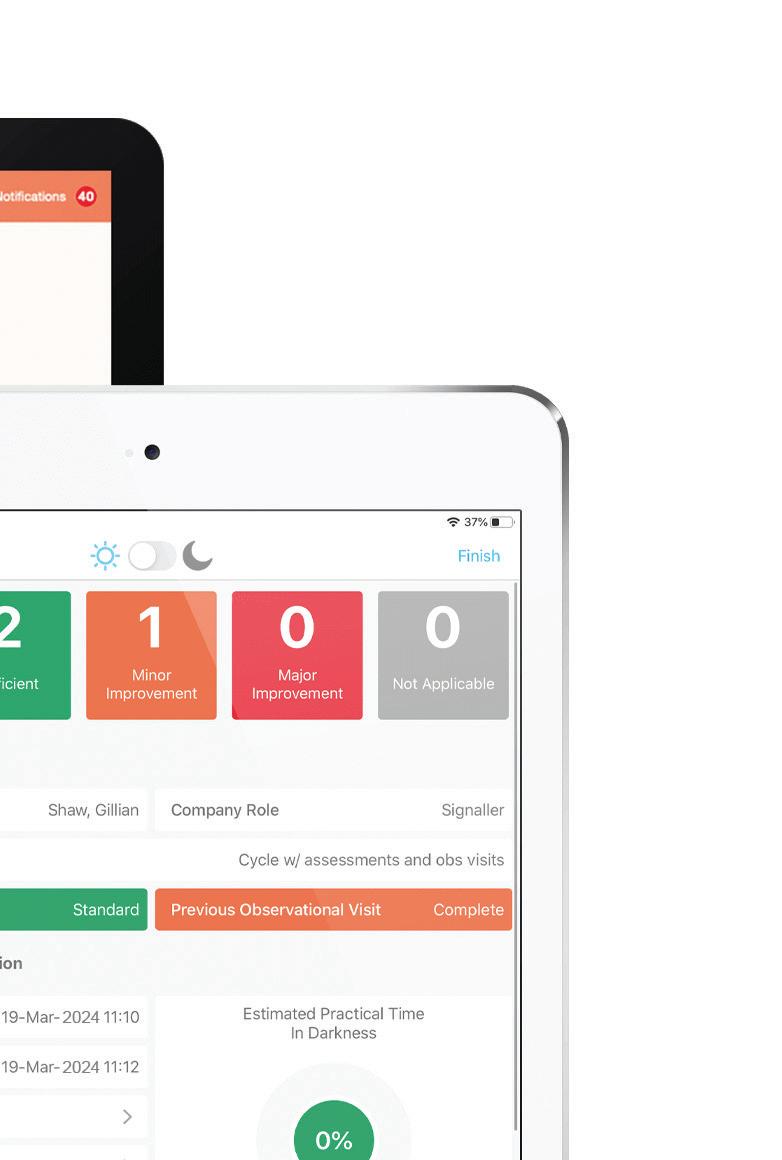
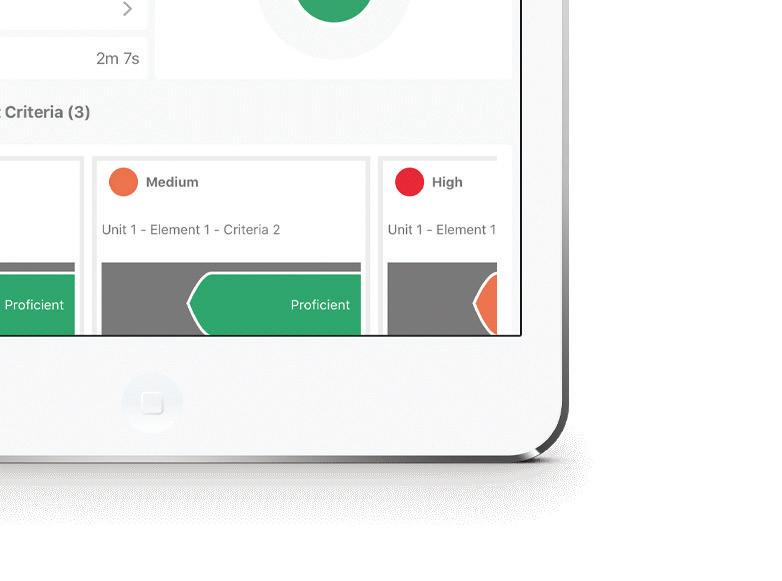
Ellis Patents' Cable Hangers at Cockfosters Depot
Transport for London has installed Ellis Patents' Pegasus® cable hangers at Cockfosters Depot as part of the Piccadilly Line Upgrade

As part of the Piccadilly Line Upgrade, Transport for London (TfL) embarked on a project to modernise the cable management system at Cockfosters Depot. The initiative aimed to replace ageing infrastructure with a solution that was quick to install, durable, and compliant with stringent safety standards.
Ellis Patents collaborated with Anchor Systems (International) Ltd and Arbourtech Services Ltd to deliver an innovative Cable Route Management System (CRMS) tailored to these requirements.
Ellis Patents' contribution
Ellis Patents supplied the Pegasus® Composite Cable Hanger System, renowned for its strength and lightweight design. The hangers are constructed from high-strength glass reinforced nylon, ensuring resistance to corrosion and suitability for harsh environments. The modular design allows for easy installation and adaptability to various cable configurations.
Collaborative partnership
Anchor Systems (International) Ltd provided the patented domed anchor screws, forming the foundation of the CRMS. These anchors eliminate the need for concrete, allowing for rapid installation and minimal disruption to existing infrastructure.
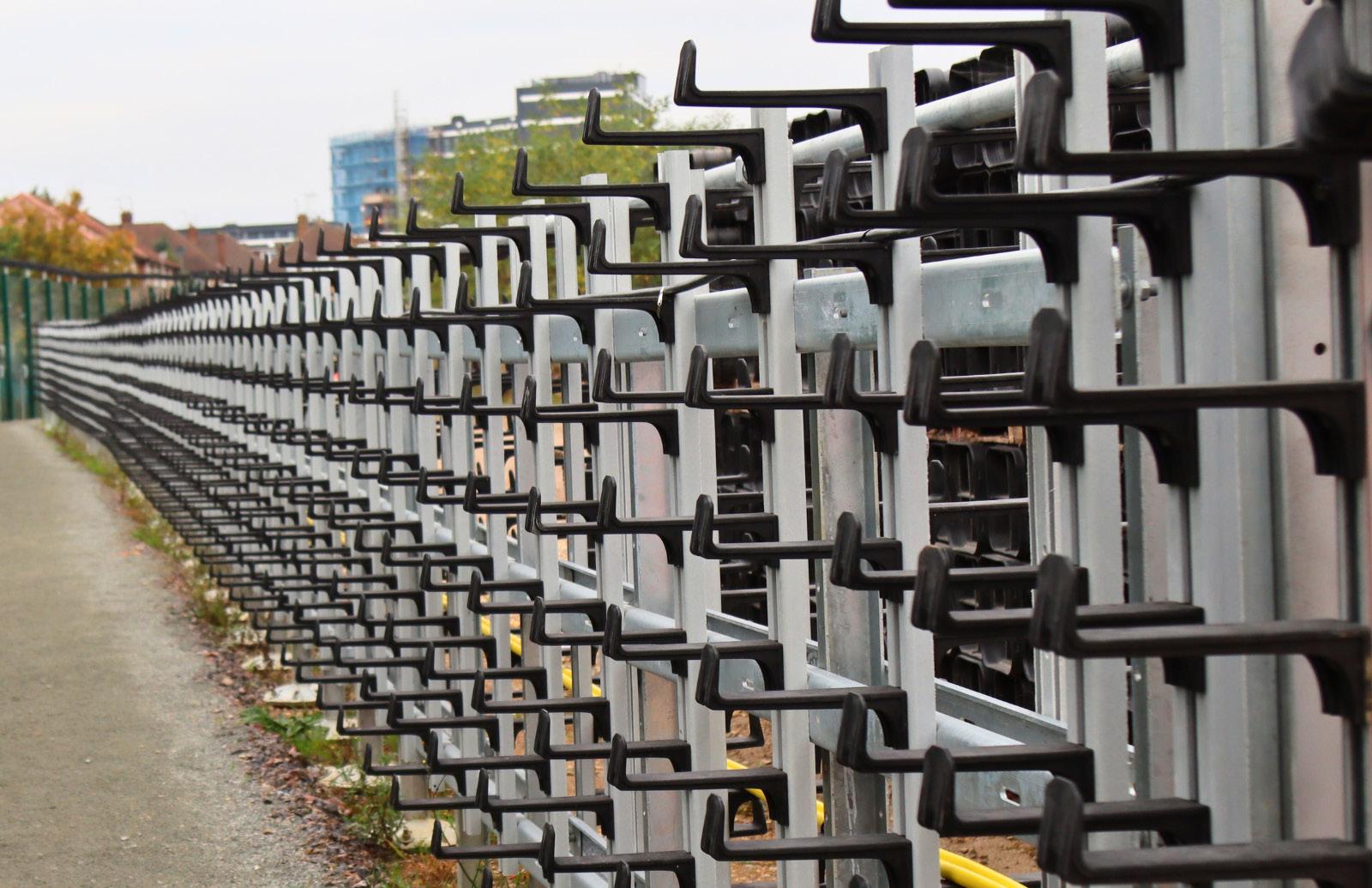
Arbourtech Services Ltd manufactured the GRP posts that support the cable hangers. The posts are designed to integrate seamlessly with both the anchor screws and the Pegasus® hangers, ensuring a cohesive and robust system.
Implementation and results
The integrated system was deployed along a 500-metre stretch at Cockfosters Depot. The use of domed anchor screws allowed for installation times of four to eight minutes per anchor, depending on ground conditions, significantly reducing project timelines. The modularity of the Pegasus® hangers facilitated efficient cable management, accommodating various cable sizes and configurations. The entire system was installed without the use of concrete, minimising environmental impact and allowing for immediate load-bearing capacity.
Conclusion
The collaboration between Ellis Patents, Anchor Systems, and Arbourtech Services Ltd resulted in a state-of-the-art cable
management solution that met TfL's stringent requirements. The success of the project at Cockfosters Depot demonstrates the efficacy of the Pegasus® Composite Cable Hanger System in modern rail infrastructure projects, setting a benchmark for future installations.

To see more pictures and video explanation about the installation for this and other cable management solutions provided by Ellis go to: https://www. ellispatents.co.uk/casestudies Tel:
As the rail industry moves towards an automated future, it is facing the complex challenge of balancing safety and innovation. Its ability to move forward will depend on breaking down silos and working together across the supply chain.
Few understand this better than Phil Judge, industry manager for transportation at WAGO. With deep experience across rolling stock and infrastructure, he brings a solutions-focused mindset to every project. Here, he talks about his own career journey, and explains why building a shared vision is vital to building a smarter, safer rail network.
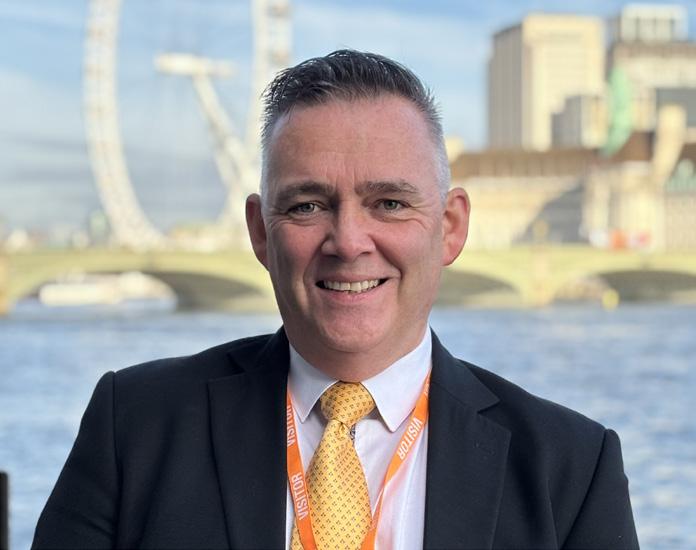
PHIL JUDGE INDUSTRY MANAGER –RAILWAYS – WAGO UK & IRELAND
Phil has sole responsibility for the UK rail Industry on behalf of WAGO. He has been in the industry for nearly ten years, and is dedicated to improving connection technology.

WAGO UK & IRELAND
WAGO is a family-run German electrical component manufacturer founded in 1951 by Heinrich Nagel and Friedrich Hohorst. The company pioneered screw-free, spring-loaded electrical connections that enhance safety and reduce maintenance requirements.
Want to know more about WAGO UK & Ireland?
Tel: 01788 568 008
Email: uksales@wago.com
Visit: www.wago.com/gb/railwaysystems
How did you get started in the industry?
I did not set out to get into the rail industry: it was a natural progression. I was working at another component manufacturer when the opportunity came up to move into the sector, and it sounded really interesting.
At the time, I did not realise the size and complexity of the UK’s rail industry. It was a steep learning curve, because there is so much you need to know. You need to understand the overground and the underground, with all their slight differences and nuances, as well as all the rigorous standards.
I love that the industry is more like a community than an industry. Through the various industry associations, such as the Rail Forum (RF) and the Rail Industry Association (RIA), you feel as though you are only ever a step away from the person you need –whether that’s Sir Andrew Haines, Chief Executive of Network Rail, or the signalling or maintenance engineers.
What is your role within WAGO?
I am currently industry manager for transportation at WAGO. My role covers every aspect of the whole of the UK and Ireland railway network. That’s the rolling stock, the infrastructure, refurbishment, and everything in between.
One of the primary things I do is work with rolling stock manufacturers to help them to deliver a finished project. What really interests me is understanding their problems, and coming up with solutions. That is what I love about my job. It is not about selling products, it is about answering the questions of how we can be smarter and safer.
Tell us about WAGO.
WAGO is a family-run business that makes safe and reliable electrical components. It was founded in 1951 by Heinrich Nagel and Friedrich Hohorst, brothers-in-law who developed screw-free, spring-loaded connections.
We first entered the sector following the 1988 Clapham Junction rail crash, in which 35 people were killed and hundreds were injured. An inquiry later found that a nut and bolt connection had come loose and shorted a signal. You just do not have that risk with a spring-loaded connection – you put them in, and they do not come out.
With WAGO’s spring-loaded connectors, we can enhance safety and reduce maintenance; if you have less maintenance you don’t need people driving to site, so you have less carbon emissions and those people can be working on other things, which drives up productivity.
When a client comes to you with a particular problem, what is your process for coming up with a solution, and how closely do you work with clients throughout the projects?
The first step is a general chat with the customer to understand their goals, their constraints, their timelines, and their budgets. I then work with our internal engineering team to look at the best solution. After running the customer through our ideas and taking on their feedback, we put that solution together. We will use WAGO products as well as, where necessary, products from third parties to make sure we can enable the customer to meet their end goal. We will then work with the customer on a trial, and, based on the results, make modifications before rolling out the final product.
As part of this process, we will always be thinking about how we can make the solution scalable to the customer’s potential future needs. Sometimes, our clients will only see their immediate problem, but we have so much experience in the sector that we can take a more holistic view. If we are working on a request for lighting control, for example, we will suggest incorporating capacity for energy and data management and predictive maintenance later down the road.
How do you work with the supply chain?
As the component manufacturer, we are right at the start of the supply chain. It is my job to liaise with every single other supplier to deliver what the customer wants, to the standards they need to meet. If we are working on a solution that needs a product we do not have in our portfolio, we will source it from a third party, for example. If we are working with a train manufacturer to design some quick connections, they may need to plug another system into that – be that a power socket or a push button – so I will work with those suppliers to ensure everything fits together.
From the other side of things, everyone in the rest of the supply chain can use our products. It means I work with the whole supply chain, from the top to the bottom. It means I need to be able to connect with people from across the sector.
What challenges have you faced in the industry?
The biggest challenges we have faced in the rail industry relate to the infrastructure side of my role. We have the safest railway network in the world. We really do put passengers first, and that is something to be proud of. However, sometimes it means people do not want to change, because they do not want something to go wrong. Current signalling systems are a prime example of this. They still use 2BA nut and bolt connections that can loosen over time
and require periodic maintenance. Springloaded connectors would be safer and are maintenance-free, but there is resistance to change.
Railway safety is a matter of life and death, so of course we need to be risk adverse. Yet I think we, as an industry, need to look at the evidence base we have in front of us. Cost can also be a barrier to change. Network Rail can be resistant to green lighting new components that may be more expensive than approved solutions, even if the benefits are clear. Sometimes, regulatory bodies do not look at the whole-life savings that could be achieved with, for example, maintenance-free connections.
What is the biggest challenge the sector itself currently faces?
The biggest challenge for the sector as a whole is aligning on the journey ahead. The rail industry wants to innovate, go digital, and move towards a ‘track and train’ model. The idea is that everything becomes one automated system in which the track talks to the train, and the train talks to the track.
But there is little clarity around what that journey looks like, and what steps we need to take to get there. With a shared vision, suppliers such as WAGO could ensure that the innovation we design into our next
generation of products fits with the route of innovation the rail industry wants to take.
What are your hopes for the new regulatory bodies, such as Great British Railways?
Great British Railways (GBR) has the potential to help us overcome that problem, and create a shared vision for the journey ahead.
At the moment, the rail industry is very siloed. One region may come up with a fantastic innovation, something that improves safety or reduces carbon, for example, but it won’t be shared across the network. I hope GBR will become a central functioning body that will drive efficiencies across the country; that track and train become one across the country.
What are your views on collaborative working?
Collaboration across the industry is key to building our shared vision of the future.
To innovate, the industry needs to be open to change. We all have our skills and our ideas, but nobody is good at everything, so we all have to work as a team. There is a huge amount of talent out there and a lot of people who want to make the
‘The biggest challenge for the sector as a whole is aligning on the journey ahead.’
industry better. We need to make sure we work collaboratively with them, through organisations such as the RF and the RIA. By sharing our particular knowledge and expertise from all the separate subsectors we work in, we can plan a safe, efficient journey to a safer, smarter rail network.
How can a company achieve the necessary creativity to innovate without compromising their existing business?
Again, it is about understanding where the industry is going, rather than focusing solely on price. Someone can have an amazing idea for the best product in the world, but it won’t sell unless the industry wants it.
We need to know what the sector wants to achieve and when, and have a full understanding of the life-time costs of both our and existing products. That way, we can ensure our solutions are future-proof – both for us and the sector at large.
POWERING TOMORROW’S RAILWAYS
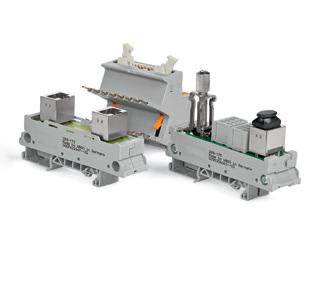


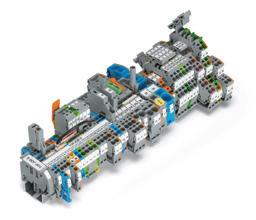



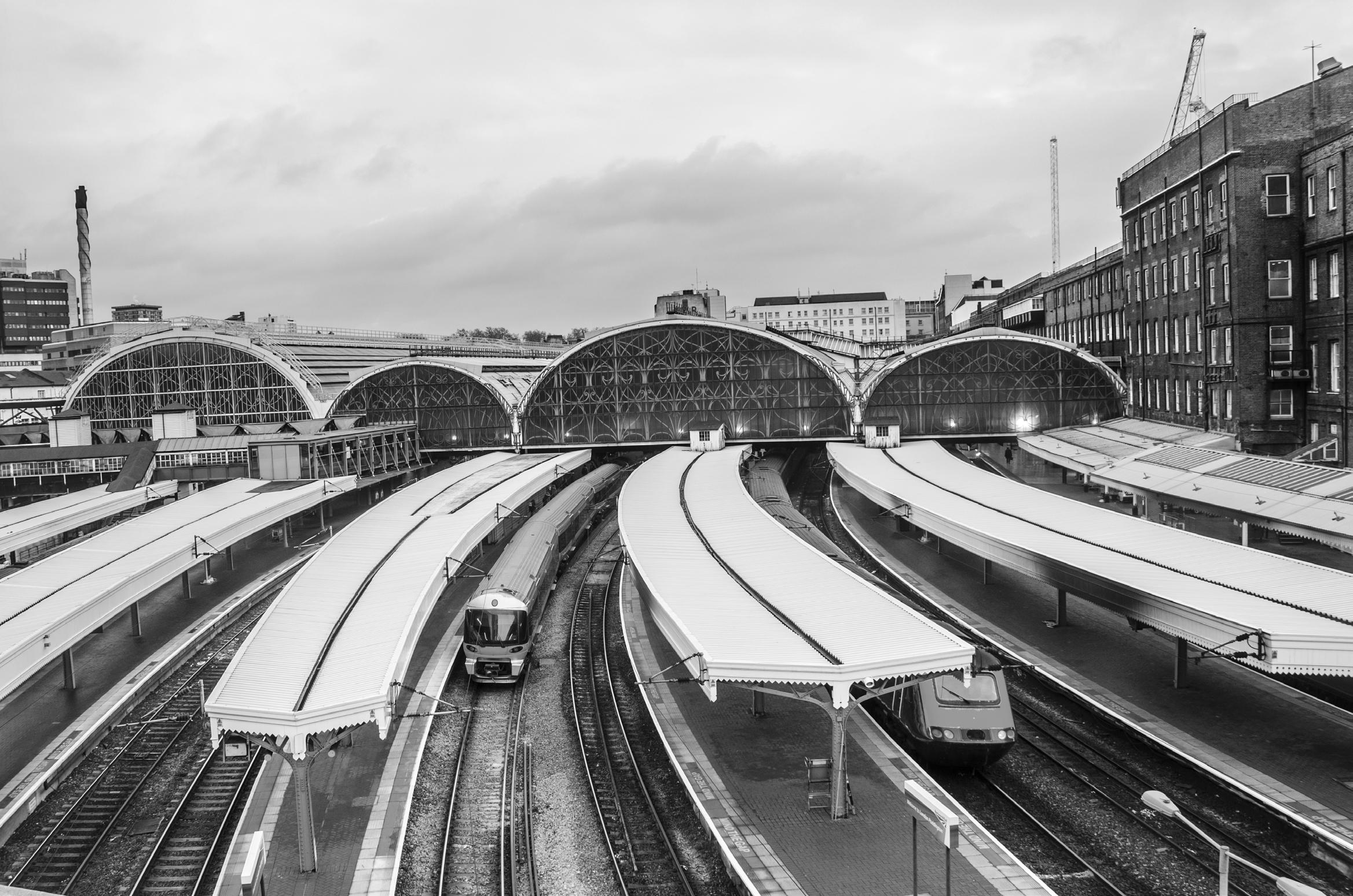
https://www.wago.com/gb/railway-systems
Miça Schultz
RSVT Product Lead at Loop
Miça Schultz is Product Lead for the Rail Social Value Tool at Loop. She has been instrumental in integrating the Sustainable Rail Blueprint framework into the RSVT platform and finds particular satisfaction in following ideas through from initial conception to final implementation.
‘The train and freight operating companies are just the start of the impact. The vast supply chains that they work with every day creates a network of impact into local areas.’

Loop is the leading social value measurement software with unrivalled accuracy. Designed for organisations looking to understand their social impact, Loop’s easy-touse platform and expert economists provide quality forecasting and measurements that build a true, accurate, and tangible picture of their social value – no matter what their business does.
Founded in response to the Social Value Act 2012, Loop uses the National Social Value Standard (SVS) framework. Loop is B Corp certified, as well as being a Good Business Charter business, HM Government G-Cloud supplier, and a Living Wage Employer. Headquartered from central Hull, Loop is part of Pagabo Group. For more information, please visit https://loop.org.uk/
Angus Townsend Director of Social Value at Loop
assessments more accessible and accurate for organisations.
‘Social value is a challenging area to measure as there is a huge scope to consider that directly or indirectly impacts people and the planet. The themes it is trying to assess are often intangible, such as mental health, or require a lot of data.’

Sam Sherwood-Hale spoke to Miça Schultz, RSVT Product Lead at Loop, and Angus Townsend, Director of Social Value at Loop, about the evolution of the Rail Social Value Tool, the challenges of measuring social impact in the rail sector, and how the new Sustainable Rail Blueprint Dashboard integration is helping operators enhance their social value reporting across the industry
Angus Townsend is Director of Social Value at Loop, where he works with the team of expert economists and consultants to make complex social impact
SSH: Could you both explain your roles at Loop and how they complement each other in driving the development and implementation of the Rail Social Value Tool?
MS: As the product owner of the Rail Social Value Tool (RSVT), my role is to manage the future development roadmap of the RSVT and facilitate all ongoing developments. I work closely with Angus Townsend, director of social value, and his team to ensure the features are right for our users while incorporating the work our economists do to ensure our tool is fit for purpose. We worked together on mapping the Sustainable Rail Blueprint topics to our National Social Value Standard (SVS) framework and designing a dashboard to ensure our users can report against the Sustainable Rail Blueprint using the National SVS.
AT: In my role as the director of social value, I work closely with our economists and consultants who develop the measurement framework and support its use. As Miça says, we work closely with the technology team to integrate that framework into the Rail Social Value Tool platform to try to make its use more accessible and manageable.
SSH: The Rail Social Value Tool was first launched in 2022 – what was the initial vision behind creating a dedicated social value measurement platform specifically for the rail sector, and how has that vision evolved?
MS: Loop was approached by the Rail Safety and Standards Board (RSSB) and Network Rail as they were seeking a social value tool that could ensure consistent reporting of its impact in various areas across the rail industry, including the natural environment, people and communities, local economies, and opportunity distribution. The aim was to help organisations allocate resources effectively, communicate their impacts, and ultimately maximise social value.
We worked for more than a year before launching the tool, hosting user groups with different rail companies, which we still work with today on improving the tool. The vision has stayed the same as its core, but the tool has continued to evolve with the industry’s needs and the latest measurement methodologies.
SSH: Loop seems to be pioneering social value measurement across various sectors beyond rail. How does your work with the RSVT fit into Loop's broader mission of making social value measurement more accurate and meaningful?
AT: The measurement of social value is still an evolving space and Loop’s mission is to be at the forefront of that drive, providing accessible and manageable ways that show the most accurate estimates of social value impact.
RSVT is part of that mission, with our learnings from each industry all feeding into others. Tailoring measurements to different contexts and stakeholders is a vital element of making measurements more accurate.
SSH: With the new Sustainable Rail Blueprint Dashboard integration, what do you see as the most significant opportunities for rail operators to enhance their social value reporting?
AT: Aligning to the Sustainable Rail Blueprint provides the rail industry with the opportunity to tie together these industrywide approaches, enabling consistent reporting that is relevant to rail. It joins up the measurement approach with the overarching goals.
SSH: The press release mentions a ‘bespoke database of more than 500 metrics’ – could you talk about the process of developing these metrics and how you ensure they remain relevant to the rail sector's evolving needs?
MS: The framework was developed through a process of sector-specific stakeholder engagement and extensive economist-led research and analysis. They have continually evolved, both because of new measurement methodologies and data, and based on user feedback and changes in requirements.
SSH: In your experience working with rail organisations, what are the biggest challenges they face when trying to measure and report on their social value impact?
AT: Social value is a challenging area to measure as there is a huge scope to consider that directly or indirectly impacts people and the planet. The themes it is trying to assess are often intangible, such as mental health, or require a lot of data, including who the people being impacted are and what are their specific circumstances. The more accurate you try to be, and the more you try to avoid green or impact-washing, the more challenging it becomes. This is the same across all industries but particularly applies to rail due to it having wide-ranging localised, regional and national impacts that affect many areas of our society.
SSH: With procurement regulations evolving to place greater emphasis on social value (as mentioned in your other materials about the Procurement Act 2023), how is the RSVT helping rail organisations adapt to these changes?
AT: The RSVT helps rail organisations adapt to the Procurement Act by providing a way to plan, measure, and report social value in line with evolving regulations. It translates complex social value measurements and monetisation into accessible and manageable sector-relevant metrics. This
can make it easier for procurement teams to demonstrate compliance, justify decisionmaking and embed social value meaningfully across project lifecycles.
SSH: You mentioned that ‘the scope for positive social value from rail operations is huge’ – could you elaborate on specific areas where you've seen rail operators making the most significant social value impact?
MS: The train and freight operating companies are just the start of the impact. The vast supply chains that they work with every day creates a network of impact into local areas. The knock on social, environmental and economic impact on these locations is immense. Rail companies contribute to this by hiring local people, working with local businesses and adapting stations to benefit the community who use them day to day.
SSH: The RSVT allows for measurement down to specific stations. How has this granular approach to data collection helped rail operators better understand their social impact in different communities?
MS: With this data, our users can quantify the impacts at the most granular level. They will gain localised insight into the outcomes at the community level and understand how their investments are benefiting specific areas. The tool allows for filtering by stations, local authorities and up to regional or national level.
Not only will it help rail operators understand their impact, but we hope it will also encourage transparency and accountability in public reporting, which is especially important for publicly funded projects.
SSH: How do you balance creating a sophisticated measurement tool with ensuring it remains user-friendly for rail industry professionals who may not be social value experts?
MS: Numerous user test groups took place before the launch of the RSVT, and we continue to host these with RSSB on a bimonthly basis. We invite users to come along to give feedback, demonstrate new features and talk about changes to the policies and standards surrounding social value. We utilise this insight to drive our development and ensure the tool is best tailored to their needs.
SSH: As Director of Social Value at Loop, how do you see the landscape of social value measurement evolving, particularly after nearly a decade in this space?
AT: I hope to see the journey continue in terms of more robust methodologies being used and green and impact-washing
being mitigated. Likewise, with measurements being tailored to individual stakeholders and their specific circumstances and context, I expect that technology will continue to play a key role in enhancing and making these measurements accessible and manageable. And lastly, I am positive we will see an increase in framework transparency and interoperability.
SSH: How does your team of ‘expert social value economists’ contribute to the development and refinement of your measurement tools?
AT: The economists are at the heart of RSVT. They develop the National Social Value Standard (SVS) measurement framework and work closely with our wider team to integrate that into the software platform and support organisations using it. It is not possible to develop a monetised framework that will be robust enough to stand up to scrutiny and meet the needs of users without having deep economic expertise underpinning it.
SSH: The RSVT allows supply chain members to input their own information. How important is this collaborative approach to getting a complete picture of social value?
AT: Social value is generated across the value chain, not just by the reporting organisation. Assessing those impacts and giving the suppliers the opportunity to input their data directly into the RSVT platform ensures that contributions aren’t missed. It promotes transparency, encourages accountability at every level, and helps build a shared understanding of impact.
LOOP AND RSSB LAUNCH NEW SUSTAINABLE RAIL BLUEPRINT DASHBOARD FOR SOCIAL VALUE
The rail sector’s dedicated social value measurement platform – the Rail Social Value Tool (RSVT) – has released a brand-new dashboard that aligns with the Sustainable Rail Blueprint.
The Sustainable Rail Blueprint is an industry-wide framework for achieving sustainable rail, led by the Rail Safety and Standards Board (RSSB) and co-created with the entire industry.
The new RSVT update allows users to map their social value metrics – using the National Social Value Standard (SVS) framework – to the Blueprint to provide a clearer picture of progress, along with more consistent measurement of social impact across operators and the wider rail sector.
Initially launched in 2022, the RSVT was a first for the rail sector, developed by social value specialists Loop in partnership with the RSSB. It gives users the ability to forecast and report on the social impact of their activity, with development focused on functionality that reflects the way the industry operates – such as aligning reporting periods and allowing geographical level measurement down to specific stations.
The bespoke database of more than 500 metrics was developed in collaboration with industry experts to ensure all are truly fit-for-purpose and reflect the rail sector’s unique operations. This allows users of the RSVT to measure hundreds of benefits including those across the environment, people and communities, inclusivity, and distribution of activities.
Stacey Head, sustainability manager at the Rail Safety and Standards Board, said: ‘Embedding the sustainable Rail Blueprint dashboard into the Rail Social Value Tool marks a significant step forward in the industry’s commitment to sustainability and social responsibility.
‘This integration will empower organisations to measure and report their positive contributions, supporting the rail sector in enhancing its work on sustainability and social value.’
Rail Social Value Tool
Powered by Loop

Working with the rail sector’s dedicated social value measurement platform –the Rail Social Value Tool (RSVT) – we have supported to release a brandnew dashboard that aligns with the Sustainable Rail Blueprint.
This new RSVT update allows users to map their social value metrics – using the National Social Value Standard (SVS) framework – to the Blueprint to provide a clearer picture of progress, along with more consistent measurement of social impact across operators and the wider rail sector.
“This integration will empower organisations to measure and report their positive contributions, supporting the rail sector in enhancing its work on sustainability and social value.”
Stacey Head Sustainability Manager
Explore social value today















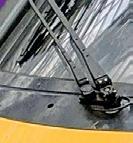








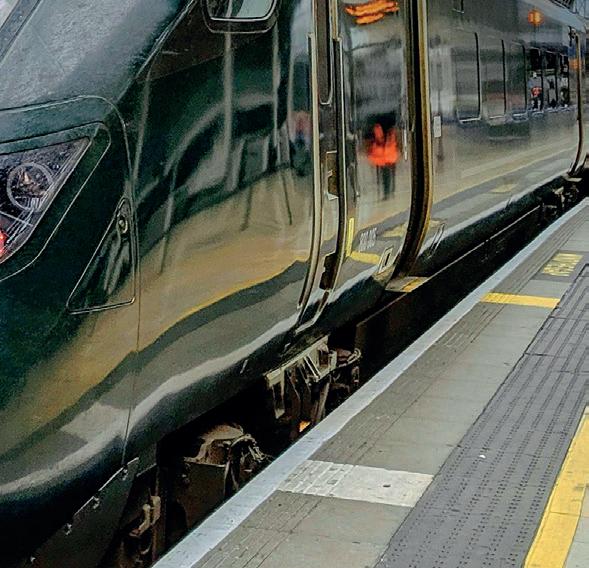





Future Proofing Rail Risk
Steve Medhurst Global Transportation Specialism Leader, and William Phillips, Underwriting Strategy Consultant
The rail industry is one of the most important networks underpinning how people, goods and services move efficiently across the country. Its reliability and reach make it an essential piece of infrastructure.
Built for longevity, much of the UK’s rail infrastructure has stood the test of time but climate change is introducing challenging new conditions railways need to withstand.
More frequent and severe weather events including heavier rainfall, flash flooding, and greater temperature variability, are testing the strength of rail infrastructure. Extreme heat can cause rail buckling and heavier downpours increase the risk of earth movement and landslip. These risks demand resilient, future-proofed insurance programmes.
As a result, the expectations of our rail partners and customers are evolving too. Rail operators are increasingly seeking partnership from insurers, expecting them to have technical understanding of their networks, foresight on emerging risks, and the ability to support long-term planning.
Using innovation to understand risk
Our approach at RSA is built around those principles: being embedded in the industry, understanding its operational context, and taking a genuinely curious, informed approach to risk. This includes using technology in innovative ways that bring insight and foresight to the table. Satellite monitoring, for example, is becoming an increasingly valuable tool for identifying subtle ground movements around railway infrastructure, changes that are often imperceptible day to day but can signal future problems. These movements can manifest gradually, as soil creep that encroaches on the track, or more suddenly, as catastrophic land sliding triggered by heavy rainfall and debris washout. In both cases, early detection is key.
Recognising this risk, we’ve been exploring a satellite-based monitoring solution with a third-party provider to support earlier intervention. The goal is to help clients detect these shifts well before they become disruptive – using live, adaptive pictures of exposure, tailored to each client’s footprint, and enabling better decisions about where to build, carry out preventative work, or take action.
‘Helping the rail industry face the future means being an informed, consistent partner in resilience. Rail is a critical national infrastructure, and the challenges it faces demand insight, innovation, and long-term commitment.’
Developing rail solutions
It also highlights why close relationships across the industry, from operators to technical research bodies, are so important. Connecting clients with centres of knowledge like specialist partners, universities, and other organisations focused on rail provides access to insight on how infrastructure responds to environmental pressures like changes in soil stability, or temperature.
At the same time, insurers have a role to play in staying close to this knowledge loop – understanding the physical context rail operates in, as well as the supplier landscape that can offer new materials, technologies, or design approaches to support mitigation strategies. These relationships are essential to helping insurers provide rail solutions, not just insurance ones.
Insight
needs collaboration
But insight alone isn’t enough. What turns data into action is collaboration. When risk information is shared, it needs to prompt meaningful dialogue where both insurer and client bring their knowledge and perspectives forward. The most effective outcomes come from that shared understanding, where decisions are shaped together in response to evolving risks.
Helping the rail industry face the future means being an informed, consistent partner in resilience. Rail is a critical national infrastructure, and the challenges it faces demand insight, innovation, and longterm commitment. That’s why insurance programmes must continue to evolve and need to be built not only on financial protection, but on shared knowledge, forward planning, and a deep understanding of what it takes to keep trains moving safely in a changing world.

William Phillips is Underwriting Strategy Consultant at RSA. With experience in geospatial intelligence, he is leading the development of innovative, data-driven strategies and solutions that support customers in managing risk and tackling business challenges. He plays a key role in identifying business opportunities and shaping RSA’s strategic direction through research and insight.
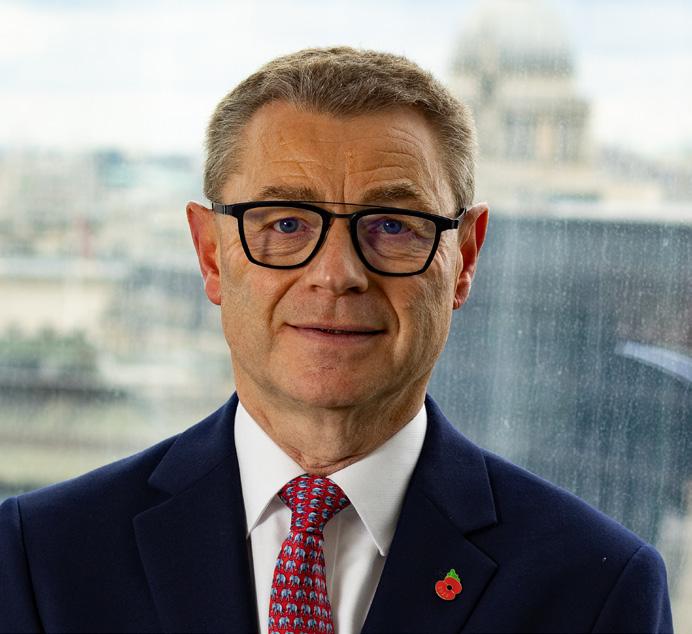
Steve Medhurst leads RSA Insurance’s Global Rail Practice and brings over 25 years of experience in rail insurance. He has been instrumental in shaping RSA’s specialist rail proposition, supporting operators, infrastructure providers, and supply chain partners with insight-driven risk strategies. Steve sets the strategic direction for the business’s global transportation portfolio and maintains a longstanding personal connection to the sector through active involvement in heritage railway operations.

Updating costsbenefit tools
RSSB. Driving cost reduction
The rail industry faces high maintenance and operational costs, but our outputs significantly reduce these expenses and drive efficiency, playing a vital role in delivering value for money.
In 2024-25, we delivered significant savings to the rail industry, such as low adhesion research which aims to reduce annual costs to the industry of £355m.
As rail reform progresses, we will continue to enhance the sharing of operational and engineering data, identifying efficiencies, and uncovering cross-sector opportunities.
Find out what we are doing to drive cost reduction across the rail industry. www.rssb.co.uk/costreduction

Infrastructure Needs to Put Nature First
Becky Pullinger, head of land use planning at The Wildlife Trusts on why infrastructure projects must integrate environmental considerations from the outset to avoid costly delays and protect our nature-depleted landscapes
Humans face an urgent choice. Continuing down our current path – where our demands on nature far exceed its capacity to supply – presents extreme risks and uncertainty for our economies.
These sobering words are not mine – they’re from the government’s 2021 Dasgupta review into the economics of biodiversity. So how can the major infrastructure projects which drive our economies work with nature, not against it, for all our benefits?
Nature provides valuable resources: wood for construction, water (and water purification), flood mitigation, air cleansing, fertile soils for crops and insects to pollinate those crops. A report by accountants PWC, ‘Managing Nature Risks: from understanding to action’, found that 55 per cent of global GDP is dependent on nature.
Get this wrong and a business exposes itself to risk, both to its operations and that of its supply chain, but also to financial return and reputation. The report noted that in five industries, including construction, direct operations are highly dependent on the services provided by nature.
In other words, nature is not just a ‘nice to have’ or a frustrating ‘blocker to growth’, it is an essential business asset, and its protection and recovery make economic sense.
There is much to learn from existing practice on how to ensure nature is better integrated into the planning, design and management of infrastructure. Key lessons from good and bad practice invariably point to the same important message – that of taking a nature first approach.
Nature first means that major infrastructure is strategically and spatially planned alongside nature’s protection and recovery; and where environmental considerations, informed by accurate ecological information and expert advice, are factored in from the outset.
This approach avoids harm to wildlife and natural spaces but also reduces consenting risk, delay and expense.
Through engagement with local stakeholders and ecological experts in its preapplication process, National Grid has been able to identify and address potential nature impacts for both its Bramford to Twinstead and Norwich to Tilbury schemes to reinforce its high voltage power network. Collectively, this early engagement has informed routes that will avoid loss to ancient woodlands and Local Wildlife Sites and involved local expertise in surveys and mitigation design.
Similarly, National Grid Ventures and sustainable design and engineering company Arup have engaged in early discussions with Suffolk Wildlife Trust (one of the landowners) on the proposed Lionlink Interconnector scheme. Discussions helped identify potential impacts from the different onshore route options, so the one with the least overall impact on their nature reserve could be selected. This route is likely to present fewer challenges, lowering costs and consenting risks associated with mitigation and compensation.
The benefits of early engagement applies to maintenance works as well. In 2016 early advice and engagement with Natural England ahead of scheduled maintenance to the A338 resulted in good outcomes for nature as well as a 45 per cent saving on the original budget. In this case, a bespoke mitigation approach enabled effective protection for rare reptiles plus the restoration of a heathland.
These examples show that ecological surveys make a positive difference when planned in from the start, both to landscapes and the species which live there. As a result, recent government claims that ‘bats and newts’ are blocking development, appear to be at odds with reality.
In fact, a recent study by The Wildlife Trusts has quashed the notion that ‘bats and newts’ are to blame for development delays. Great crested newts and bats were a factor in just three per cent of planning appeal decisions. In most circumstances their relevance was raised alongside a wide range of other concerns.
The infamous £100 million bat tunnel, created by HS2 Ltd to protect bats from the high-speed rail link, exists now because there was no strategic environmental assessment at the project’s outset.
How different and welcome, then, is the approach adopted by Network Rail, which has a published Biodiversity Action Plan for its rail corridors. With its extensive estate of 52,000 acres and its six million trees, these corridors support a rich mosaic of habitats for plants and animals, some of which are legally protected as sites of special scientific interest (SSSIs).
Network Rail has helped bring back the large blue butterfly from extinction in its Wales and Western region and created handy homes in tree chippings for red squirrels and birds in Scotland.
Nature is fragile and voiceless, especially, it seems, in the UK, which is now one of the most nature depleted countries in the world. And yet when the railway industry works in partnership with our planet, good things can follow.
Taking steps to mitigate against the impact of large building projects can lead to protected forests, cleaner water, fresher air and ecosystems buzzing with life. This may involve thinking differently, but is there any other choice?
Becky Pullinger is Head of Land Use Planning at The Wildlife Trusts.

STAUFF Line
Air horn systems, Wash wipe systems

Presented in kit form, tested and ready for immediate installation, reducing logistic, production and inventory costs.
The STAUFF Line process is adopted by global OEMs to successfully achieve cost savings in rolling stock manufacture.
Presented in
Inter-car hose assemblies Pantograph systems
Waste disposal, Full pneumatic pipework systems
Seating framework, Grab rails and luggage racks
Body to bogie pipework, Levelling valve systems
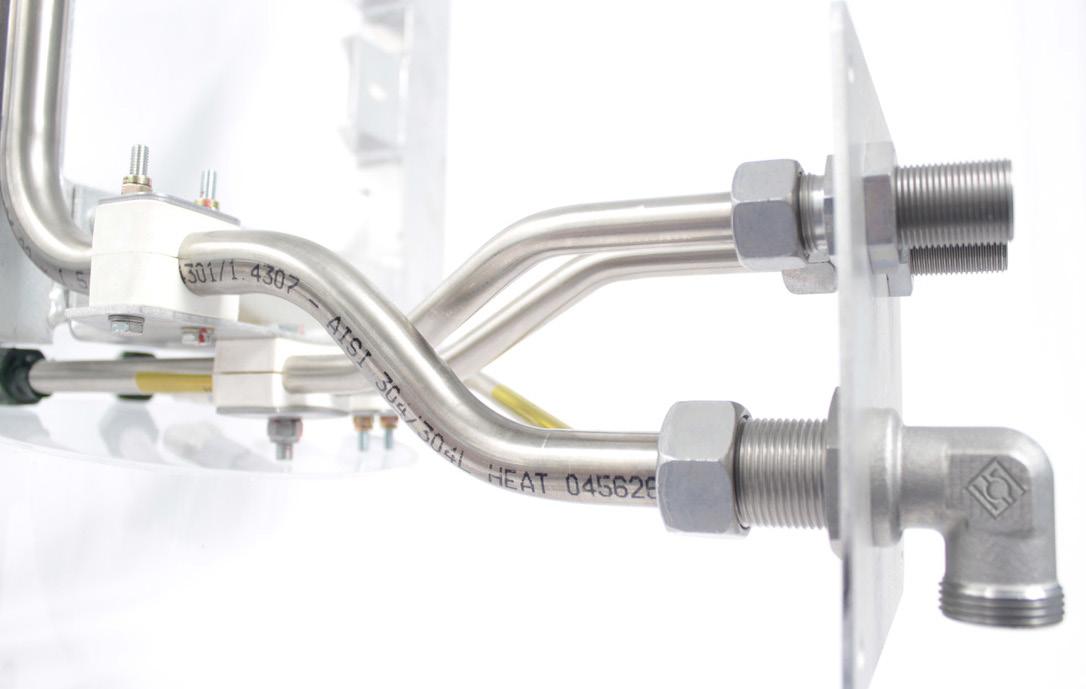
Line

Braking systems, Sanding HOSES Door operating systems, Door handles


Sustainable Business Travel
Andrew Cruttenden,
General Manager,
Trainline Partner Solutions on how rail's green credentials can attract high-margin business travelers as companies face increasing pressure to reduce their carbon footprint
With a £1.6 billion deficit facing UK rail, as an industry we need to be encouraging growth wherever we can find it. Much of the debate has focused on welcome increases in leisure travellers or lamenting the decline of Monday to Friday commuting. But we mustn’t forget an important third market: business travellers. While business travel isn’t yet close to being the ten per cent of rail trips it contributed pre-pandemic, it still presents an attractive opportunity to rebuild. And what’s more, these tend to be high-margin customers who would bring welcome revenue.
The good news for rail is the industry’s green credentials offer a USP that is much in demand. The emphasis on sustainable business practices means businesses globally are adapting their approach to meet increasingly rigorous sustainability mandates. As business travel is a significant contributor to many business’s emissions, particularly in the services sector, it is coming under increasing scrutiny. This makes a shift towards lower carbon travel options not just a trend but a necessary response to regulatory pressures and a growing corporate conscience.
Recent research highlights a significant shift among UK businesses towards more sustainable travel practices. According to a survey we commissioned at Trainline Partner Solutions earlier this year, nine out of ten business travel decision-makers for UK SMEs said their business travel, and the corresponding budgets, would be increasing in 2024. And amid this growth, there is a clear intention to mitigate its environmental impact. Over 83 per cent of organisations plan enhanced support for low-carbon travel options, with nearly half (48 per cent) specifically stating they want to increase rail travel.
The findings also reveal that sustainability targets are becoming a cornerstone of corporate travel policies.
Over half of the businesses we spoke to have already set specific goals for reducing emissions from business travel, and two-thirds of the remainder expected to establish such targets within the year. This proactive approach demonstrates the broad recognition that sustainable travel is integral to corporate responsibility, as well as regulatory compliance.
Regulatory tailwinds for sustainable travel
Across Europe, regulatory winds are encouraging the shift towards sustainable business travel, from legislation restricting domestic flights on key routes in France and Spain, to the introduction of Corporate Sustainability Reporting by the EU. This is pushing businesses and their travel managers to sharpen their focus on rail travel. Some corporations are now mandating rail travel over air on select routes as part of renewed company travel and expense policies.
A recent poll by the UK’s Institute of Travel Managers (ITM) found that 43 per cent of companies have a rail-first policy in place, particularly on direct rail routes from the UK to France, Belgium, and the Netherlands.
This context is good news for rail – but at the same time, the industry needs to lean in and ensure we make a compelling case for our product with these potential customers
An opportunity rail can’t afford to miss
Despite these positive trends, the feedback we hear from the business travel sector is they face too many unnecessary barriers to using rail and their needs aren’t understood. Our research into the UK small business market found well over half (63 per cent) of SMEs often miss out on rail savings when booking business travel, due to delays and complexities in processes.
As an industry, we need to do more to make rail an easy, attractive choice for these companies and their travelling workforce.
‘Over
83 per cent of organisations plan enhanced support for low-carbon travel options, with nearly half specifically stating they want to increase rail travel.’
That means embracing a consumer-centric and streamlined approach to booking rail travel. We need to ensure business travellers enjoy the same seamless booking experience they encounter when they buy as leisure consumers. And we need to ensure that popular features like multi-modal booking and fare splitting are available and easy to access.
This is a real moment of opportunity, as companies are still settling into their new post-pandemic ways of working and decisions around the mode of travel – and even whether to travel at all – are still in flux. If we can do more to persuade the UK’s small business sector to embrace rail, then we unlock a new customer base who can help plug the gap in industry revenue. And in turn, businesses will see the benefits of lowcarbon travel that also enables its workers to stay productive in transit.
This is green-led economic growth in action. It’s an opportunity that rail can’t afford to miss.
Andrew Cruttenden is General Manager of Trainline Partner Solutions.

NEWS IN BRIEF
FIRSTGROUP RANKED IN EUROPE’S 50 MOST SUSTAINABLE CORPORATIONS
FirstGroup plc, a leading private sector provider of public transport, has been awarded a place on the list of Europe’s 50 Most Sustainable Corporations, one of only seven UK companies to be included. This new ranking is produced by sustainable business media group Corporate Knights. The report ranks Europe’s largest publicly listed companies, drawn from the STOXX Europe 600 Index and the top 100 Europe-headquartered publicly traded companies.
GO-OP AIMS TO GO FURTHER AND FASTER WITH TRACK ACCESS CONTRACT SIGNED
Go-op has now signed its Track Access Contract with Network Rail – and it is raising its level of ambition, with an offer of bigger, faster, cleaner Class 769 rolling stock. Go–op is the first cooperative or mutual rail business to sign such a contract. This community led approach has been made possible by numerous small investments from its members, many of them rail users in Somerset and Wiltshire. Go-op now seeks key investment partners to reach the £2.5 million cost of launching the service.
VOLKERRAIL WINS NORTH WEST SIGNALLING CONTRACT
VolkerRail has secured a £19.9 million contract to replace ageing signalling infrastructure across North West England, continuing work from its previous Tranche 5 programme on the West Coast Mainline. The Tranche 6 contract will see VolkerRail replace up to 60 structures, including ten signalling gantries and 100 signals, from Carlisle to the Cumbrian coast and areas around Chester, Liverpool and north of Warrington. Work includes early design, piling investigations, telecoms and overhead line works, with full testing and commissioning. The project runs until July 2027, with first commissioning scheduled for January 2026. VolkerRail has completed over 90 contracts for Network Rail since 2019.
From Kettles to Carbon
Hannah McDonnell, Executive Director, Oxfordshire & Gloucestershire Community Rail Partnership (GoCRP),
discusses the power of understanding carbon impact and the role and responsibility of the rail sector in increasing this
‘Carbon storytelling is as important as carbon accounting.’
Across the UK, transport remains the highest emitting sector of greenhouse gases, contributing around 29 per cent of total emissions – and private car use is a significant component of that footprint. As the rail industry looks to position itself as a key player in achieving net zero goals, one of its greatest opportunities lies not just in infrastructure investment or operational efficiencies, but in something far more human: the power of understanding.
If we are to shift public behaviour and encourage greater uptake of low-carbon transport options like rail, we must also bridge a gap in public awareness. We must increase understanding that everyday travel choices have a meaningful environmental impact, and that choosing the train over driving a car can be a simple, effective way to reduce it.
The challenge of abstraction
Despite increasing concern about climate change, many people still struggle to comprehend what emissions data actually means. The language of carbon – tonnes of CO₂, grams per kilometre, kilogrammes per journey – often feels distant or confusing.
For the average person, what does it really mean to save 4.8kg of CO₂ by taking the train instead of the car?
Research consistently shows that while younger generations tend to express stronger climate values, many still lack the tools to interpret carbon data. A recent youth insight and impact report produced by GoCRP found that over half of respondents didn’t know what a carbon calculator was, and nearly two-thirds found emissions data hard to understand. However, this problem isn’t limited to a specific demographic. Similar findings have emerged from outreach work with adults in local communities and workplaces. The issue may not be a lack of concern, but instead, a lack of relatability.
Making carbon count
This is where more imaginative communication strategies can play a powerful role in encouraging modal shift. Translating carbon emissions into familiar activities, such as the number of times a kettle could be boiled, may seem whimsical at first glance, but these types of analogies can foster a genuine understanding.
GoCRP’s new platform developed in Oxfordshire and Gloucestershire is a great example of this. TrainTripper, a regional journey planning tool, introduces the idea of a ‘kettle comparator’, converting saved CO₂ from train travel into the number of kettle boils – a routine, universal household task. For example, a typical rail journey that replaces a car trip might equate to 700 kettle boils saved. For a region or a community, that figure becomes far more tangible than abstract emissions numbers.
This kind of contextualisation helps people move from passive awareness to active consideration. It connects climate action to everyday life in a way that data tables cannot. And when presented alongside options for local, rail-accessible destinations, it creates a compelling case for making the switch.
Enabling a change in behaviour
While improving carbon literacy is crucial, information alone rarely changes behaviour. Modal shift depends on a mix of factors, including convenience, cost, habit and social norms. To encourage people to choose rail, the industry must address barriers at multiple levels.
Accessibility and journey simplicity are important factors. If people can’t easily identify how to take a train to their destination, or aren’t aware that rail serves the area at all, they’ll likely default to taking the car. Clear, localised platforms that link stations with attractions and onward travel can really help remove friction from the decision-making process.
What’s more, the car is often framed as the more flexible mode of transport. To be a viable alternative , rail needs to offer not just sustainability, but enjoyment. Promoting hidden gems accessible by train such as walks, market towns and riverside cafés can change rail from a necessity to a choice and the TrainTripper platform bridges this gap.
People are also more likely to change their behaviour when they trust the source of information and feel the message is for ‘people like them’. Co-designed tools, localised content, and peer-led initiatives are all powerful examples of how to build that trust.
A case for cultural change
Encouraging people to use rail more isn’t just about reducing emissions, it’s about embedding rail as a desirable, and practical choice. To achieve that, the rail sector needs to become better at storytelling – and not just its own.
Too often, sustainability messaging in transport is presented from a topdown, statistical perspective. People don't necessarily connect with policies, pathways, or emissions factors. They connect with metaphors, personal relevance, and lived experience. So bringing climate-conscious travel into the mainstream requires positioning rail not just as greener, but as easier, smarter, and more meaningful. Tools like the kettle comparator may seem modest, but they reflect a much larger principle: carbon storytelling is as important as carbon accounting.
A golden opportunity for rail
With increasing public scrutiny on the environmental credentials of every sector, the rail industry has a unique opportunity to lead. As one of the lowest-emitting modes of motorised transport, rail should be the backbone of the UK’s net zero journey. Instead of expecting people to decode carbon data, we can meet them where they are. That might be at a community event, a youth workshop, a digital platform – or at the kitchen counter, waiting for the kettle to boil. This isn’t just about marketing. People need to see themselves in the solutions, and rail has the potential to become one of the most accessible and obvious ones.
Innovative communication strategies developed at regional level, especially through collaboration with Community Rail Partnerships, could offer blueprints for national or cross-network adoption. Combining journey planning with carbon comparators, real-time data, and local discovery elements could strengthen rail’s position not only as a mode of travel but as an agent of change.
Community Rail Partnerships play a vital role in this process by offering deep local insight and trusted relationships, helping to shape messages that truly resonate with communities. Importantly, this must be done inclusively, with tools that work for rural and urban communities alike, for digital natives and digital newcomers, and for people who care about the planet but are still unsure how to make a difference.
Because, in the end, a lower-carbon future won’t arrive solely through large-scale infrastructure projects or top-down targets. It will be built through millions of everyday decisions – the kind made when someone chooses a train over a car.
NEWS IN BRIEF
WOMEN IN RAIL LAUNCHES STRATEGY TO BOOST FEMALE REPRESENTATION
Women in Rail has unveiled a new business plan aimed at increasing female participation across the UK rail industry during its 200th anniversary year. The 2025-2027 strategy focuses on four pillars: attracting more women to rail careers, engaging stakeholders through events, supporting women through mentoring and training, and promoting female leadership. Chair Marie Daly said the plan offers: ‘The chance to embed profound and lasting change’ as the industry undergoes major structural reform. The organisation will work with regional groups to deliver localised impact while maintaining national consistency. Additional implementation details, including success measures and partnership opportunities, will be released in coming weeks.
‘A lower-carbon future won't arrive through infrastructure projects alone. It will be built through millions of everyday decisions –the kind made when someone chooses a train over a car.’
RAIL INDUSTRY BACKS REGULATOR'S REVENUE PROTECTION REVIEW
Hannah McDonnell holds an MSc in Responsible Tourism and specialises in sustainable development, social value, and transport strategies. She has pioneered innovative community engagement approaches and dynamic solutions supporting netzero targets through integrated transport systems and communityled modal shift initiatives.

The Rail Delivery Group has welcomed recommendations from the Office of Rail and Road to standardise revenue protection practices across train operators. The ORR's independent review calls for removing complexity and improving transparency in how operators tackle fare evasion, which costs the railway hundreds of millions annually. ‘We need to strike the right balance addressing genuine, honest mistakes made by customers and taking firm action against those who deliberately exploit the system’ said an RDG spokesperson. The industry will implement recommendations alongside plans to create simpler fares and ticketing systems, laying foundations for Great British Railways to build upon with customer-focused practices.
Innovation and Sustainability Take Centre Stage at Long Marston
Rail Live returned to Porterbrook's Long Marston Rail Innovation Centre on June 18-19, delivering the UK's largest outdoor rail exhibition with a renewed focus on sustainability and innovation
Over 350 exhibitors and 7,000 rail professionals attended the two-day event, which showcased cutting-edge technology, environmental initiatives, and industry collaboration across multiple zones and demonstration areas.
The exhibition featured significant participation from major industry players, with Network Rail presenting dedicated sustainability zones, RIA hosting international delegations, and technology providers demonstrating everything from hydrogen fuel cells to robotic inspection systems.
A journey through innovation
After parking and heading through the main entrance to the site, visitors were greeted by a classic steam engine that was brought to the site by heavy haulage specialist Allelys.
From there, visitors saw numerous exhibitors as they passed through Zone ABC, which culminated in a temporary access platform and scaffolding structure built by Alto Access Products. Alto had built the structure over a Class 323, which could be seen on the right, just before reaching the level crossing.
At the level crossing, Porterbrook had its HydroFLEX demonstrator on display, which sported a new livery to mark that year's Railway 200 celebrations. First-comefirst-served tours of the HydroFLEX train were also available during Rail Live, while all visitors could take part in an interactive activity to learn about hydrogen fuel cell technology.
Another Porterbrook attraction was the virtual driver's cab, to see what it would be like to drive on Long Marston's continuous 3.5 kilometre (two-mile) electrified test loop which was under construction.
Nearby, Rail Operations Group showcased one of its Class 93 tri-mode locomotives, the first of which was about
to undergo loaded trials on the West Coast Main Line.
After the level crossing came Zone E, where Pandrol and Goldschmidt both conducted hot-welding demonstrations. If visitors needed assistance, they could also find the help desk near the Pandrol stand, while a new indoor café was on the right, complementing the business lounge. With free WiFi and desks, it was the ideal spot for those who needed to do some work while on-site.
Moving into Zone F, Lingmag was present, while Siemens' Rail Charging Converter, recently installed at Long Marston, was also visible. QTS also had a climbing wall, on which visitors could have a go with the aid of a qualified instructor.
In Zone G visitors found VP, Rail Live's largest exhibitor. This was the halfway point of the journey through Rail Live, so helpfully there was a drinking water station next to VP's stand. Also in Zone G, visitors could find Laing O'Rourke's stone-cutting robot, which was displayed at Rail Live for the first time.
Further on was Zone J, where Rail Ability carried out on-track demonstrations to showcase its ballast undercutting road-rail vehicles. Racine Railroad was also nearby, providing demonstrations involving track panels.
Network Rail's On-Track Village contained its maintenance train and several road-rail vehicles, while over the sidings towards Zones M and W, Ultrabeam Hydrographics' Robotic Amphibious Vehicle was on display.
Sustainability takes centre stage
For the first time, Rail Live featured a dedicated Sustainability Zone, located in Zone M at stand M256. The exhibit demonstrated what an ideal green railway could look like while acknowledging the practical challenges facing the industry.
The display included track built entirely from recycled and repurposed materials, highlighting innovations such as composite sleepers made from recyclable materials including high-density polyethylene (HDPE) and fibre-reinforced foam urethane (FFU). The zone also showcased real-world examples of carbon footprint reduction initiatives, emerging solutions like green steel, and materials designed for longevity.
Throughout the two-day event, industry experts were available to discuss key sustainability topics including ecology, biodiversity, decarbonisation, circular economy principles, and greener railway strategies. Biodiversity Ecology Tours ran every hour from 10am to 3pm, with participants gathering at the Sustainability Stand for guided walks led by representatives from Network Rail and the Tree Council.
Dr Neil Strong, Biodiversity Strategy Manager at Network Rail, was among the specialists on hand to discuss the practical steps being taken toward a more sustainable railway future and the innovations that could help achieve environmental goals across the rail network.
British Steel, the headline sponsor representing sustainability, demonstrated products including Zinoco coating, which was designed for rails in high-corrosion areas such as coastal areas, tunnels and level crossings and could extend rail life by between three and ten times. Recyclable steel sleepers that British Steel said improved track stability and benefited from a lightweight, stackable design, were also on display, along with the company's highperformance rails (HP335/350).
Network Rail showcases operational excellence
Network Rail prepared two villages for the event: the On- and Off-track villages. The On-Track Village showcased its Mobile Maintenance Train and mobile wind turbine,
alongside other presentations from its track renewal alliance, rail freight and electric road fleet teams. It also contained the Getting Everyone Home Safe Every Day project and some of its electric road fleet.
Continuing the safety theme, the nearby Off-Track Village had a Drive Safe mobile classroom which was part of NR's national road risk reduction programme. It also housed teams including commercial and procurement, product acceptance and standards and control, as well as the electrical safety programme that showed how NR was minimising electrical risks to trackside workers and improving the efficiency of maintenance activities.
The off-track site also included engineering innovations such as bespoke air surveying equipment, as well as the team behind the pioneering Lift in a Box. Experts were available on the hour during exhibition hours talking on a variety of subjects including a greener railway strategy, practical lineside biodiversity and waste management.
Industry collaboration and innovation RIA was greeted with sunshine as the association returned to Rail Live as an official partner and exhibitor, with strong representation from RIA members and industry colleagues. Fourteen companies exhibited in RIA's Unlocking Innovation Showcase, including Arentis Limited, ABA
Surveying, Arcadis, CCL Universal Rail, Charcroft Electronics, D/Gauge, Ebeni, Emu Analytics, Incremental, Zebraware: Lineardraft, MoniRail, Mermec, and TBAT Innovation.
Members of the RIA team participated in several conference sessions throughout the event. Isabella Lawson, RIA Wales & Western Business Engagement Manager and Policy Advisor, chaired a panel discussion on devolved responsibilities, examining how Wales, Scotland and the English regions would deliver their rail strategies within the new centralised system.
Milda Manomaityte, RIA Chief Operating Officer, spoke on a panel exploring the future of open access operations, emphasising the need for systems that enable success regardless of operator.
RIA hosted a presentation on the Mongolian Ulaanbaatar metro project, exploring opportunities for UK rail suppliers and detailing how UK Export Finance was working with the city on the £2.45 billion infrastructure development. The RIA Innovation Lounge hosted a Mongolian delegation on day one, demonstrating the international reach of the event.
The association also filmed an episode of RIA Rail TV across the two days, documenting the various activities undertaken by RIA and team members throughout the exhibition.
Light rail sector seeks mainline innovations
UKTram's Lead Engineer, Phill Terry, attended the event to assess emerging developments that could benefit the light rail community. While the engineering and safety seminars primarily focused on mainline rail, Terry used the opportunity to connect with suppliers and evaluate technologies that could support light rail innovation.
‘There were a number of suppliers that were open to exploring applications in light rail’ he explained. ‘In particular, projects in Sheffield and Manchester were mentioned as areas of interest.’
While higher temperatures made the seminar theatres less accessible during the event, Terry observed a strong presence from technology providers showcasing solutions.
‘Welding demonstrations from Goldschmidt and Pandrol, for example, already have applications in light rail and could help speed up future installation works’ he noted.
The growing role of robotic inspection and drone technology was evident across multiple stands, underlining ongoing industry interest in automation and remote diagnostics.
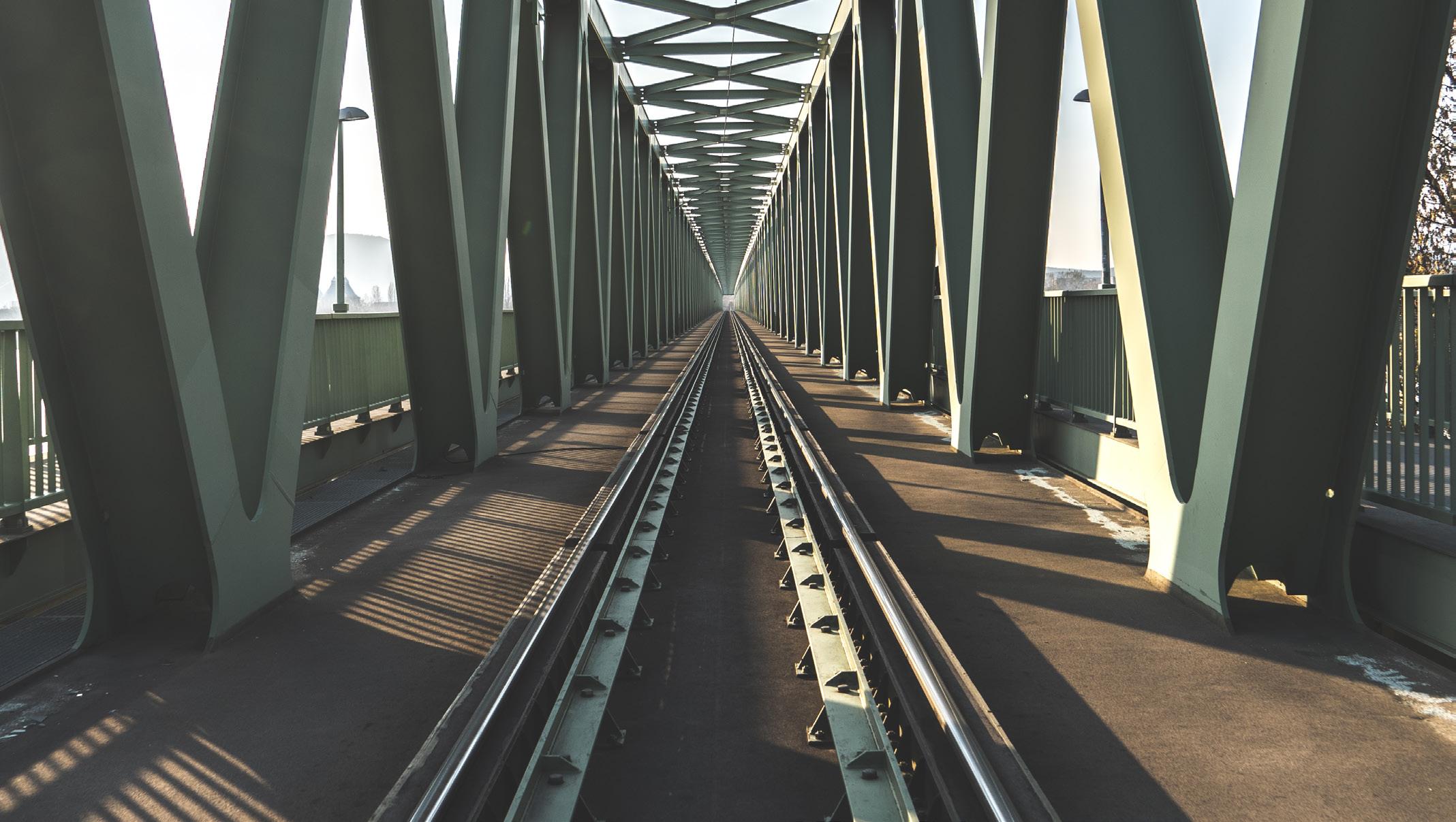
Site surveys and investigations
Feasibility and option reports
Outline and detailed design
Construction assurance

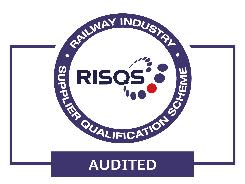
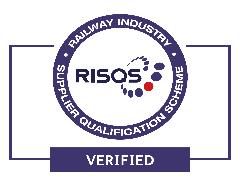
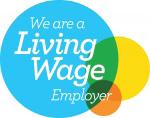


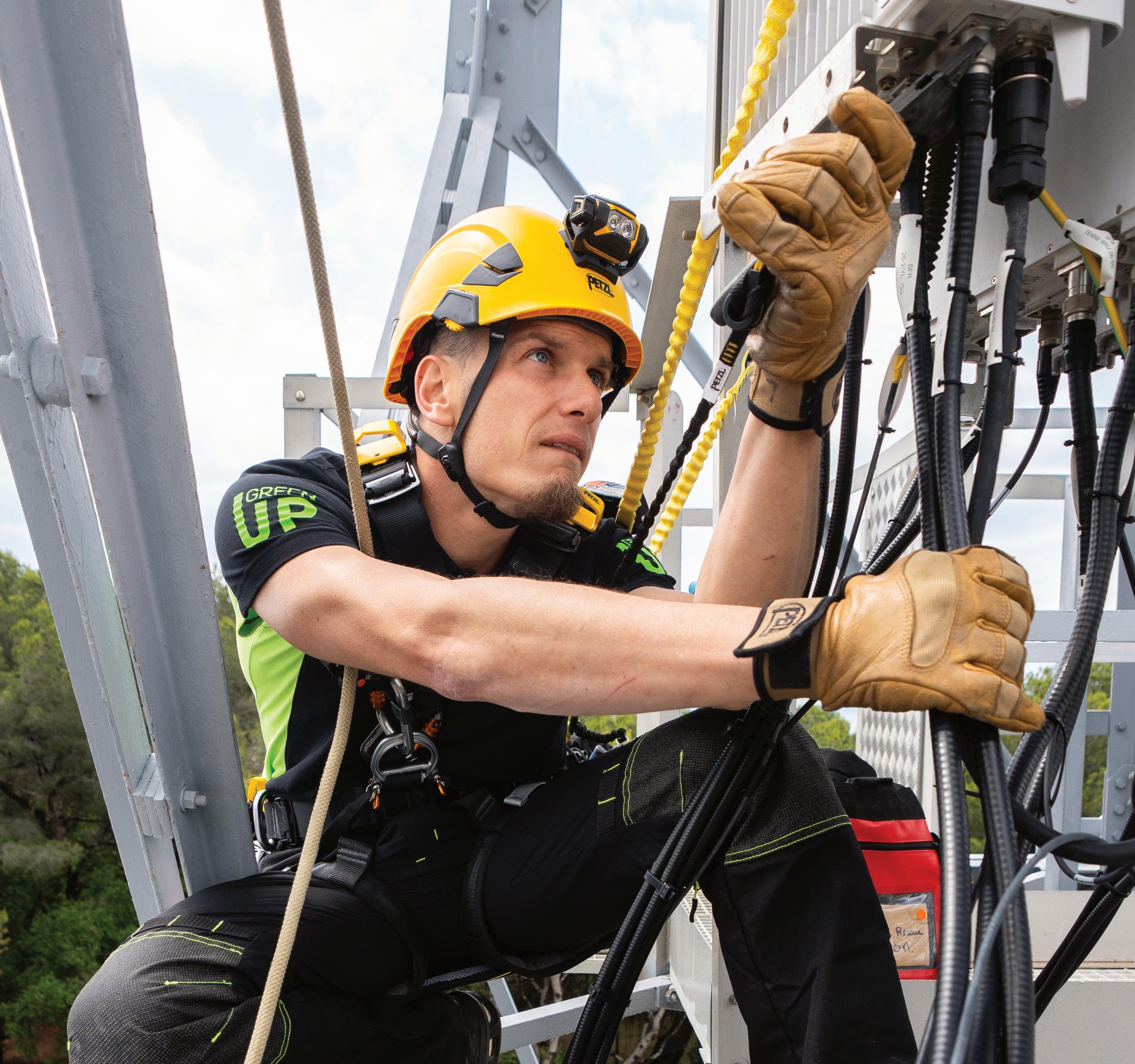
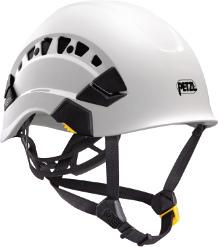

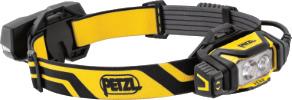

PETZL WORK AT HEIGHT SOLUTIONS
When a worker needs to carry out a task at height, it's important that they have suitable equipment.
Petzl's harness, helmet and headlamps cover the full spectrum of professional needs and are designed to work well together as full solutions with a range of accessories.
Petzl Work at Height Solutions
Petzl brings vertical expertise to rail professionals with comprehensive work-at-height safety solutions designed for trackside and elevated environments
For 50 years, Petzl expertise has supported professionals in vertical and dark environments, providing work at height solutions that include fall arrest and work at height harnesses, helmets, lanyards, fall arresters and headlamps, backed up with support through our technical tips and training to offer a complete package of class leading products for professionals.
When working in demanding environments, you need the right equipment, our products are designed and built with simplicity, efficiency and optimised comfort in mind to make your work easier and safer.
When safety is a priority, so is industrial excellence. We have a deep responsibility to the people who trust us with their lives, and we develop, test, and qualify all of our products above required standards to give you high quality products and peace of mind at work.
Petzl harnesses for fall arrest and work at height
The NEWTON and AVAO harnesses are built for safety, comfort, and efficiency, whether working at height or near trackside infrastructure. Both harnesses are certified to European safety standards, equipped with integrated equipment loops and slots for tool holders, and designed with features that support the needs of rail professionals.
‘When safety is a priority, so is industrial excellence. We have a deep responsibility to the people who trust us with their lives.’
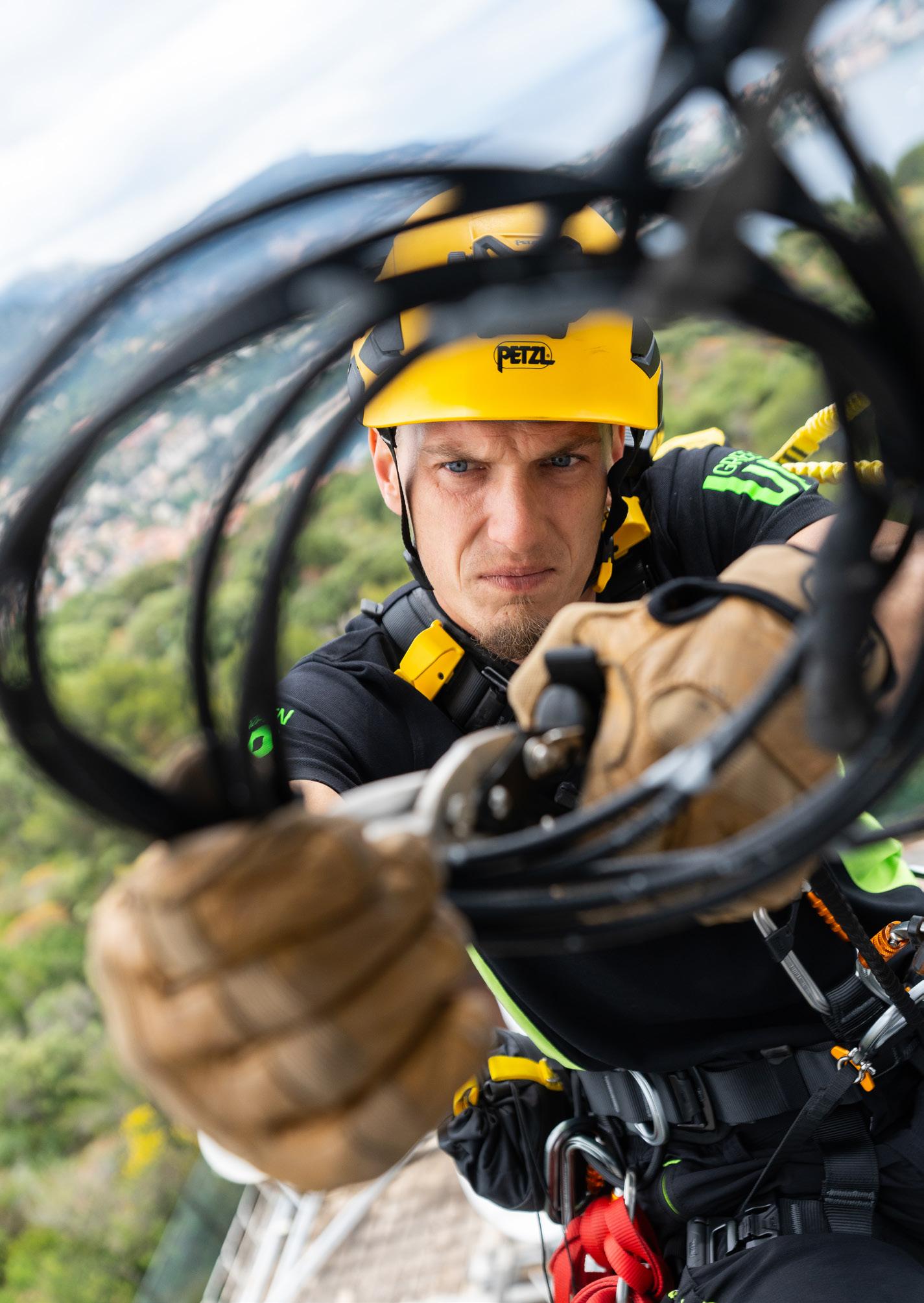
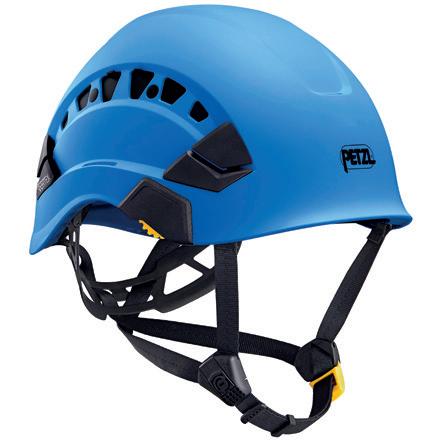

The NEWTON FAST is a lightweight fallarrest harness designed for easy donning and all-day comfort, featuring FAST LT buckles on the leg loops for quick and secure fitting, and a sternal and dorsal attachment point for fall protection.
The AVAO FAST offers enhanced support for more complex tasks, combining fall arrest, work positioning, and suspension capabilities, with wide, breathable padding and FAST LT PLUS buckles for effortless adjustment – even with gloves.
Petzl lanyards, energy absorbers and fall arrest
Whether for work positioning or to have an energy absorber that limits the force transmitted to the user in case of a fall, Petzl offers a range of solutions for different applications.
The ABSORBICA range feature a very compact energy absorber with lanyard options designed for progression on a vertical structure or a horizontal lifeline, and for passing intermediate anchors.
The ASAP range covers your mobile fall arrest needs, moving freely along the rope
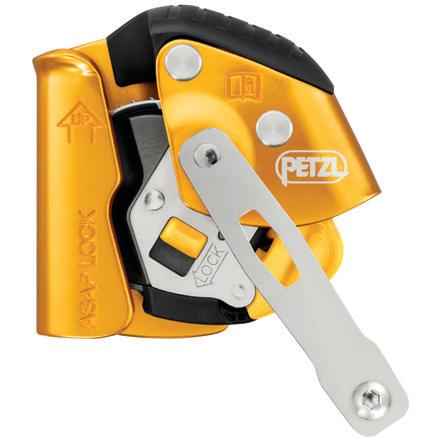
without any manual intervention and following the user. In the event of a shock load or sudden acceleration, the fall arrester locks on the rope and stops the user. The integrated locking function on ASAP LOCK allows the user to immobilise the device in order to reduce the potential fall distance.
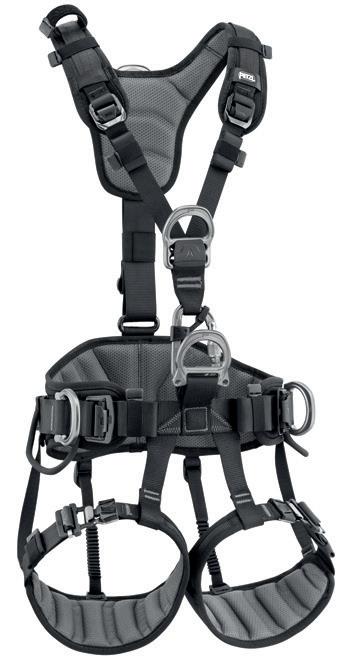
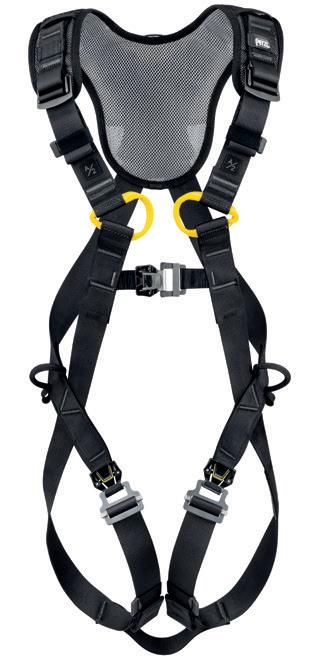
Our full range includes GRILLON work positioning and ropes, connectors and accessories as part of our solutions for work at height.
Petzl helmets for fall arrest and work at height
The STRATO and VERTEX helmets are designed to meet the rigorous demands of the rail industry, offering reliable head protection for professionals working at height, trackside, or in challenging outdoor conditions. The ultra-lightweight STRATO uses a dual foam liner for superior shock absorption and a FLIP&FIT system for a secure, comfortable fit. The VERTEX provides enhanced durability and stability with its six-point suspension and
CENTERFIT adjustment, ideal for highimpact environments. Both models are available in vented and unvented versions to suit varying site conditions and come in a range of colours for improved visibility and team identification and are compatible with a wide array of accessories.
To find out more about Petzl Work At Height Equipment, get in touch via the contact information below.

Tel: 015396 26400
Email: info@petzl.co.uk
Visit : https://www.petzl.com/GB/en
LinkedIn: https://www.linkedin.com/showcase/

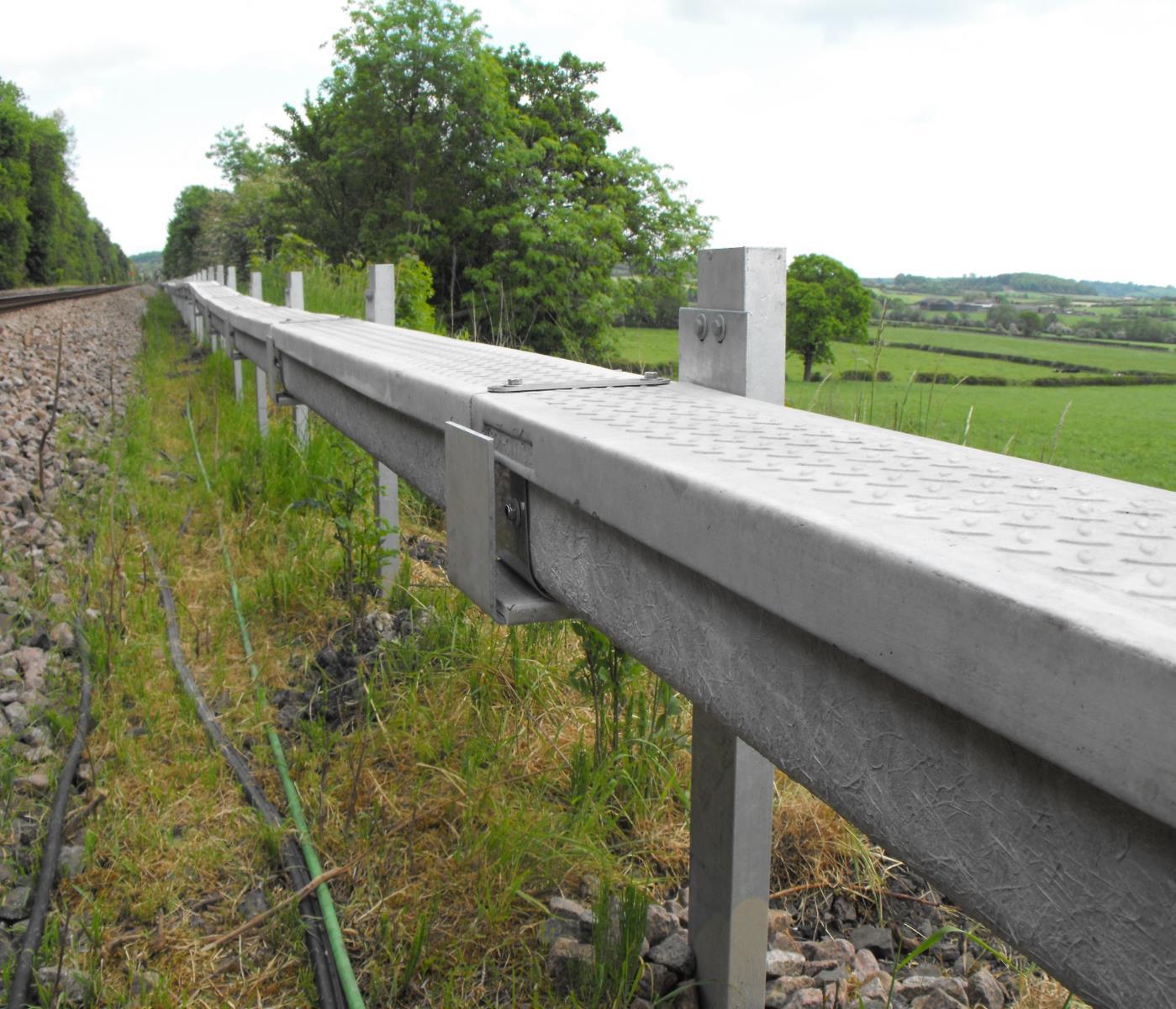
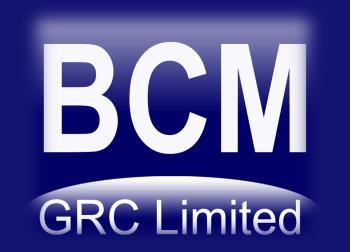



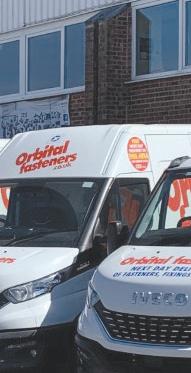
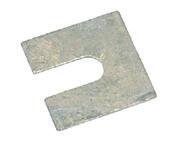

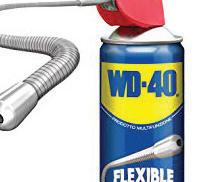

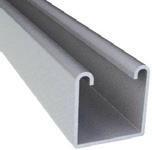


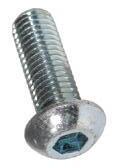


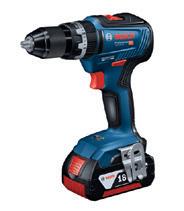



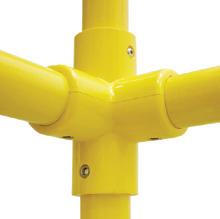

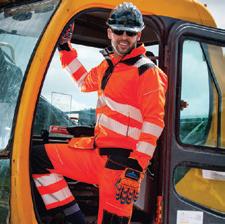
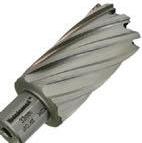





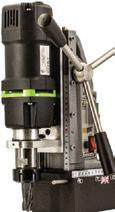




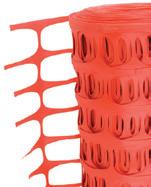






















Tristan Lloyd-Baker
CEO of RailSense Solutions
Tristan Lloyd-Baker is CEO and co-founder of RailSense Solutions, a UK-based company specialising in IoT infrastructure monitoring for the railway industry. Under his leadership over the past three years, RailSense has developed four Network Rail-approved products and expanded internationally, with installations across the UK, Europe, Middle East, and beyond.
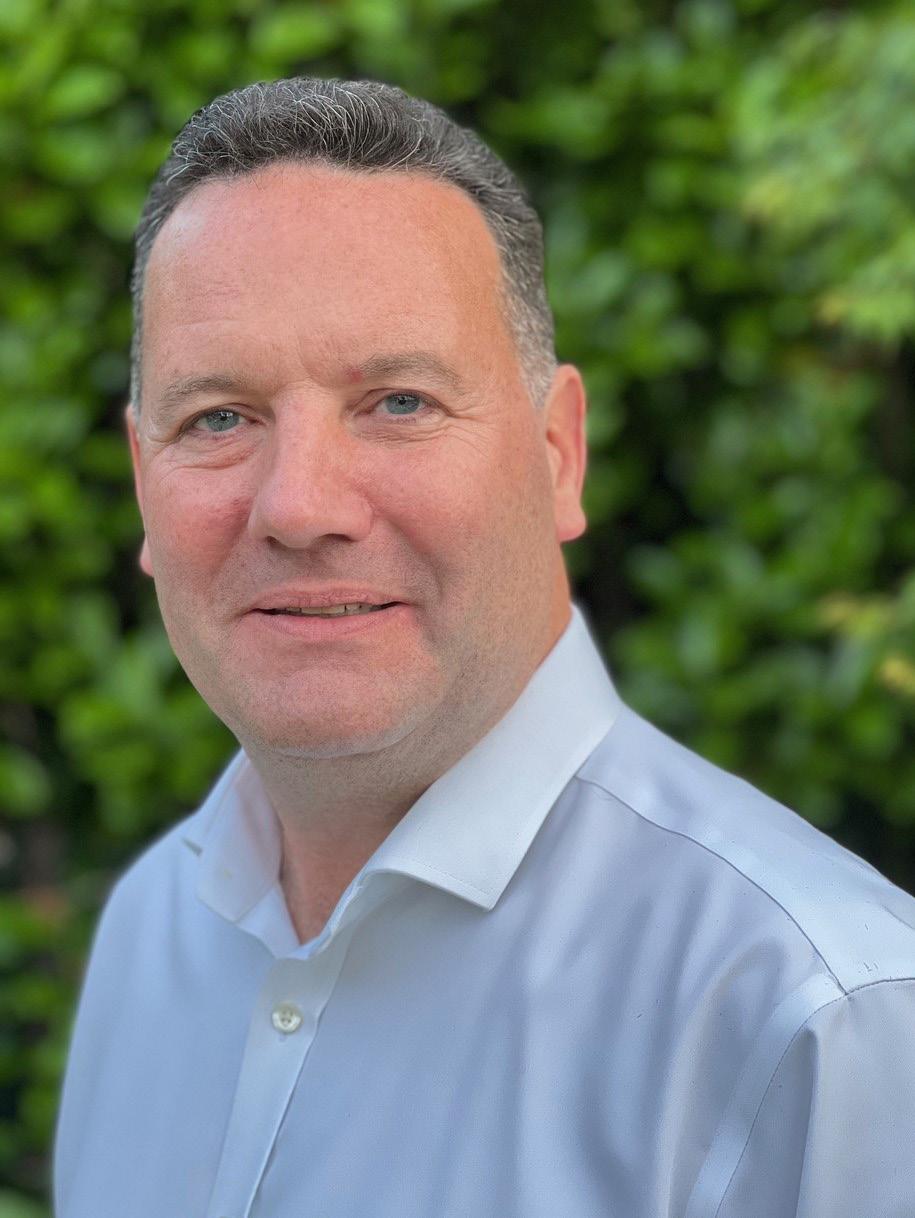
Sam Sherwood-Hale spoke to Tristan Lloyd-Baker about RailSense's journey to international success, their IoT sensors, and how remote monitoring technology is transforming railway maintenance from reactive to predictive approaches across global networks
SSH: What is the back story behind RailSense?
TLB: RailSense was set up three years ago around a product that had been developed by a team of our engineers outside of the rail sector. We developed a product called VoidSense, which is an IoT-linked remote sensing product for infrastructure attachment and monitoring.
We had some ideas about what it would be mostly used for, but the in-use applications have been far more extensive to where it started. In those three years we've developed another three products that have gained product approval at Network Rail and we've seen a good degree of commercial success both in the UK and overseas.
We develop infrastructure-attached IoT sensors for measuring slightly different things, all unified on a single platform. It is our own platform and all the data and insights coming out of the hardware provides deep insights and information.
One of the key things for us is the speed at which we can get things through the innovation process and the design phase –that's really been testament to the last three years of development and how we setup.
We're a team of nine R&D engineers based on the South Coast. We've got our own electromechanical assembly business in Letchworth and a contract electronics manufacturer up in Scotland. With UK
manufacturers, designers and developers, we're vertically integrated, allowing RailSense to get from prototyping to product as swiftly as possible.
We now have four products that we've got through the PA process, plus other products coming through the pipeline, including an interesting product called BuckleSense. This has been part-funded by Network Rail to develop a product for the identification of hot weather buckling.
SSH: What's that journey like from prototype to final products? I'm looking at VoidSense, which provides undertrack movement detection, TempSense for realtime temperature monitoring, TrackWater for silt and flooding alerts and BuckleSense for track buckling monitoring. What's that journey like from concept to solving the sensor problem all the way to the actual final product?
TLB: It depends which perspective you take. I've got a team of electrical engineers, software engineers and design engineers who are always looking for the Holy Grail solution. Obviously, there's a commercial element that needs to be delivered too, so it's about getting the product right and getting the right solution.
We work closely with customers and partners to ensure that we're delivering a relevant product rather than trying to
create a product looking for a solution. That solution-led element is critical to what we're doing – we're driven by the customer. We brainstorm and create lots of product pathways that often end in dead ends, but ultimately it's about having the energy, insights and experience around the table to turn those good ideas into working prototypes.
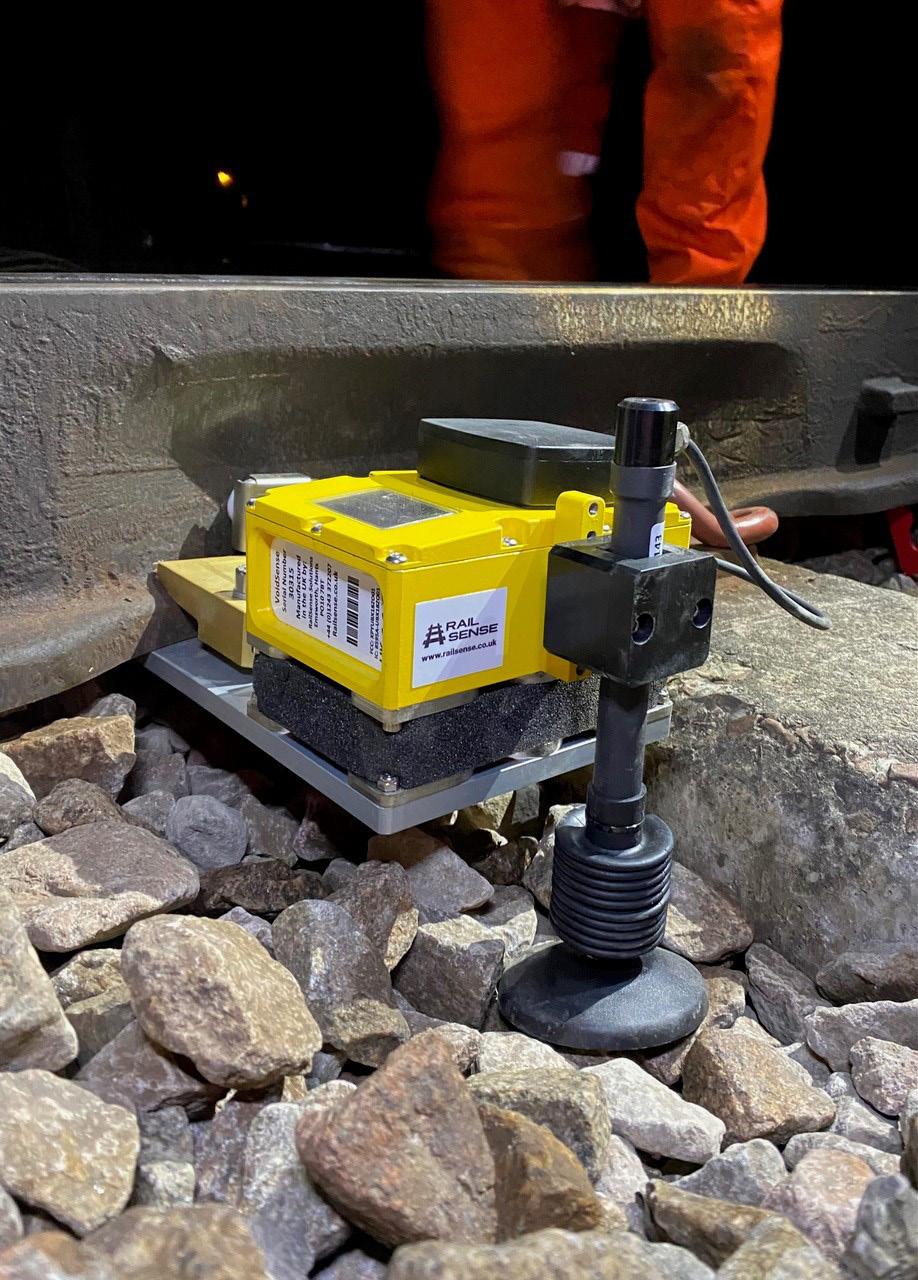
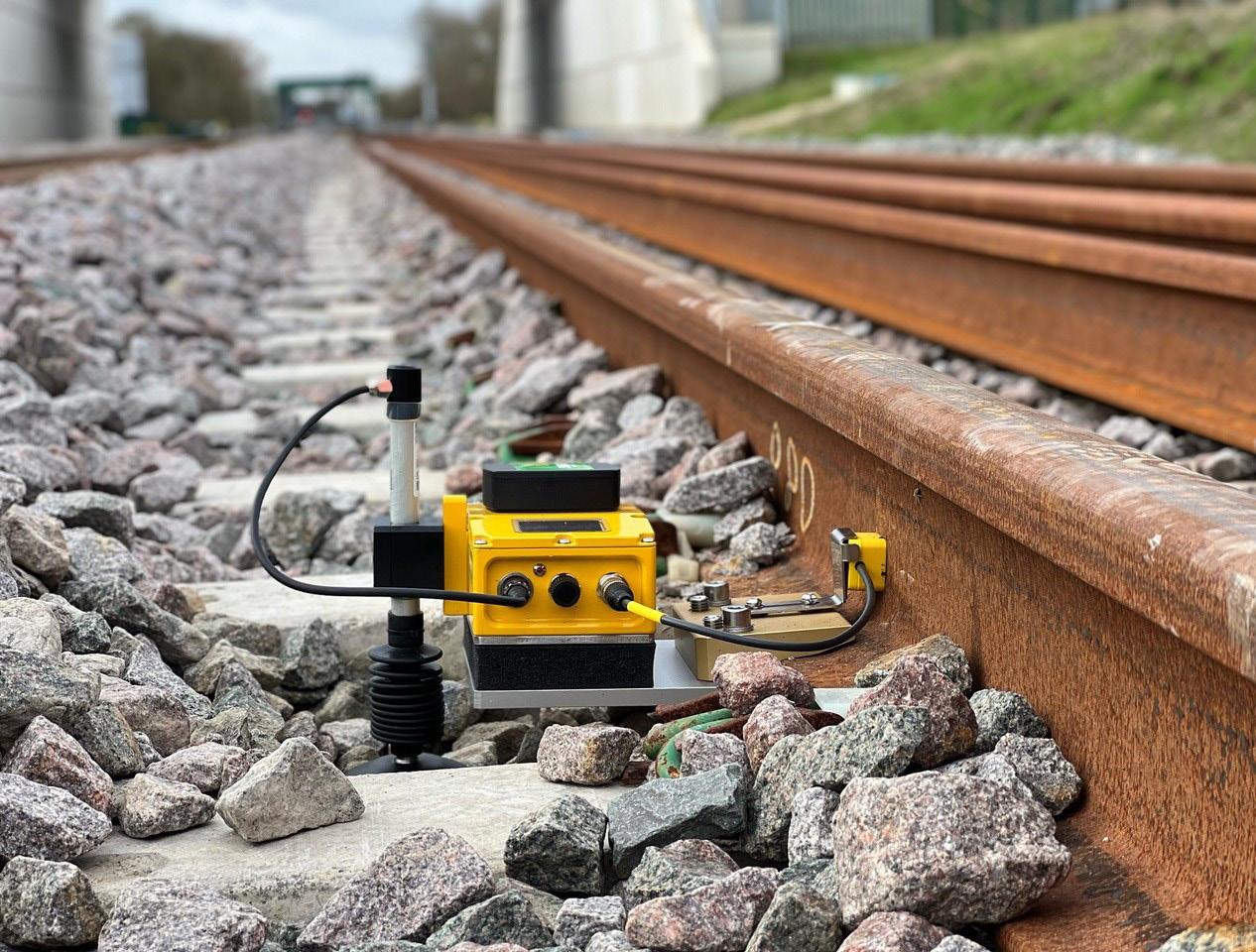
That's a big jump from idea to prototype, but it is possible to turn it around relatively quickly. We've got some very experienced people in the design office who have been doing this for many years, most often in consulting roles where they had to work really quickly. They're now developing for us on a continuous basis.
SSH: Speaking about that portfolio and expansion – which product do you think was the breakthrough that established RailSense in the market?
TLB: VoidSense was the principal product. As I mentioned earlier, it started life as a product designed for monitoring wet beds – effectively problem areas on the railways. Since then we've been heavily installed on the Stockholm metro looking for a different kind of problem with the electrified rail. We've had a very large installation on East West Rail for monitoring track settlements – that's brand-new track being installed and then monitored for settlement as load is put over the track.
We're also installed on high-profile items like crossings. We're installed on quite a lot of crossings across Network Rail and beyond, monitoring for what's called a 1054 standard – effectively a requirement to remove boots off ballast and have remote condition monitoring through remote sensors. We're also installed on other high-profile locations like the ‘Fault-Free Corridor’.
All of these locations are sites that three years ago we didn't know a huge amount about and didn't really think there would be utility for this particular product. But it seems that the railway community has taken our VoidSense product and is using it like a Swiss army knife to monitor all sorts of
locations and issues with their rail – light rail, heavy rail, metros. We've got them installed on Nottingham trams and DLR so it's a significant cross-section of railway in the UK and then further afield.
SSH: It's interesting you mentioned this multifaceted application of VoidSense. Is there anything that surprised you about how it's being used?
TLB: We see pictures coming back from installations. I had a picture of a VoidSense effectively attached in a very unusual way to the end of a rail in Ireland a few months ago. Ultimately, it's monitoring and measuring movement, and if a user wants to turn that movement into a different plane, that's great. All it's doing is demonstrating its utility and capability as a useful addition to the toolkit. It's fascinating to see lots of people doing different things with it, and all we can hope for is more invention in the railway community to continue using the product for as many useful purposes as possible.
SSH: That kind of feedback informs the next products you're developing, I assume?
TLB: Absolutely. It's critical to see where this is moving. Our VoidSense users now have the potential to monitor lateral movement. In addition to that sensing suite, we also have a temperature sensor, and following other customer requirements we've now added an +-400g XYZ accelerometer which gives us acceleration in different planes. It's that kind of progress – using effectively the same product, the same brain, the same communication hub, but putting more data into it. That data is the key piece
‘We're not afraid of hardware – we think we have a suite of best-in-class products that provide fantastic data into our platform.’
giving us deep insights. Once you overlay temperature and acceleration, you start to pull together a very rich picture. When you pull that together on an international basis, you can really start to understand what those insights might mean for predictive maintenance regimes and what information you can give back to asset owners.
SSH: You mentioned the data and this narrative you can draw together around different types of track and different areas. Where's that data stored and how can it be accessed and used? I'm particularly interested in how you're handling the challenge of data interoperability – given that railway operators often have legacy systems and different data standards, how do you ensure your IoT sensors can integrate seamlessly with existing infrastructure management systems?
TLB: It's a cloud-based database, completely anonymised. What we're trying to do is use that data storage and collection – and of course if a customer wants to see their data in their platform, we can provide that without any problem. But we're using today's data to provide solutions to future challenges. We're trying to unpick what the data gives us, what the platform information and visualisation means, and where the problems occur.
SSH: I read about 14,000 critical rail temperature sites across the UK and BuckleSense as the temperature monitor. What's the impact on costs and safety, and how does the boots-off-ballast approach improve worker safety?
TLB: Up until March this year, there was a Network Rail standard for managing track in hot weather with a requirement above a certain temperature to implement a watch person. That standard has now changed to being a watch system.
There are 14,000 CRT sites across the country with an average length of 300 metres per site. That's an awful lot of at-risk hot weather locations. It's obviously not practical to have watch people monitoring all of those sites during hot weather. As we know, hot weather is increasing, CRT sites are increasing, and track temperatures are also increasing. We're seeing that today –one of our sensors in Saudi hit 55° today, which is significantly above UK levels.
The product we've developed can provide assistance to Network Rail to monitor some of those sites and allow their track workers to focus their attention on locations where there are actual problems. Rather than having eyes on every single piece of track across the country – which is unworkable when you consider 14,000 sites of 300 metres each would need at least two watch people per site – putting technology in place of people in this particular case is very sensible.
SSH: UK rails are stressed at 27°, yet you've documented temperatures exceeding 60°. Is this a bigger issue than we're hearing about?
TLB: Hot weather is becoming more of an issue – that's well known and why we've been asked to develop this product. Network Rail's 30,000 kilometres of track expands by an extra three kilometres when temperatures hit 40+ degrees, so the expansion is quite significant. It's definitely a focal point for track planning and workforce planning to manage extreme temperatures.
In the UK a couple of years ago during the very warm summer, there were around 15 reported locations where buckling occurred. This is reported in Network Rail stats regarding weather issues, the delay minutes that occur because of them, and the costs attributed to them. It is a significant issue and only seems to be getting worse.
SSH: How do solutions like TempSense Enduro help with this?
TLB: It allows you to monitor track temperatures. The point of having a temperature sensor on the track is to give an indication of where risks might be occurring. If you put a temperature sensor on track at 27.8°, you're not worried because it's at its stress-free temperature. As soon as it gets beyond one of three thresholds, you can start alerting that either trains need to be slowed down or maintenance teams need to go out to the track. These are pre-warnings. Rather than slowing down every single train across the country just because
temperatures are warm, you can start identifying where trains need to be slowed down because of hot spots, and where you can keep trains running at line speed because hot spots aren't in those locations. There's significant benefit to planning and better managing your railway.
While you have those Enduro temperature sensors, BuckleSense provides additional monitoring so that when temperatures start surpassing high levels, you can know absolutely whether a buckle has occurred at those locations in real time. That's the critical piece – identifying where your real problems are. You have hot temperatures, but there are locations that in different months might get different sun exposure, irradiation levels, or shading. You can start pinpointing where your efforts should be focused.
SSH: You have monitors in Saudi Arabia and Stockholm, and you're active at trade shows like Middle East Rail and Innotrans. What's your strategy for international expansion, and how do different markets approach rail monitoring? I'm curious about the regulatory landscape – different countries presumably have varying safety standards and approval processes. How do you navigate this complexity, and are there particular markets where you see the greatest opportunity for growth?
TLB: IoT sensing is a global technology. The products we have can be attached to any rail anywhere. We have a network of international distributors and agents selling our equipment overseas, installing it in some locations and operating it in others.
A range of nations have taken the product on and found utility in it, so I see that only growing. Last week we were at Southeast Asia Rail in Bangkok. Prior to that, we were at the Rise of IoT conference in Germany, on a trade mission in Sweden, and in Indianapolis. That's just May, with Rail Live coming in June.
We're still working to wake up the world to understand the benefits of remote sensing. It's relatively new in many locations, but it's understood. Mobile phones have made the world connected,
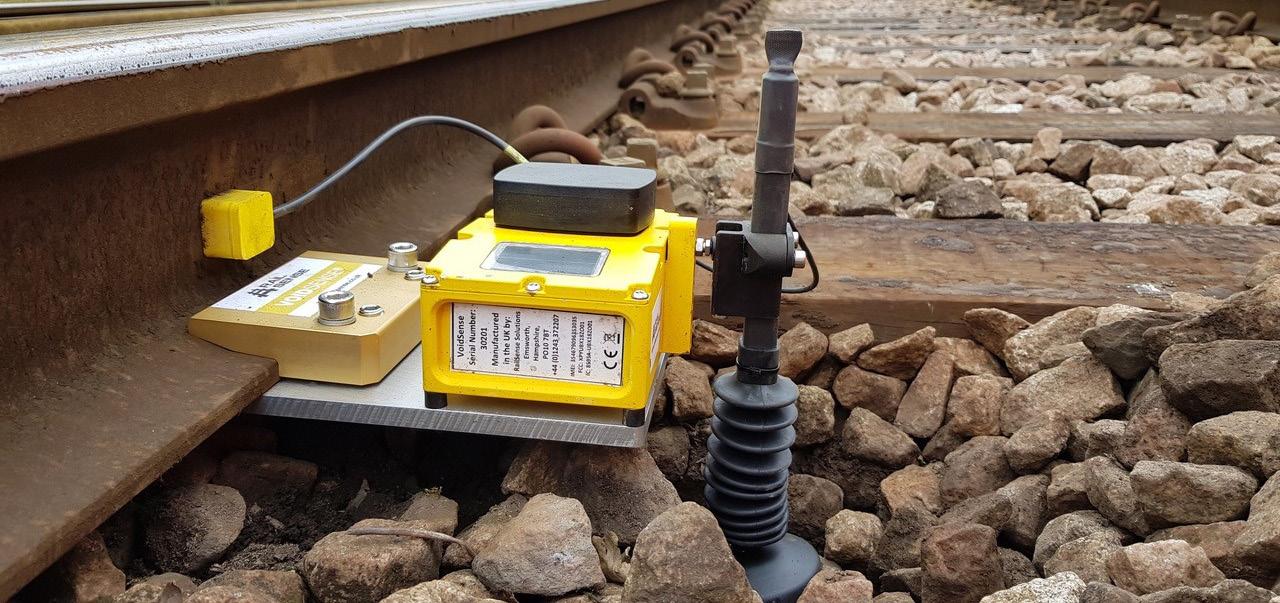
‘Rather than slowing down every single train across the country just because temperatures are warm, you can start identifying where trains need to be slowed down because of hot spots, and where you can keep trains running at line speed because hot spots aren't in those locations.’
and everything on our platform can be viewed and visualised on a mobile phone. That means everyone has access to their piece of track and their sensors, which is a fantastic benefit.
SSH: What are those conversations like when you're explaining the benefits of remote monitoring?
TLB: Ultimately, it's about describing and explaining the outcome, the need, the use case. More often than not, it's actually the potential customer explaining to us the problems they have and how monitoring with these products will provide the solution they're looking for. That's very much a pull –they're pulling us along with their problems rather than us having to push the products. It's a great feeling to be in a place where you have a product that's so useful and has so much utility for the customer.
SSH: Are there ideas that come to you through brainstorming? For example, with Saudi Arabia – is there anything they would specifically need that you could develop?
TLB: They have a problem with sand at the track and rail head, so our BuckleSense product can monitor for the occurrence of sand build-up at the rail head. Interestingly, we've just bought a business called Bance – they've been in the railway for 102 years with a range of legacy products. Looking at their legacy products and implementing and enhancing some of them using the RailSense technology is going to be a great step towards the next set of innovations, bringing even more products onto our roadmap.
It doesn't take much looking around to find the next problem. Then you have to put the commercial hat on – is it a global
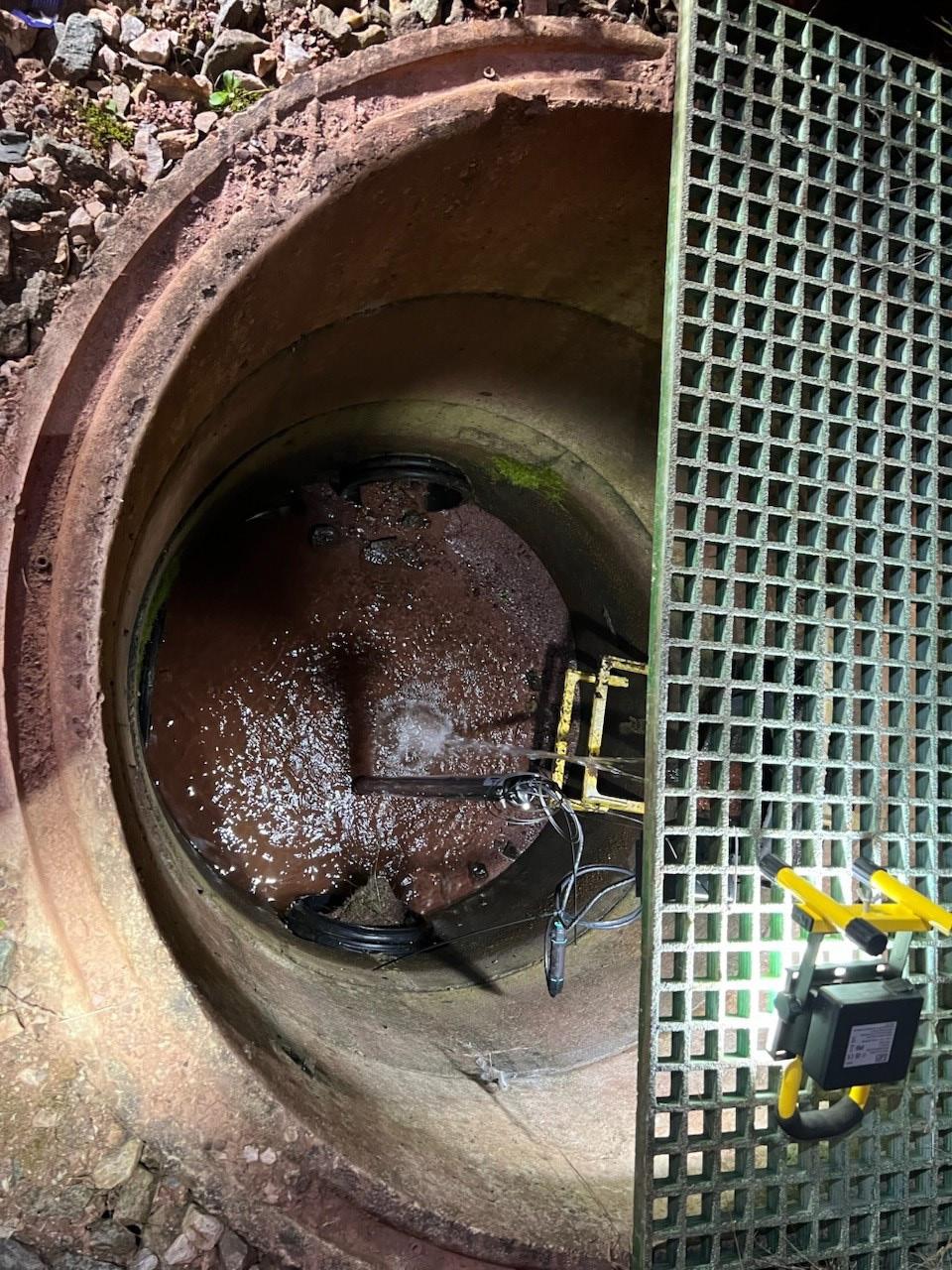
problem? Is it a problem we can afford to spend money developing a product for? There has to be enough commercial benefit because we can't create a product for one person or one solution. There needs to be broad demand to utilise the products.
SSH: Thinking about flooding – tropical countries experience intense rain for short periods. Is that something TrackWater could handle, or would you need to develop a different product?
TLB: TrackWater is effectively a hub with multiple sensors that attach wirelessly to it. Among those sensors are a flood sensor, silt sensor, and water level sensor. There was significant interest in Bangkok last week in the TrackWater product due to their monsoon situation.
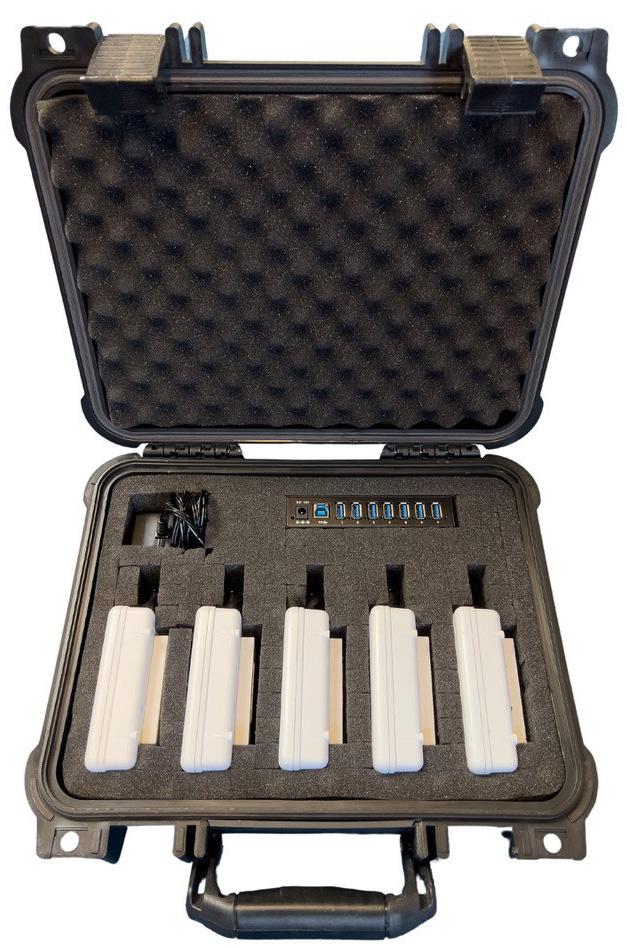
The tolerances regarding water level and proximity to the rail head are very tight in UK Network Rail standards. It's intriguing to see how Network Rail standards are used around the world, or are certainly the backbone of many standards worldwide. Products that allow us to meet those standards or warn against those standards are significantly beneficial.
SSH: Can you share examples of how your solutions have prevented incidents or improved operations?
TLB: Our TrackWater product is installed in Carmont. Following the horrific accident in 2020, the drainage down that whole piece of track has been renewed. TrackWater has been installed in catch pits all the way down the embankment. Scotland has been one of the biggest proponents – with the Scottish route being one of the biggest installers of our TrackWater product and we have a great relationship with them.
VoisSense has been used post-minor works to remove or eliminate the need for a follow-up Tamp. For every work site of 50 metres or more, follow-up tamping is required after a period of time. There's been a move in the rules whereby if there's monitoring and sensing that allows you to monitor how much settlement occurs after works, and no settlement occurs, then you don't need to undertake that follow-up tamping. There's significant money that can be saved on each piece of minor works postcompletion.
For temperature monitoring, when significant line speeds are affected, trains can be slowed down based on knowledge of what temperatures are doing on the track. That's definitely saving delay minutes and preventing derailments.
On East West Rail, there were 150 units installed down a six-kilometre piece of track between Winslow and Bletchley, monitoring for stabilisation. Every time a train passes over one of our VoidSense devices, the device resets to zero, allowing you to monitor any settlement or creep over time. When you're trying to bed down new track, you can work out your settlement rate. There should be a curve to your settlement, and if you can monitor that over a significant piece of line, you're saving significant amounts of money because you can work out when settlement has occurred and explain to contractors and end clients that the track is settled rather than still settling. It allows speeding up of post-works handover and increasing line-speed faster.
SSH: You received funding for a satellite rail monitoring system. How did you get that funding and what specific abilities does satellite integration bring that ground-based sensors cannot?
TLB: We've been fortunate to succeed in obtaining assistance from the European Space Agency, Network Rail and Innovate
‘For critical assets, we don't need to replace everything. Having monitoring on those critical assets is key –you replace them at the point you absolutely need to, but the more understanding of asset performance even towards the end of their useful life that we can provide, the more value and economy you'll get out of those assets.’
UK for various projects bringing innovation into rail. The European Space Agency funding was specifically around identifying the occurrence of buckling and incorporating satellite communications into our products. This has allowed us to develop products for locations where communications connections can't happen. We have quite a lot of opportunities in Canada, the US and Australia where you don't have the kind of cellular connection we have in most of the UK.
The project was a feasibility study that reached the end of its study phase. We're now working out whether we can continue and move on to the next step of that study.
SSH: How do you see AI and machine learning enhancing predictive maintenance capabilities across this sensor ecosystem? Given the railway industry's traditional reliance on scheduled maintenance, what kind of ROI are customers seeing when they shift to predictive maintenance models using your sensors? Are you able to quantify the cost savings in terms of reduced downtime, optimised maintenance scheduling, or extended asset life?
TLB: We're using AI and ML extensively to bring our data together and pull out really strong insights. AI is a massively useful tool, but the key for us is our platform and making it as usable and useful as possible to the end user.
Most technology companies are more interested in software and try to steer clear of hardware. We're not afraid of hardware – we think we have a suite of best-in-class products that provide fantastic data into our
platform. Coupled with advances in ML, this gives us a really strong future and the ability to give customers and end users fantastic insights and a way to manage infrastructure that's never been done before.
We can bring significant value to that infrastructure, make it last longer, put less effort into maintenance, and get the guys on the track doing the high-value work. We use technology to their benefit, allowing them to do all the good work they're already doing but in a targeted and focussed way, while we look after the places they can't get to, keeping them safer.
SSH: Looking ahead, how do you envision the transformation of railway maintenance from reactive to predictive approaches? In terms of RailSense's own growth trajectory, what does your product roadmap look like? Are there particular areas of railway infrastructure monitoring that remain underserved, and how do you prioritise which problems to solve next given the breadth of potential applications?
TLB: It's been apparent in this CP period that more has to be done with less. For critical assets, we don't need to replace everything. Having monitoring on those critical assets is key – you replace them at
the point you absolutely need to, but the more understanding of asset performance even towards the end of their useful life that we can provide, the more value and economy you'll get out of those assets.
Over the coming five to ten years, the insights and information we can pull out comes back to AI and ML, effectively overlaying the global database of information we're growing. Being able to effectively harness that and bring really strong, deep insights that tell you what the health of your assets are and where you need to focus your efforts and budget.
SSH: The railway industry is very conservative and often siloed. What's been the biggest challenge in explaining this innovation?
TLB: Finding champions for your products is critical. Those champions are normally not just champions of products, they're champions of progress. We've been very fortunate to have a number of champions of progress on our side, looking at our products and willing to use them. I don't think any of them have been disappointed – we have a lot of repeat business and repeat customers.
It's about the ability to be as universal and adaptable as possible while providing visualisation, deep insights and a platform
that's useful not just in control centres, but also on the track with maintenance engineers and section managers. The whole range of users of data – that's the key for us.
SSH: If you could implement one RailSense solution across every railway network globally tomorrow, what would it be and why?
TLB: The take-up of our VoidSense has been significant. But if we could have that product across the globe, the insights we would get would be phenomenal. They would be a huge benefit to all railroad operators and infrastructure managers.
It's like when Google developed Google Maps by taking pictures of streets with cameras on top of their cars, everyone thought they were mad for the first few years. Now you look at Google Earth, Google Maps and Street View and wonder how we lived without all this. The advances have been incredible, and I think the insights we're garnering provide that kind of Street View opportunity for the railway. It's giving insight and data that isn't there currently, creating a very rich landscape for operators. Our plan is to enable rail operators to leverage technology to drive down costs through sustaining the asset – without compromising line safety.
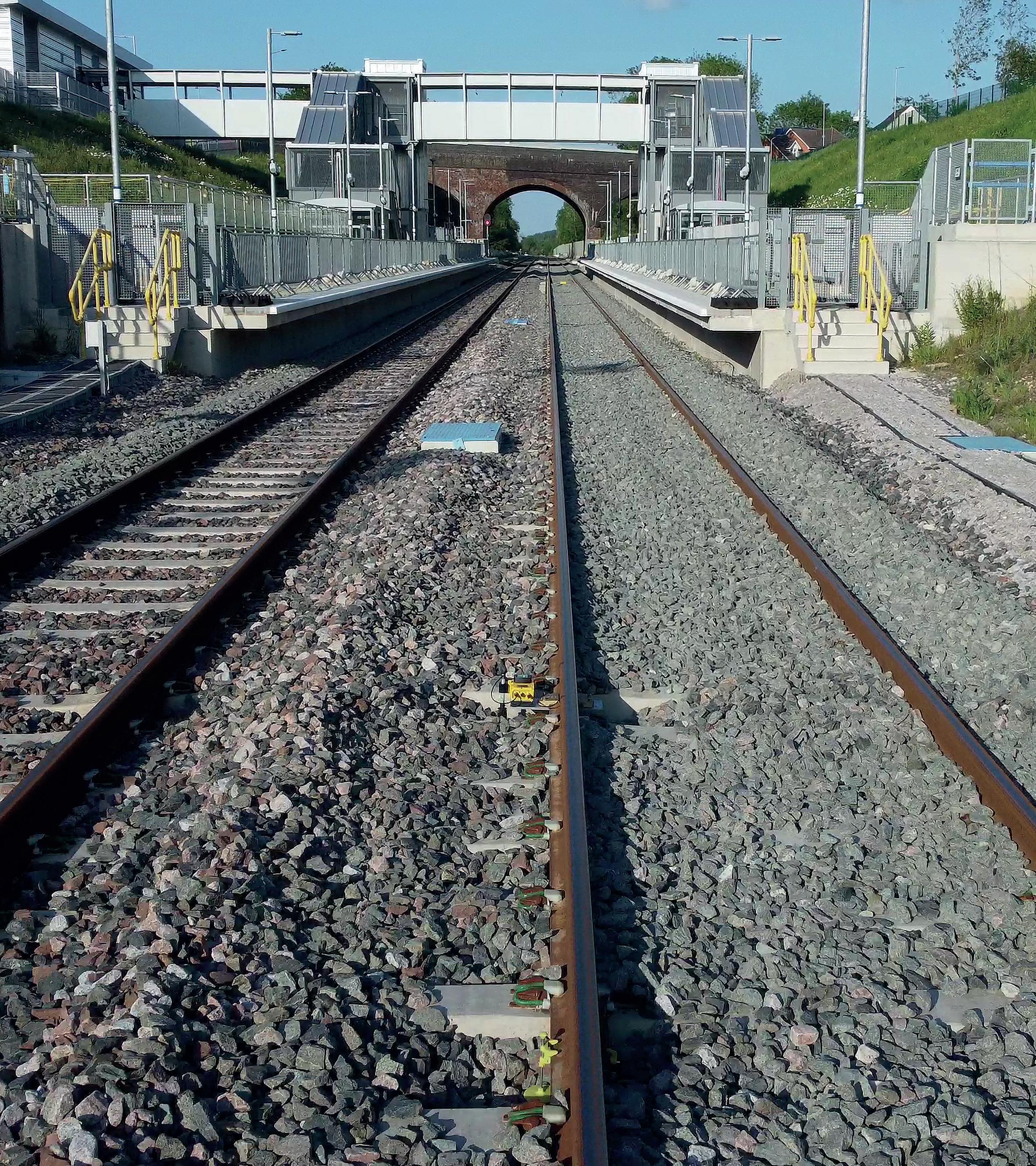

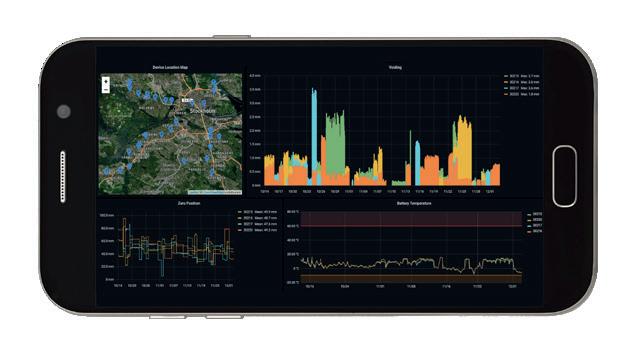
Sizing up the Opportunity
Specialist training provider NIS Group is delivering a tailored ‘bootcamp’ that is giving learners the skills they need to gain employment at Sizewell C
Nestled near a small fishing village on the picturesque Suffolk coastline, the construction of Sizewell C represents a milestone moment for nuclear power in the UK. At £35 billion, this is some investment and, once complete, is expected to produce seven per cent of domestic electricity and is forecast to create almost 8000 jobs locally during the twelveyear construction project.
Key to the success of this development is a huge upgrade in rail infrastructure to enable transport of freight and materials associated with the plant to be made with minimum impact on communities and passenger services. New stations will also be created to support workers travelling in and out.
This represents a major employment opportunity for local people, yet many locally do not have the existing skills required to work safely on the UK’s rail infrastructure.
‘That’s where we come into the equation’ explained Alex Smith, Strategic Contracts Manager at NIS Group.
‘Working in partnership with East Coast College, we have developed a three-month skills bootcamp that will take individuals from a standing start to having the certifications and knowledge required to work safely in rail.’
He continued: ‘We’ve taken a converted school building in Norfolk and transformed it into a rail training hub! The first stage is site-readiness skills, which is jointly delivered by specialist trainers at college and includes team-building activities and personal tickets such as CSCS cards, First Aid, Working at Heights, Confined Spaces and Asbestos Awareness. This is just the start though.’
Using extensive experience in rail, NIS Group has created a comprehensive Rail NVQ that covers core industry competencies, ranging from manual handling, abrasive wheels and Cobra TT/Robel to Ironman, PTS (Personal Track Safety) and OLEC (Overhead Line Electrification Construction).
Importantly, every learner is guaranteed a job at the end of the programme thanks to the strength of existing relationships with Infrastructure Support Solutions (ISS Labour) and Civil Rail Solutions (CRS), two
organisations who are supplying personnel to Balfour Beatty.
The principal contractor’s own project staff have shown equally strong commitment to the bootcamp, ensuring learners’ first experiences of the rail industry are positive.
Rachel Bunn, Director of Commercial and Community Projects at East Coast College, picked up the story: ‘The Skills Bootcamp has proven to be an exceptional opportunity for adults seeking careers in the rail industry. Through a dynamic partnership with NIS Group and two employment specialists, participants have received comprehensive training that has directly linked them to jobs.
‘Notably, 100 per cent of learners have secured positions in the exciting infrastructure project at Sizewell C, as well as other regional projects.’
The Skills Bootcamp also involved one of the biggest logistical challenges in NIS Group’s history.
There was a desire to ensure that learners should carry out training in an environment that replicated what life is like in the railway sector. With this in mind, the training specialist made the decision to rehome 60 metres of specialist rail track – in two parts – from one of its South Wales depots to its new location on the Suffolk east coast.
NIS Group’s Andy Holtom and Joe Watton masterminded the complicated project over a five-week period that involved multiple trips backwards and forwards and a final 302-mile one way journey that saw it installed.
The first seven learners certainly benefitted from having access to this specialist track under the guidance of trainers Duncan Corfield and Kevin Hocking, with all of them successfully passing their NVQ Level 2 course and gaining employment.
The next cohort is currently being recruited and should start shortly.
Curt Brown of ISS added his support: ‘All of the workers we’ve recruited from the NIS Group and East Coast College course have surpassed expectations with their attitude, skills and work ethic. It continues to be a great partnership that is delivering for critical rail projects associated with Sizewell C.’
CRS’ Charlie McKenzie concluded: ‘Working in partnership with ISS and NIS
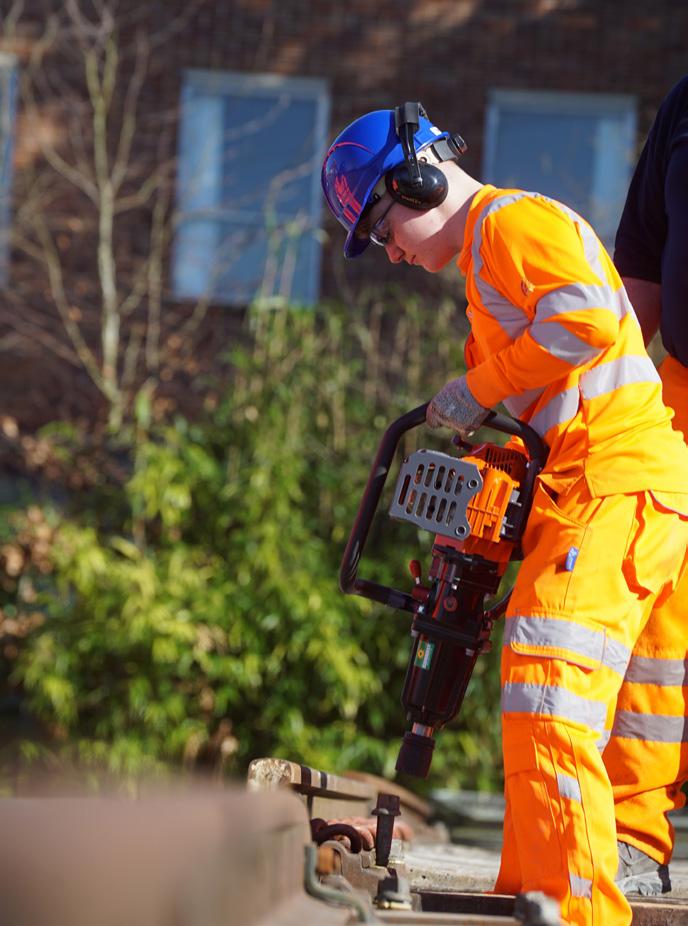
Group, we have successfully supported learners through a dedicated Skills Bootcamp, equipping them with the essential skills and qualifications needed to work safely and effectively in the rail sector. This collaborative commitment has opened the door to new career opportunities, with all delegates now progressing into employment on the Sizewell C project.’
Learner views
Judita, 21, lives in Great Yarmouth. She had been working as a part-time electrician’s mate but wanted a more secure job.
‘The Skills Bootcamp was great and has given me lots of qualifications I can now use throughout my career. At first it was a bit scary – the tools we use on this course are a bit different to the ones I’m used to! But it got me out of my comfort zone. I’m excited to be part of the Sizewell C rail track improvements.’
27-year-old Ben from Lowestoft was originally plying his trade as a chef before turning to the NIS Group course.
‘I guess I wanted a career change. I am quite hands-on, and I love the sparks from the tools – even though I was shaking like a leaf at the start! Our trainers have been amazing, and I’ve learned a lot more than I thought I would, applying what I’ve been taught in real-world rail scenarios.’
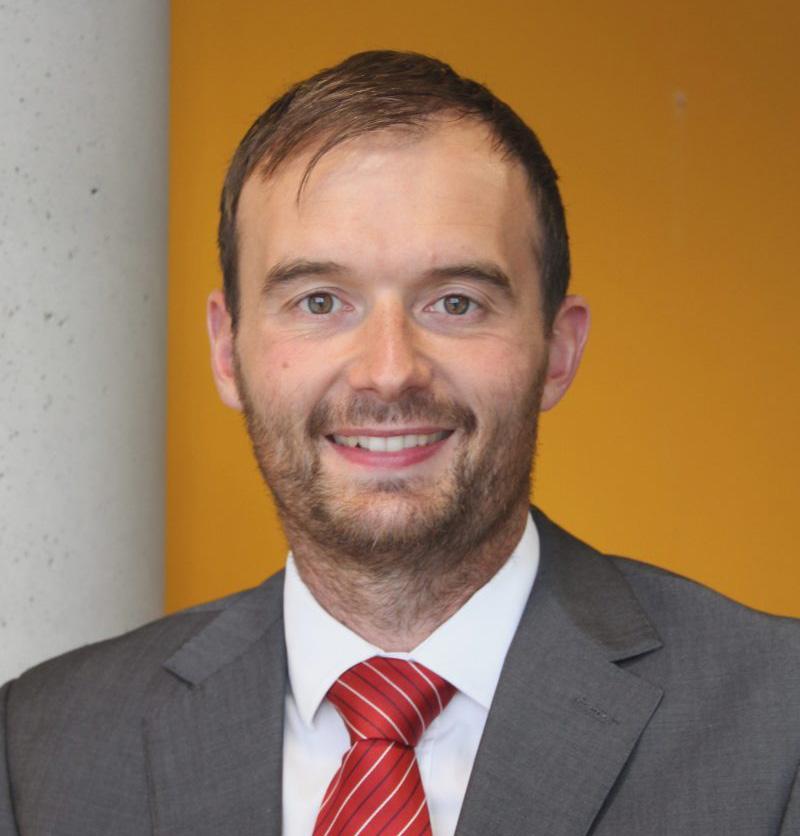
CHRIS SWAN HEAD OF RAIL AT TARMAC
Chris Swan has extensive experience in rail logistics with more than eleven years at Tarmac, where he leads the company’s national rail operations. In his role, Chris oversees the efficient movement of materials across the UK and into Europe, working in close collaboration with freight partners and industry bodies.

TARMAC
Tarmac is a major UK building materials company that has become one of the country's largest rail freight users. The company transports millions of tonnes of aggregates and cement by train from quarries and production sites into urban terminals, where materials are processed for final delivery by road. This rail-focused logistics model has positioned Tarmac as a significant player in Britain's freight transport sector.
Want to know more about Tarmac?
Visit: www.tarmac.com
How did you get started in the industry?
Like many people in rail freight, I joined the industry almost by accident. I started my career in 2005 on the graduate scheme at EWS (which later became DB Cargo), and I spent nine years there before joining Tarmac in 2013. Rail wasn’t a lifelong plan, but once I was in, I found the work rewarding and the impact we can have, particularly in freight logistics, really compelling.
What is your role within Tarmac?
I currently have two main roles at Tarmac. In the UK, I’m the Head of the Rail Department, responsible for the entire rail operation, from operations and commercial activity to strategy and customer delivery. In addition to that, I oversee our European rail operations in eight countries, helping to ensure we run effective, efficient railways across the wider CRH Group.
A big part of that is sharing best practices across the different countries we operate in, optimising our performance by learning from each other.
I also serve as the Chair of the Rail Freight Group, which is the industry association for rail freight. It’s a role that gives me broader insight into the sector and helps align industry goals with national priorities.
What does sustainability mean to you?
Sustainability, to me, is about finding ways to reduce our environmental footprint while still maintaining a viable, efficient business. Rail freight plays a vital role in that mission. It’s not just about cost or operational efficiency, rail brings clear environmental benefits: lower carbon emissions, improved air quality, and safer, cleaner transport, particularly in urban areas.
At Tarmac, we move very large volumes of material. If we didn’t use rail, that material would have to go a much greater distance by road. So, by increasing our reliance on rail and embedding it into our supply chain, we’re actively reducing emissions and helping make our cities cleaner and less congested. Sustainability isn’t a bolt-on; it’s a fundamental part of how we deliver value, economically and environmentally.
Tell us about Tarmac.
Tarmac is the UK’s leading sustainable building materials and construction solutions business. We're involved in everything from laying the roads you drive on to supplying the materials that build homes, hospitals, schools, and essential infrastructure.
What sets Tarmac apart is how we do what we do. We're transforming our logistics model to be smarter and more sustainable, transporting raw materials by rail into urban centres and handling the last mile
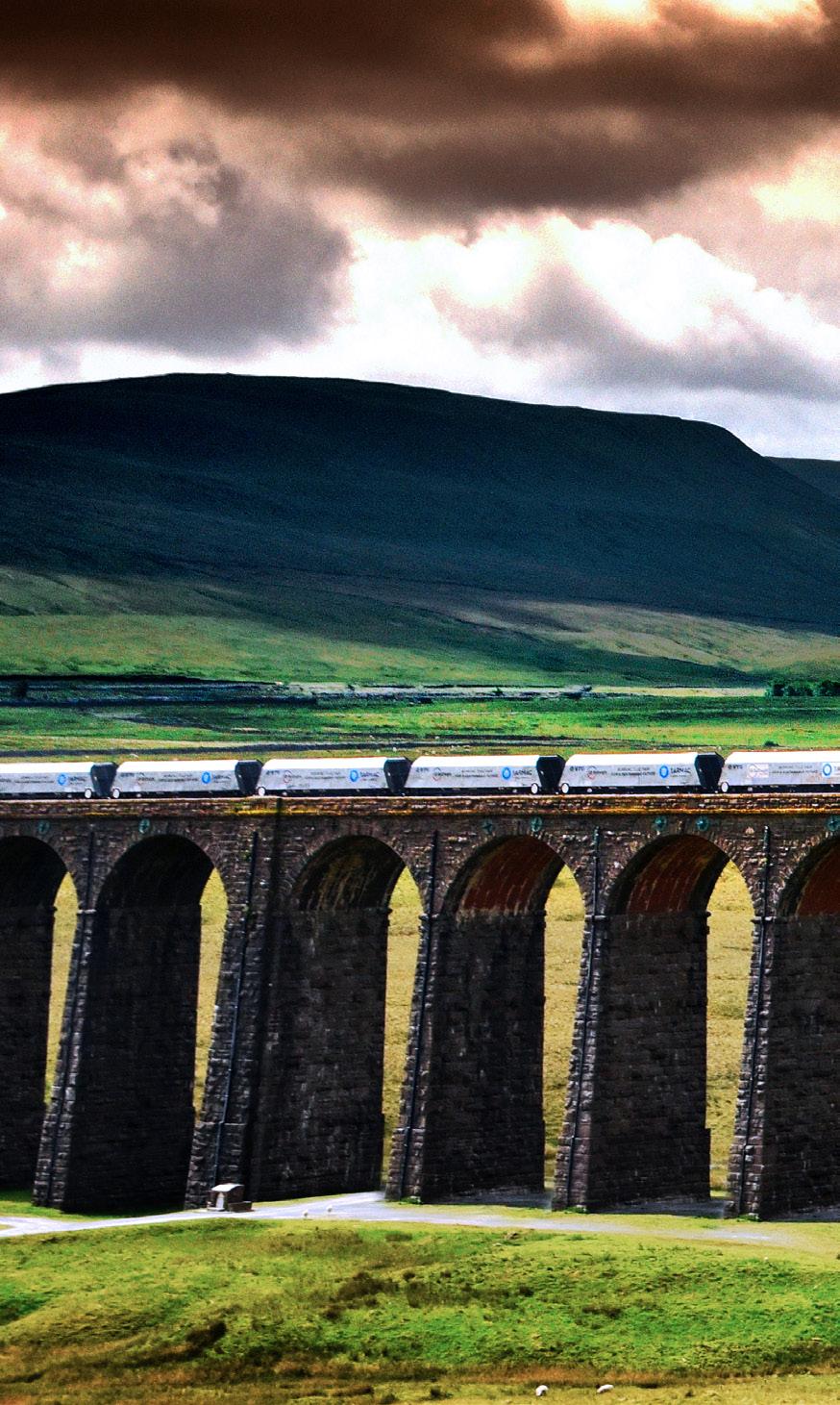
with low-carbon solutions. This innovative model supports decarbonisation, reduces congestion, and helps us deliver on our net-zero ambitions while still meeting the country’s infrastructure needs.
Which sectors do you work in?
Tarmac operates across a wide range of essential sectors.
We support:
• Infrastructure and transport –supplying the materials and expertise behind roads, bridges, and railways.
• Construction and housing – providing aggregates, ready-mix concrete, and asphalt for residential and commercial developments.
• Public services – enabling the delivery of hospitals, schools, and public buildings through reliable, sustainable materials.
• Industrial and logistics – underpinning the supply chains that keep the economy moving.
We also play a vital role in the freight and logistics sector. Through our growing use of rail freight, we not only improve efficiency but also significantly reduce emissions. It’s a powerful example of how Tarmac contributes to a more sustainable future while still meeting the demands of a growing population.
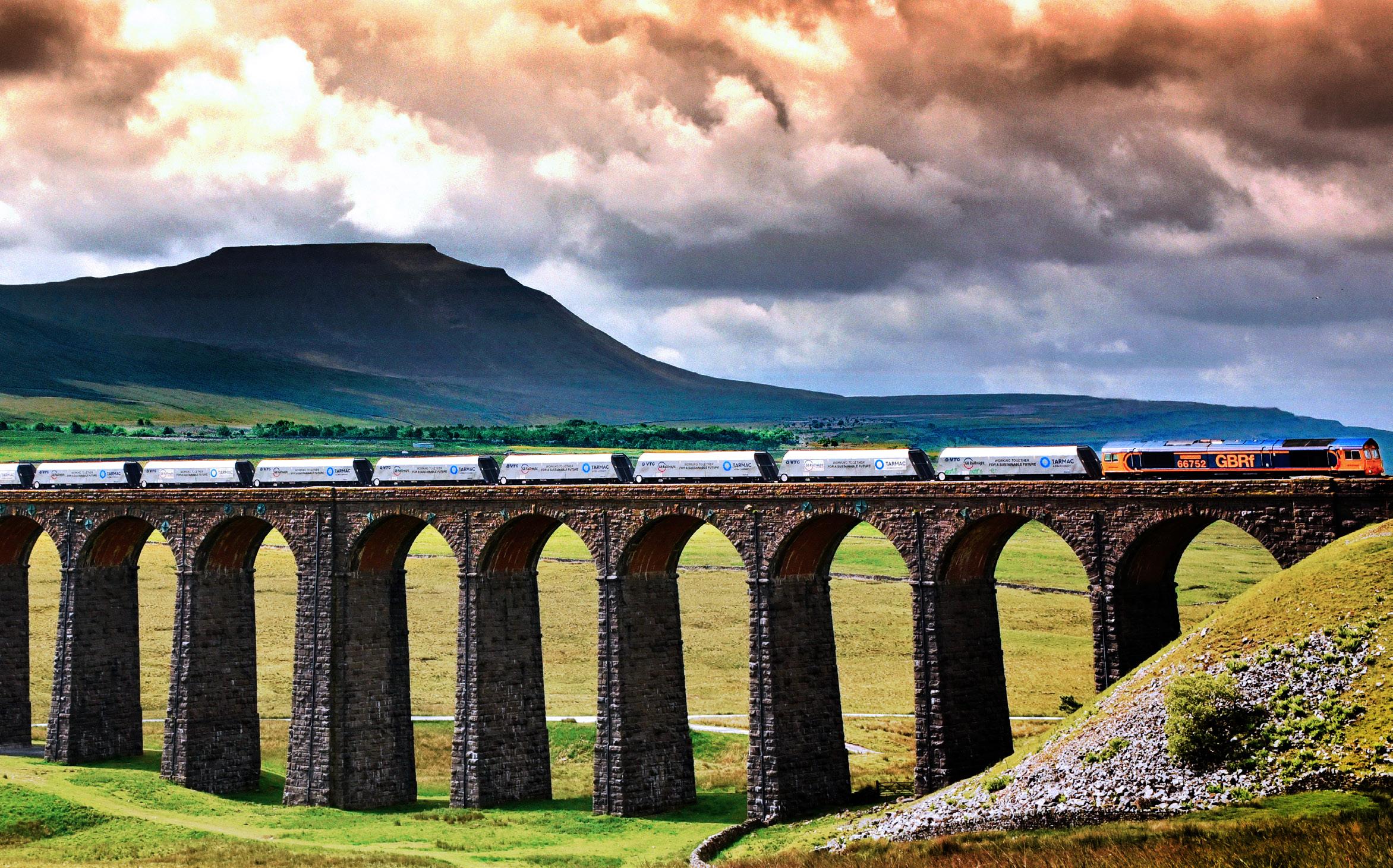
What new developments/strategies do you have?
At the heart of our strategy is a UK-wide network built on collaboration with freight operators, leasing companies, and infrastructure providers. Our core operating model is to run long, high-capacity trains from our rail-connected quarries and cement plants into urban areas and customer sites.
But to scale that model further, we need the right infrastructure. That means unlocking new connections to production sites, like quarries, and developing more urban terminals that can handle inbound rail freight.
The big ask from our side is simple but critical: we need more capacity, more terminals, and a planning system that supports freight. These aren’t glamorous requests, but they’re essential if the rail network is going to meet the demands of a more sustainable and construction-heavy UK economy.
What do you have planned for the year ahead?
Over the next year, we’re continuing to build on the momentum we’ve created around using rail to deliver major infrastructure projects. For one particular infrastructure project, we’ve transported around ten million tonnes of material by rail, making it one of
the largest rail-fed construction efforts in the UK to date. Similarly, other major projects depend heavily on the kind of rail delivery model we’ve developed: high-volume, reliable supply chains with a minimal last-mile road footprint.
Beyond project delivery, we’re focused on making our rail network even more effective. That means continuing to optimise our operations, growing capacity where we can, and supporting a model that’s not just fit for today, but for the future as well.
What are some of the biggest challenges your sector currently faces and what are some potential solutions?
One of the biggest frustrations is the slow pace of innovation. I joined the industry in 2005, and if I’m honest, the way we operate trains at a basic level hasn’t changed as much as it should have. Compared to road haulage, which has seen real leaps in vehicle technology, fuel efficiency, and digital systems, rail freight has lagged behind.
There are a number of reasons for this, in terms of financing new systems but also the bureaucracy that exists round the railway that doesn’t in other modes, that makes positive change harder to deliver.
That said, we are making progress. For instance, we’re trialling camera-based systems in Inverness that allow drivers to view the rear of their train in real time. It
sounds simple, but it enhances the safety of the operation, as it means for the first time the driver has visibility of the operation as well as the shunter at the back of the train with a radio. We want to be part of the push for more efficient, tech-enabled operations, and we're always open to working with partners who want to test new ideas.
Ultimately, rail freight offers huge environmental and efficiency benefits. But if we want to stay competitive and be part of a decarbonised future, we need to remove the structural barriers that slow us down.
If you were in charge of the UK rail industry, where would you target investment and/or look for improvement?
I’d prioritise investment in two key areas: decarbonising freight traction and expanding the number of terminals for rail freight in key markets. In the short term, the most effective way to reduce transport emissions is by shifting more freight from road to rail. However, in the long term, we must also address the fact that diesel locomotives can’t be the future, especially as road transport rapidly adopts battery and hydrogen technologies.
This solution might come via Hybrid locomotives and it is interesting to see the market start to invest in these, but we need to make sure that both the infrastructure and the rolling stock support the industry growth.
Equally important is expanding and protecting urban freight terminals, like our site at Washwood Heath in Birmingham. These hubs allow aggregates to arrive by rail, asphalt, concrete and other final products to be produced on-site, and road vehicles to complete the final mile, reducing congestion and emissions. In the future this model opens the door for increased take up of more electric vehicles.
This approach is only possible if we integrate rail with local clean transport strategies. Metro mayors and local authorities must see rail freight as enabling cleaner cities, not competing with passenger services.
Lastly, we must recognise the role of private sector investment in upgrading terminals, expanding networks, and driving innovation – all without relying on public subsidy. The rail industry should enable and accelerate this momentum.
How can the industry tackle its skills shortage and how do you recruit/retain/ train your staff?
I think the biggest challenge is awareness and making people aware of all the really interesting roles you can do in this industry. In rail freight alone, there are fascinating roles linked to engineering, planning, logistics, infrastructure, and sustainability. We’re literally helping build power stations and infrastructure, fill supermarkets, and keep cities running.
So, step one is telling that story better. We need to show that these are rewarding, impactful careers. Step two is giving people the autonomy to do their jobs well. People thrive when they feel trusted and empowered, and that’s true whether you’re in rail, construction, or any other sector.
Personally, I think it’s more of an attraction issue than a retraining one. The talent is out there. We just need to engage it better, earlier, and with more imagination.
‘If we didn't use rail, that material would have to go a much greater distance by road. So, by increasing our reliance on rail and embedding it into our supply chain, we're actively reducing emissions and helping make our cities cleaner and less congested.’
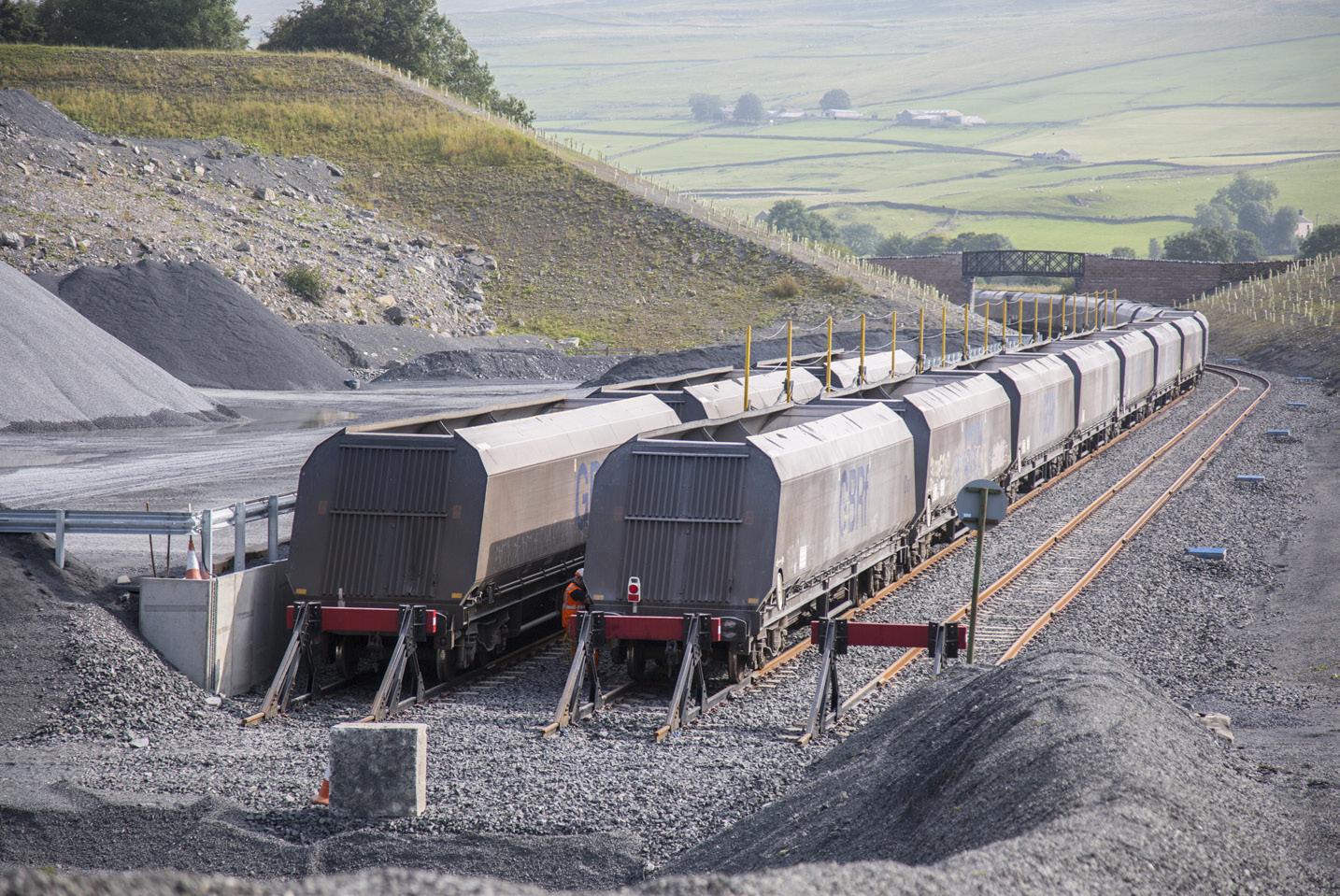
How can the rail industry better integrate with other forms of transportation to provide seamless travel experiences?
It's a good question, and it really comes back to our model. Take Washwood Heath, for example. We bring aggregates directly from the quarry, into the city, produce asphalt and concrete on-site, and then our trucks only need to travel the final short distance to deliver. It's a highly efficient system.
We’ve replicated this kind of integrated setup across several locations such as Agecroft & Bredbury in Manchester, Cross Green in Leeds, and multiple sites around London like Harper Lane and Battersea. These hubs allow us to move material efficiently into urban centres by rail, where it’s then distributed locally by road. It’s a smart, sustainable model that not only reduces road congestion and emissions but also supports better service delivery.
What role do you see for hydrogen and other alternative fuels in the future of rail transportation?
Alternative fuels will absolutely play a part in rail freight’s future, but context matters. Today, shifting more freight from road to rail gives us clear and immediate sustainability gains. Even if we're still running diesel locomotives, the overall carbon footprint is significantly reduced compared to moving the same volume by road.
However, this picture will change. If, in ten years, a large portion of road freight is likely to be powered by hydrogen or batteryelectric vehicles, yet if rail is still using diesel, then the sustainability case for rail weakens. That’s why the rail sector urgently needs to accelerate its own transition. Hybrid locomotives, like those being introduced by GB Railfreight that can switch between diesel and electric and still move
bulk traffic, are a good start but there is a lot to do for the industry beyond that.
To maintain rail’s environmental leadership, we need government support for electrification and innovation in locomotive technology. And if governments are serious about decarbonisation, investing in the freight side of rail, not just passenger services, should be a headline priority.
What has Tarmac achieved that’s made a difference to the rail industry?
Tarmac was named Rail Freight Group’s Rail Business of the Year in 2021, which was recognition not just for one standout initiative but for the breadth of our activity. We’ve invested in new terminals, expanded our rail network, and continued to explore alternative fuels and sustainable logistics.
We’ve made our trains longer, allowing us to move more material using fewer paths, this improves efficiency and reduces fuel use per tonne. We’ve also maintained a strong operational record across our network. Our approach has enabled us to deliver major infrastructure projects where rail has been the backbone of the supply chain.
It's also worth highlighting that all this investment, terminals, wagons, infrastructure, is from the private sector. We’re not relying on public funding, this is the construction and materials sector investing in its own efficient, lower-carbon supply chains.
Lastly, we mustn’t forget the role of rail in enabling decarbonisation in urban areas. Our electric concrete mixer in Birmingham only works because the aggregates arrive by train and the mileage is low. For cities to make the switch to electric road fleets, they need well-placed, railconnected hubs. Protecting and investing in these terminals is essential, not just for freight, but for achieving broader urban environmental goals.
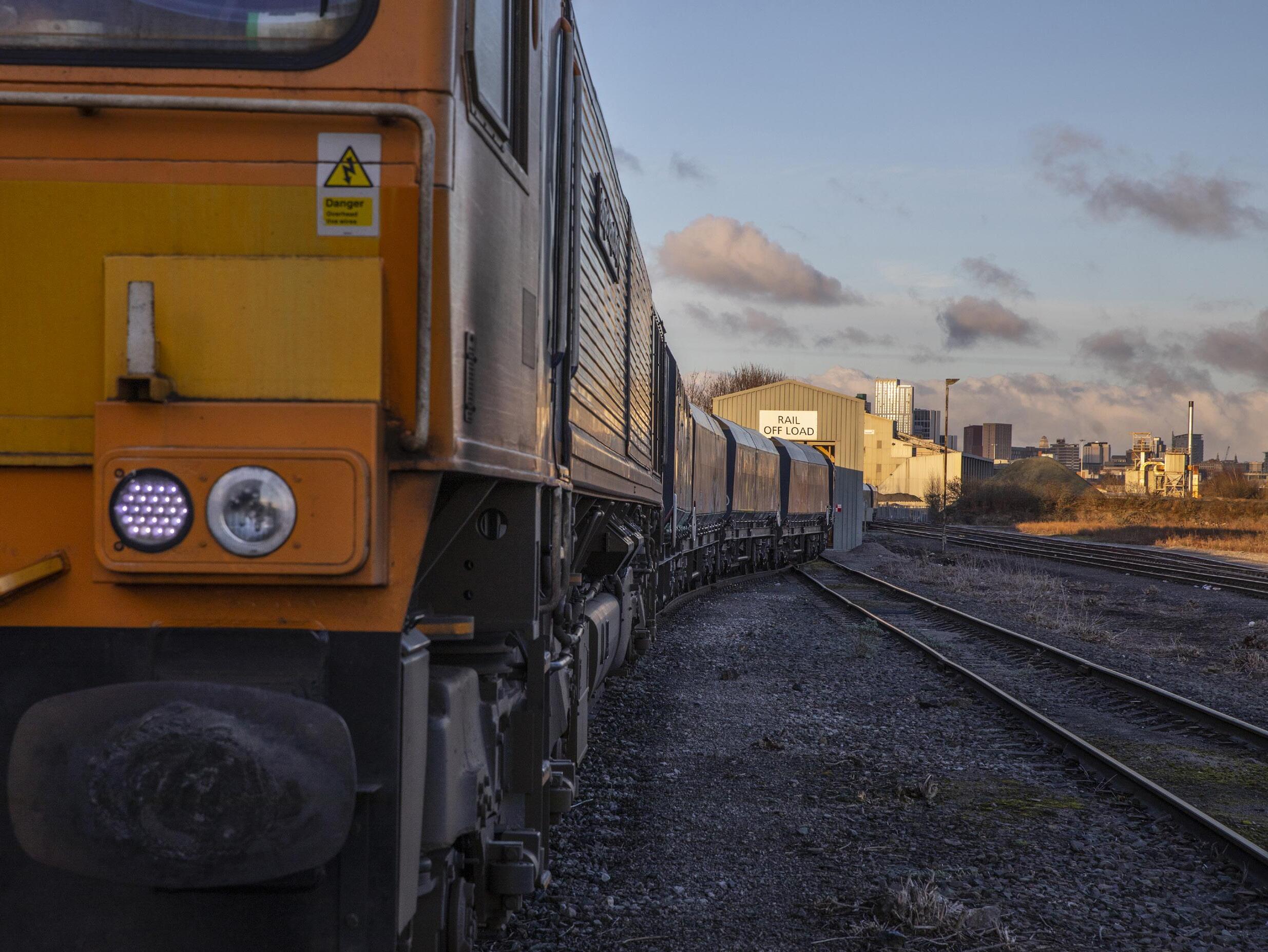
Rail logistics
Essential in supporting lower carbon building and infrastructure across the UK.
As the UK’s largest user of construction freight, we operate more than 5800 trains a year.
Essential materials, delivered with typically 76% less carbon emissions than by road.


A New Chapter Unfolds in 2025
2025 heralds a transformative milestone for GeoAccess, a leader in geotechnical asset inspections, particularly within the rail sector

Following another outstanding year of growth and client success, the company enters its next phase stronger and more determined than ever. From an expanding workforce to strategic diversification, the journey of GeoAccess proves how vision, values, and innovation combine to propel long-term success.
The Power Behind the Progress
At the heart of GeoAccess’s success story is its people. With a recent recruitment drive boosting its senior leadership team and expanding the on-site contingent to over 175 people, the company is solidifying its presence across the UK. This growth is no coincidence, it's a direct result of aligning every new team member with the company's core values.
In today’s rapidly evolving operational landscape, challenges are inevitable. But at GeoAccess, challenges are catalysts.
‘Working together with clients as one cohesive team enables us to turn problems into practical, forward-thinking solutions’ says new Managing Director David Frost.
From GeoAccess to GeoAthena
A major highlight of 2025 is GeoAccess's strategic reorganisation into a new group
structure. The company is now a key part of the GeoAthena Group, reflecting its readiness to scale operations beyond its traditional core and into new territories and disciplines.
While continuing to serve key earthwork examination framework contracts, GeoAccess is now also partnering with Tier 1 suppliers, bringing its best-in-class services to a broader market.
This structural shift sees David Frost transition from Operations Director to Managing Director of GeoAccess, while Mark Coleman assumes the role of Group CEO. Their leadership marks a bold new era of cross-sector innovation and growth.
GeoInspections and GeoZephyr take flight
Growth isn't just lateral, it's vertical too. With the launch of GeoInspections, led by David Howard, the GeoAthena Group is extending its reach into other railway asset sectors, and even beyond rail infrastructure entirely. Though still in its early days, GeoInspections is backed by the experience and credibility of the group, and big things are expected in the near future.
Meanwhile, GeoZephyr, a newly launched drone technology division under the leadership of Henry Silverwood, is
set to revolutionise how inspections are performed. Drone innovation has always been part of GeoAccess’s DNA, but the establishment of a dedicated division underscores the group's commitment to cutting-edge, unmanned aerial technology.
The Rise of EduQuest
Perhaps the most eagerly anticipated development is the upcoming launch of EduQuest, a custom-built learning management system (LMS) that is being developed from the ground up. As development ‘sprints’ progress rapidly toward the first demo, excitement is running high within the GeoAthena Group. Designed to serve all group divisions, this LMS aims to transform internal training and external knowledge sharing and setting a new benchmark for innovation in the industry
Looking ahead
With every initiative, product, and person aligned to its mission, GeoAccess and the broader GeoAthena Group are poised for a future defined by excellence, agility, and impact. Stay updated with the latest from GeoAccess by getting in touch via the contact information below and follow us on our official social media channels for breaking news on EduQuest, GeoZephyr, and GeoInspections.
Tel: 0333 772 2315
Email: info@geoaccess.co.uk
Visit: www.geoaccess.co.uk
David Frost is Managing Director of GeoAccess
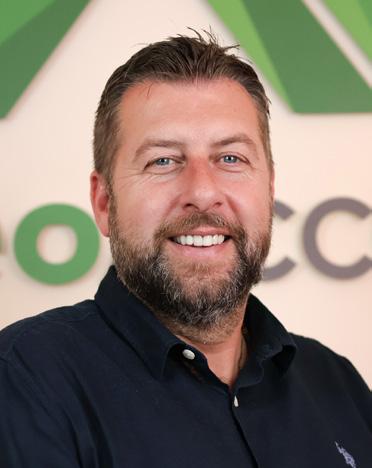
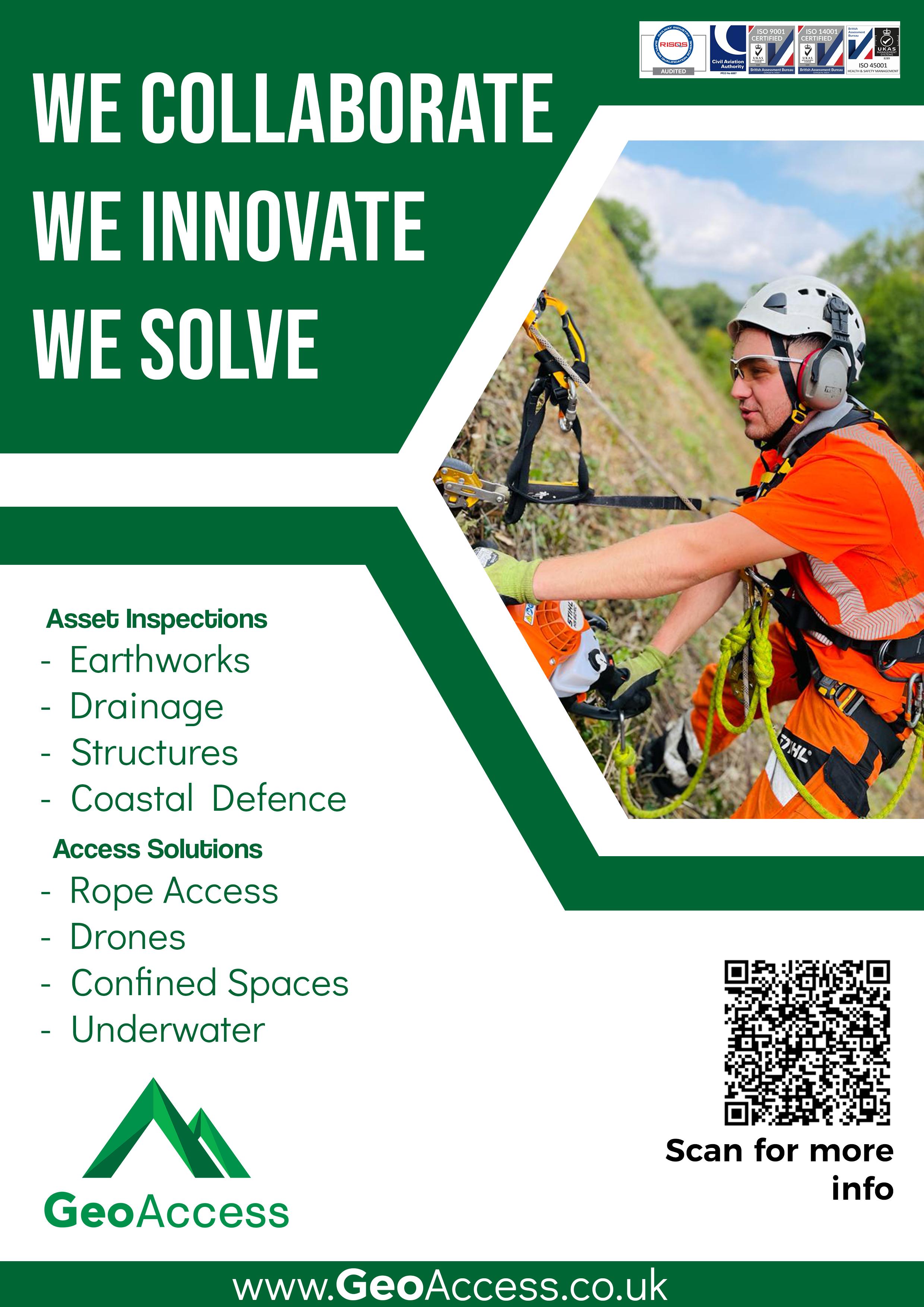

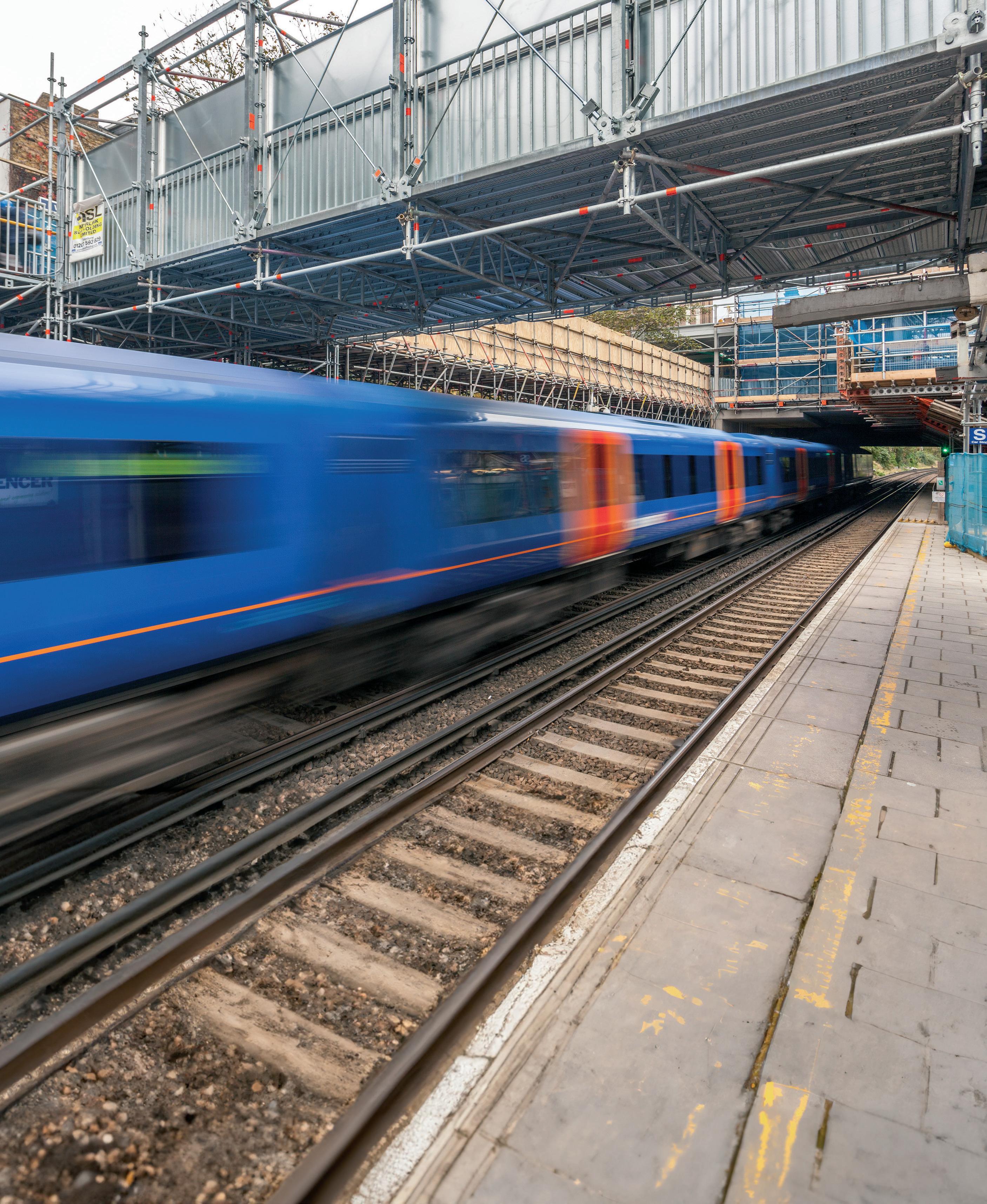
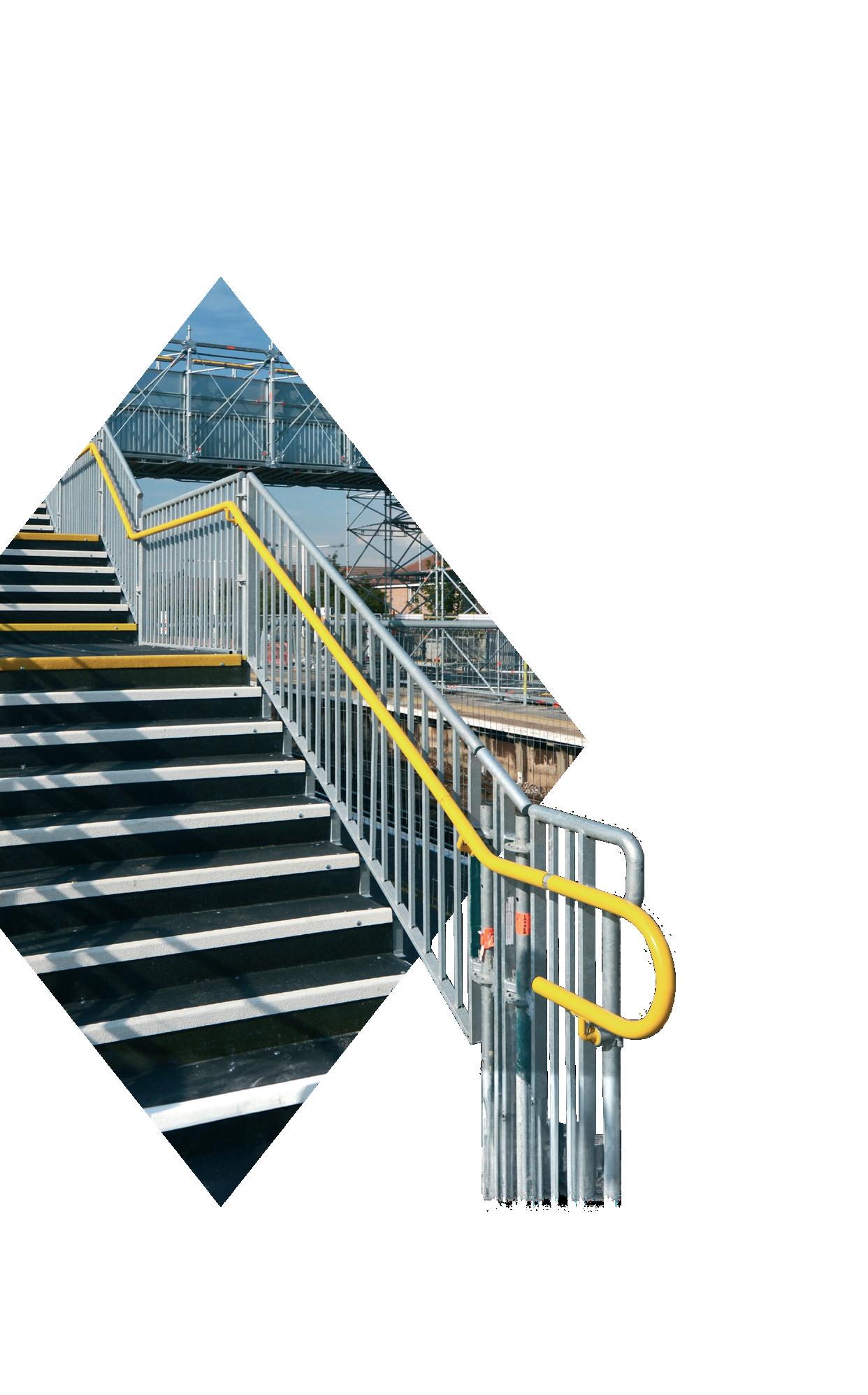
FOR SPANS OF UP TO 30mFROM FOOTBRIDGES TO HEAVY LOAD SUPPORT GIRDERS
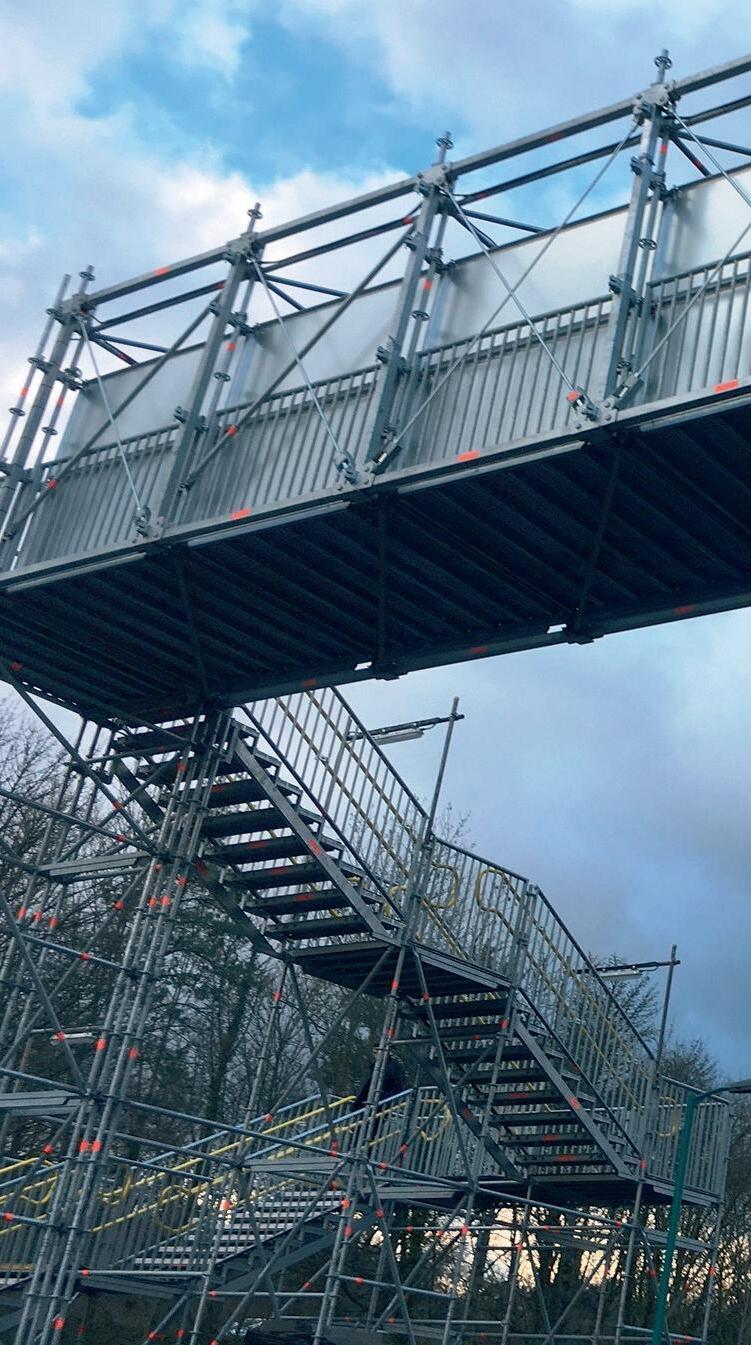
layher.co.uk


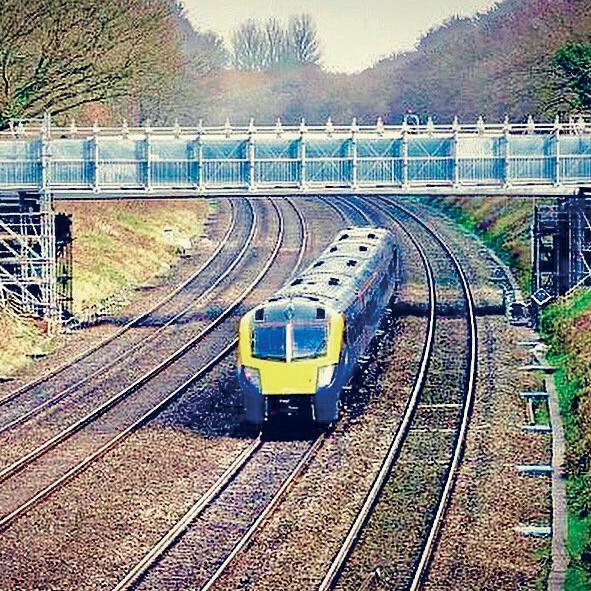















On Track for Change
As
the UK rail sector embraces a future defined by decarbonisation, climate resilience and efficiency, innovation is no longer optional –it’s essential
One company helping to lead this transformation is Concrete Canvas Ltd, a UKbased manufacturer whose unique construction material is redefining how the industry tackles trackside challenges. Now celebrating its 20th year, the business is supplying sustainable infrastructure solutions to rail networks across the globe, with over 100 countries already utilising its groundbreaking technology.
At the heart of the company’s success is its signature product, Concrete Canvas® – a revolutionary material classed as a Geosynthetic Cementitious Composite Mat (GCCM). Known colloquially as ‘Concrete on a Roll®’, it combines the strength & reliability of concrete with the speed and ease of a geosynthetic. The result is a flexible, rapidly deployable product that delivers both engineering performance and environmental benefits.
With a design life exceeding 120 years (as verified by BBA Certificate 19/5685), Concrete Canvas® is already trusted on high-profile rail projects, including HS2. Its uses are wide-ranging: from lining crest drainage channels and protecting slopes to suppressing weed growth beneath access stairs or walkways and remediating existing assets. Its ability to conform to uneven ground and be installed in difficult-to-access areas makes it particularly suitable for the constraints of railway environments, where possession windows are limited and health and safety risks are heightened.
Major clients such as Network Rail, Transport for London and Irish Rail are increasingly specifying the material, alongside Tier 1 contractors. In one recent example, 25m² of Concrete Canvas® was installed in under three hours at Chirk Station in North Wales to suppress vegetation beneath GRP access stairs –eliminating a trip hazard and reducing future maintenance requirements. No heavy machinery was needed, demonstrating the material’s suitability for remote or spaceconstrained locations.
A key advantage of Concrete Canvas® lies in its lower-carbon profile. Independent lifecycle assessments have shown that CCT2® – a variant of the product – can cut embodied carbon by up to 63 per cent
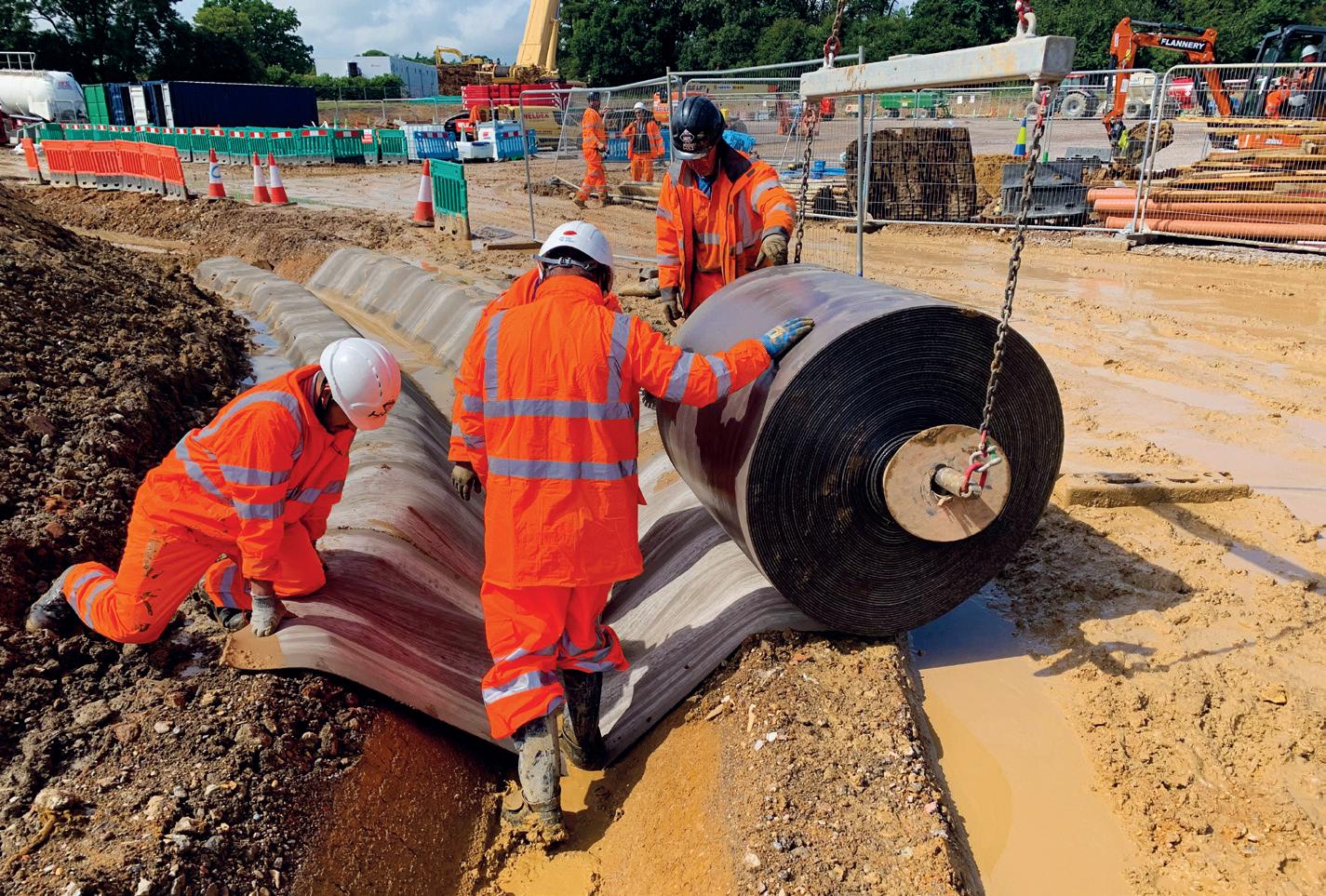
compared to traditional 150mm ST4 poured concrete. In addition, the surface of the material supports natural greening over time, encouraging the growth of moss and algae. This not only helps the material blend into its surroundings but also enables passive carbon capture – supporting the rail industry’s drive towards net-zero infrastructure.
Environmental responsibility is embedded across Concrete Canvas Ltd’s operations. The company is ISO 14001 certified and has invested in solar power for manufacturing, as well as transitioning its vehicle fleet to electric. Its sustainability credentials are underpinned by a transparent approach to data, with technical specifications, installation guides, case studies and a detailed Carbon Comparison Report freely available on the company’s website.
The simplicity and speed of installation is another major draw. Concrete Canvas® is available in large bulk rolls for high-output applications or smaller Batched Rolls for use in confined or remote areas. These can be transported manually, enabling rapid deployment without the need for large crews or heavy equipment. This reduces time on site, lowers costs, and minimises disruption
to rail services – a critical factor in today’s pressure-driven rail environment.
Concrete Canvas Ltd is not only supplying a material – it is helping redefine the standard for sustainable rail infrastructure. Through a combination of innovation, technical expertise and proven in-field performance, the company continues to support clients seeking costeffective, carbon-efficient alternatives to conventional methods.
To see the product in action or explore how it could support your next project, Concrete Canvas Ltd offers live demonstrations, online resources and tailored consultations. Whether on site or at their purpose-built headquarters near Cardiff, the team is ready to showcase how a roll of concrete can help shape a stronger, greener future for rail.
Tel: 0345 6801908
Email: info@concretecanvas.com
Visit: www.concretecanvas.com

Workforce protection barriers with proven ALO, avoiding all line closures and costly programme delays with adjacent line open

Secure your workforce with trackside refuges built from with Retainer-Rock®, Legato® , Duo™ or Vee-Rock™ retaining walls and interlocking blocks
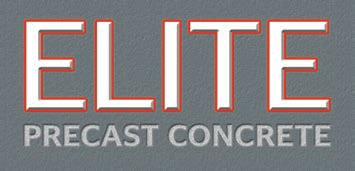




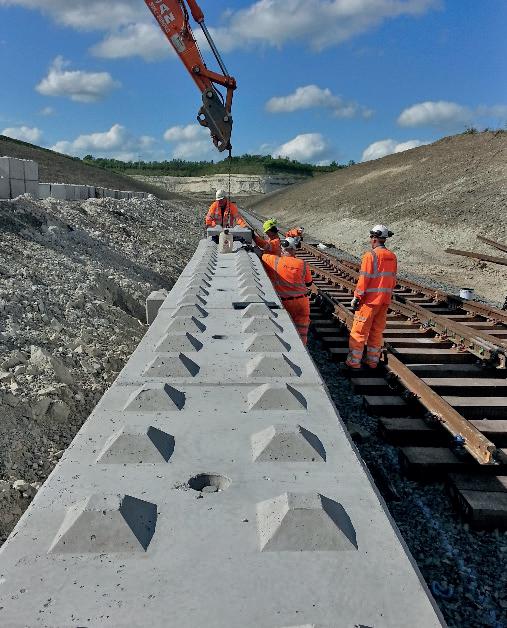
Ensure rail transport networks remain operational with embankment retention, using a choice of versatile interlocking blocks
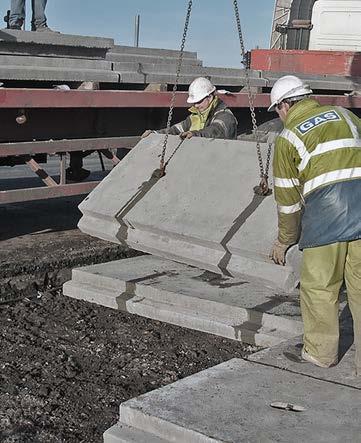
Protect people, services and infrastructure with channels, troughs, cable protection covers, indicator posts and utility protection covers

Hoarding and fencing stabilisation, with ballast or counterweights, using above ground/no dig fencing and hoarding systems
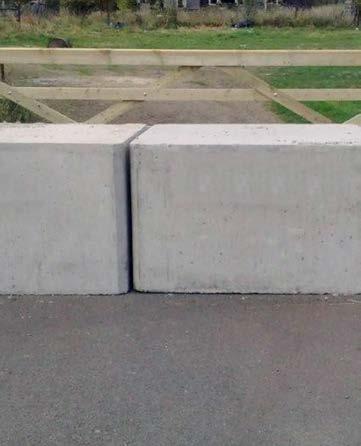
Protect rail lines and stations from unwanted visitors with our bollards, Jersey-Lite™ , Jersey barriers and security block solutions







Interlocking Blocks are Transforming UK Rail
The UK Rail Network is the backbone of national transport, demanding infrastructure solutions that are robust, adaptable and efficient

Enter Elite Precast Concrete’s Legato® interlocking blocks – a modular system that’s quietly revolutionising how Network Rail and its contractors tackle everything from safety barriers to retaining walls. Here’s why these blocks are fast becoming the industry's go-to solution.
Unmatched strength and durability
Legato® blocks are engineered from highstrength concrete, which ensures that structures built with Legato® blocks can withstand the intense demands of the rail environment, from heavy loads to vibration. The absence of steel reinforcement or recycled aggregates also means that these blocks are extremely fire-retardant and resistant to environmental degradation, aligning perfectly with Network Rail’s focus on long-term durability and low maintenance.
Speed and flexibility in construction
Time is money on the railway, where every minute of track closure impacts passengers and freight. Legato® blocks are designed for rapid installation: each block features a castin lifting pin, allowing them to be quickly
and safely manoeuvred into place without specialist lifting equipment.
In a real-world example, a 120-metre, 3.2-metre-high perimeter wall was constructed in just four days by two workers – ready for use as soon as the block was set. This speed is invaluable for projects requiring rapid deployment, such as emergency repairs or temporary works.
Minimising disruption and maximising safety
One of the most innovative uses of Legato® blocks was during a major signalling renewal project in Cardiff. Traditional methods would have required a 72-hour all-line possession – disrupting services and inconveniencing passengers.
Instead, Legato® blocks were assembled into a robust barrier between open and closed lines, allowing safe working conditions without shutting down the entire section. This not only protected the workforce but also kept trains running, minimising disruption and congestion at key stations. After the project, the blocks were simply disassembled and redeployed elsewhere – a testament to their reusability and flexibility.
Versatility for every rail application
Legato® blocks are not just for barriers – they’re used for blast walls, bridge abutments, retaining structures, flood defences and more. Their interlocking design means they can be configured into almost any layout with special ‘Bendi’ blocks available for curves and corners.
If project requirements change, the modular system allows for easy reconfiguration or extension, futureproofing investments and reducing waste.
Sustainability and quality assurance
Elite Precast’s manufacturing processes are designed to minimise carbon footprint, using efficient, low-energy methods and optimising transport logistics. The blocks are produced in modern factories to strict quality standards, ensuring consistent performance across every project. Their long design life means fewer replacements and less environmental impact overtime.
A win-win for Network Rail and the public
The adoption of Legato® blocks has delivered tangible benefits: faster project delivery, reduced costs, enhanced safety and less disruption for passengers and freight operators. Their proven track record on live rail projects demonstrates why they are now a preferred choice for Network Rail and its contractors.
In a sector where reliability, speed and adaptability are paramount, Elite Precast Concrete’s Legato® interlocking blocks stand out as a smart, sustainable solution –building a safer, more resilient rail network for the UK.
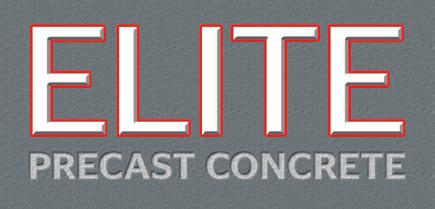
Tel: 01952 588885
Email: sales@eliteprecast.co.uk
Visit: www.eliteprecast.co.uk
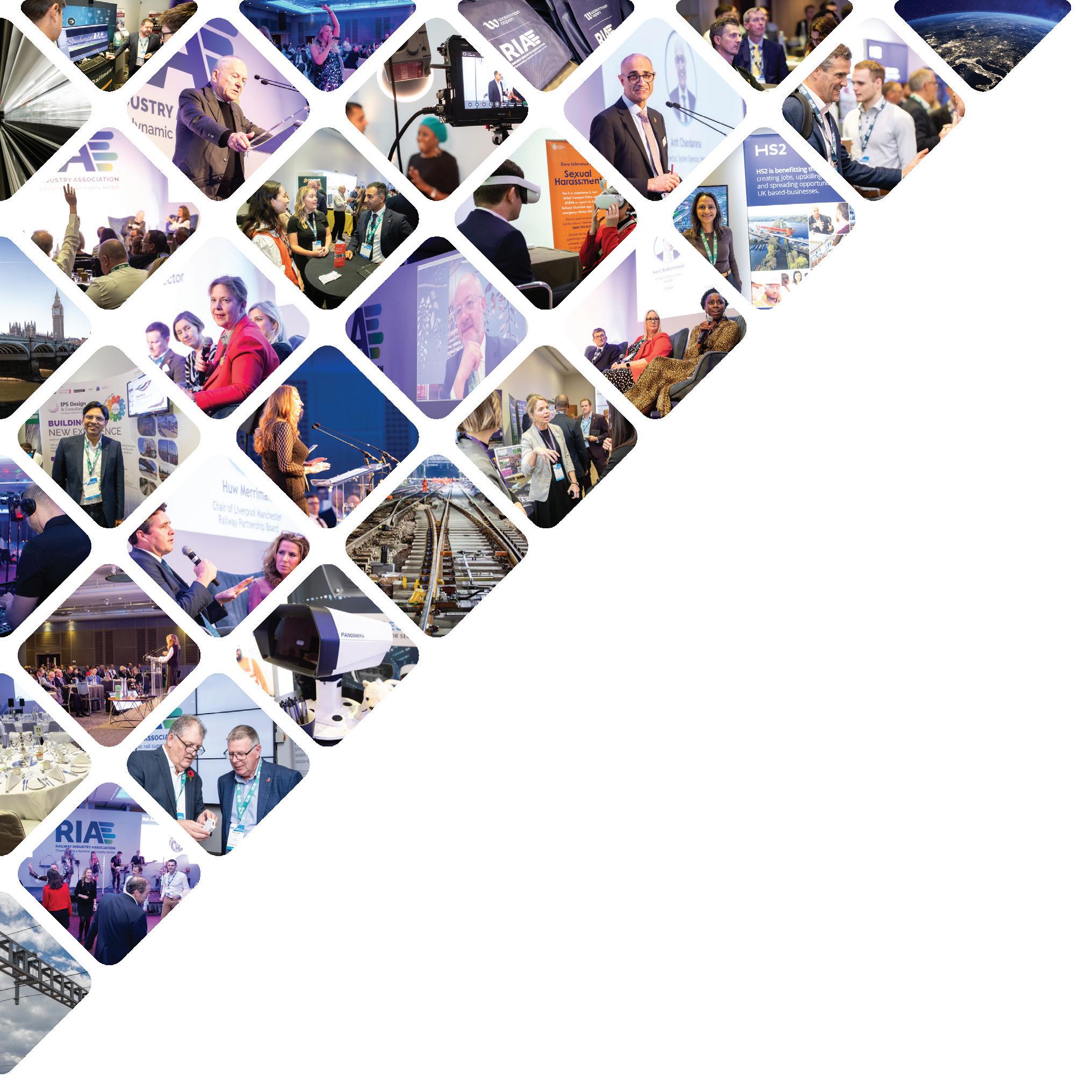




What is the Railway Industry Association?
The Railway Industry Association (RIA) is the national trade association for UK-based suppliers to the rail industry and is active across the nations and regions of the UK
Established nearly 150 years ago, RIA has 400+ member companies from across the supply chain.
As the champion of a dynamic rail supply sector, RIA supports the delivery of a bigger and better rail industry, representing the sector as an essential generator of economic growth, jobs and investment as well as supporting a low carbon form of mass transit for communities across the UK.
RIA advocates, campaigns and lobbies to highlight the value of UK rail and engages with politicians from all parties and civil servants in the UK and devolved governments in addition to regional authorities. The association works closely with all the major rail clients across the country including Network Rail and Transport for London and collaborates with a range of industry partners and stakeholders to make the case for investment in rail. Key focus areas for lobbying include:
• The need for a visible and certain pipeline of rail work.
• Clarity on major rail projects and significant enhancements.
• Decisions on rolling stock manufacturing and refurbishment.
• Rail decarbonisation including electrification and battery traction.
• The benefits of leveraging potential retail solutions and data advances to improve customer experience and railway performance.
• Highlighting export opportunities for UK rail suppliers.
• Supporting SMEs.
Why join RIA?
RIA offers its members a whole host of benefits, helping to improve visibility of their business and products. RIA represents members' interests to Government, political decision-makers, major clients, regulators, and industry bodies. It holds regular events
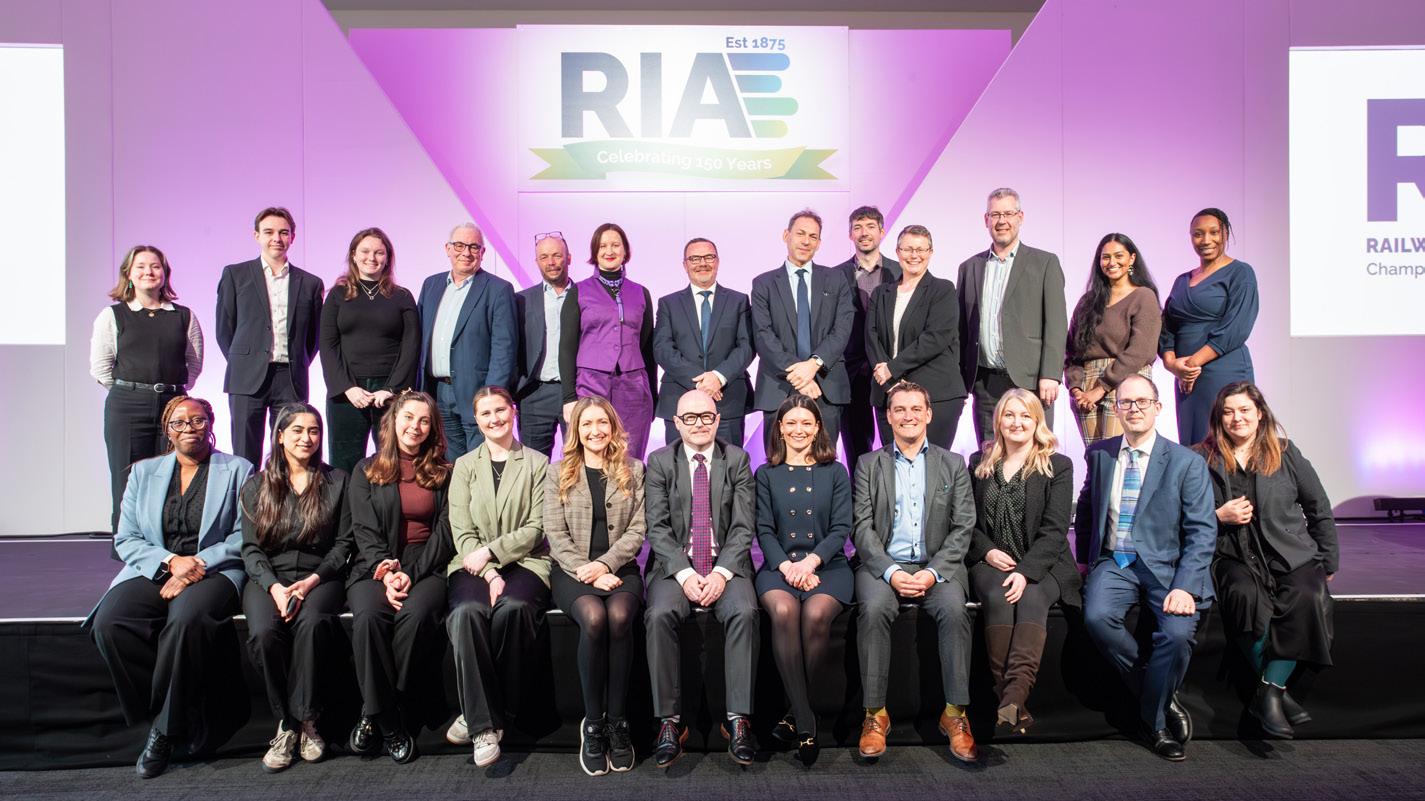
with politicians, engages with government and industry consultations, and runs campaigns on major issues affecting rail.
RIA facilitates industry dialogue and knowledge sharing through a comprehensive events programme. This includes Member Interest Groups covering technical and policy-based subjects, providing forums for in-depth discussions on specific areas of rail industry development. The association also organises flagship conferences, such as the RIA Annual Conference and the RIA Innovation Conference, which bring together industry leaders, policymakers, and innovators. Additionally, RIA arranges specialised workshops and meetings, enabling members to engage directly with key industry stakeholders and decisionmakers, fostering collaboration and driving forward the interests of the rail supply chain.
The association keeps members up to date with industry news and information, supporting the development of key industry workstreams and promoting innovation and sustainability. RIA provides a platform for members to showcase news or business
developments through its website and social media channels.
Additionally, the association promotes exports of members' products and services by hosting trade missions and events, working closely with the Department for Business and Trade (DBT), and attending overseas trade shows in countries such as India and Australia.
If you are interested in joining RIA, please get in touch via the contact information below.
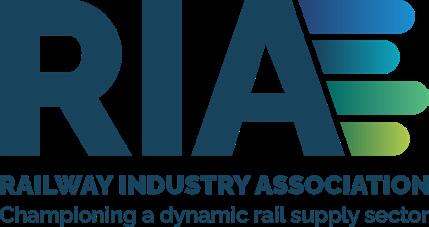
Tel: 020 7201 0777
Email: membership@riagb.org.uk
Visit: RIAGB.org.uk
LinkedIn: Railway Industry Association
Twitter: @railindustry

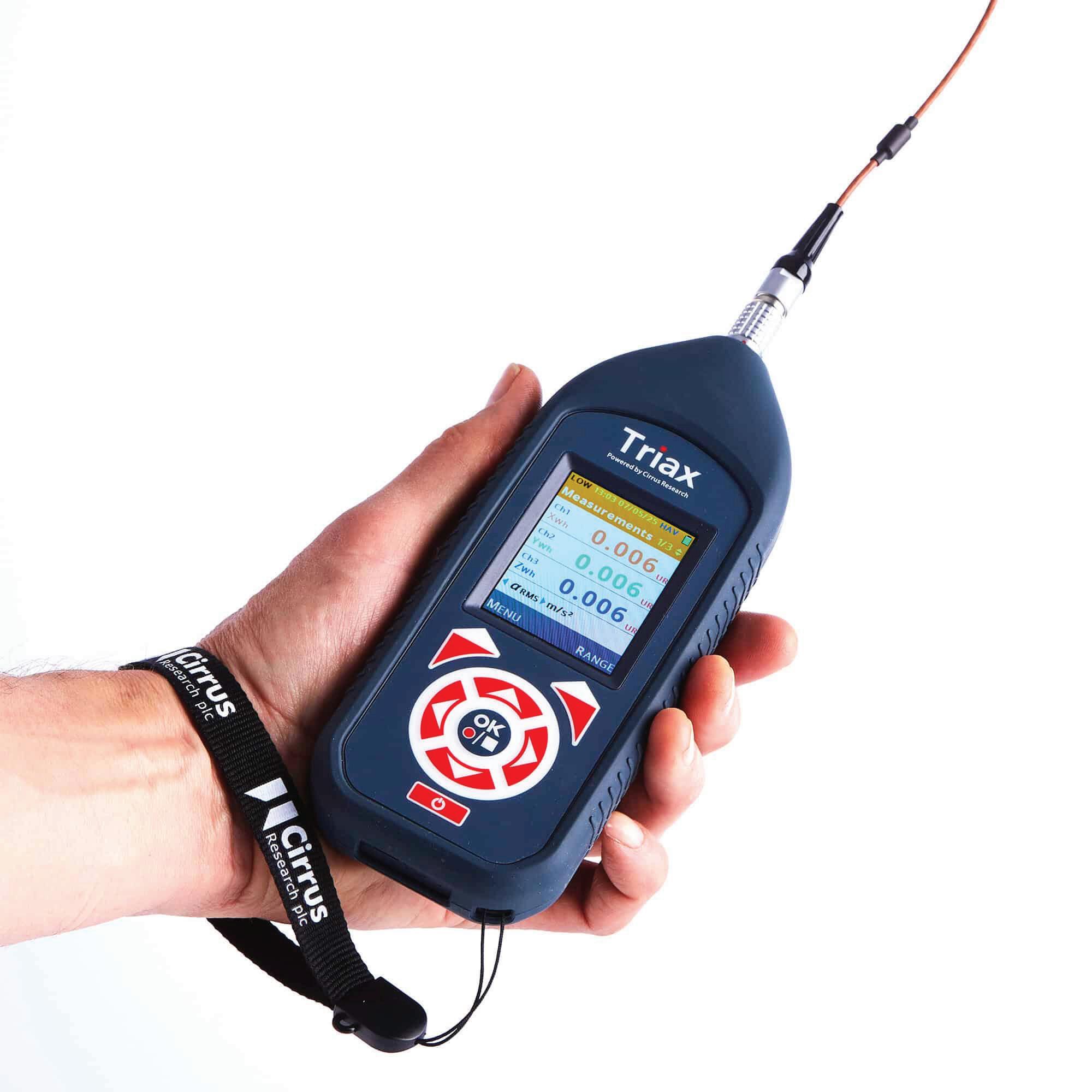

Precision Noise and Vibration Monitoring
With over 50 years of expertise, Cirrus Research plc is a leading UK manufacturer of noise and vibration monitoring instruments, trusted worldwide by professionals in the construction, transportation, manufacturing, and environmental sectors
In the rail industry, where managing occupational and environmental noise is both a legal obligation and a reputational concern, Cirrus offers the tools, insights, and technical support necessary to meet and exceed compliance standards.
Cirrus Research solutions help rail professionals protect workers from longterm hearing damage, assess vibration risks in line with HSE guidance, and address public concerns around noise nuisance and environmental impact.
Proven solutions for a demanding industry
For occupational safety teams involved in rail operations, Cirrus Research provides a comprehensive suite of instruments, including:
• The doseBadge: A wireless personal noise dosimeter ideal for lone workers or mobile teams exposed to varying noise levels, such as engineers, maintenance crews, or depot staff.
• The Triax: A newly launched human vibration meter designed to assess both

hand-arm and whole-body vibration in line with the Control of Vibration at Work Regulations.
• The Optimus+ Sound Level Meters: Designed for quick, accurate environmental and occupational noise assessments, with models that meet Class 1 or Class 2 standards, ideal for use in depots, near-trackside environments, or public-facing facilities.
• Quantum Outdoor: A real-time noise monitoring system used for long-term environmental monitoring around major rail projects, stations, or infrastructure upgrades.
Designed for compliance and simplicity
Cirrus instruments are designed for ease of use in the field and provide the robust, traceable data required for regulatory reporting. Whether adhering to the Control of Noise at Work Regulations 2005, environmental planning requirements, or internal health and safety protocols, Cirrus ensures that data collection is accurate, defensible, and efficient.
Each instrument is backed by licensefree software, a 15-year industry-leading
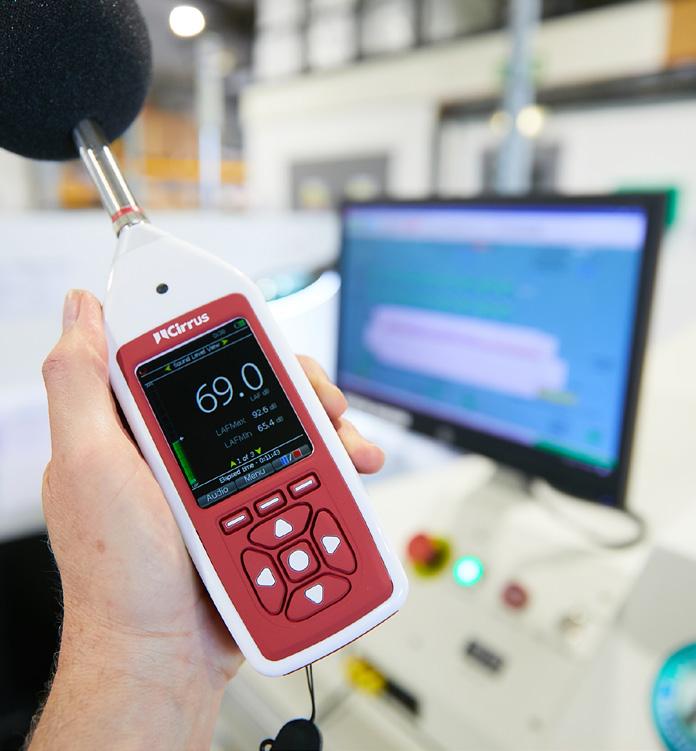
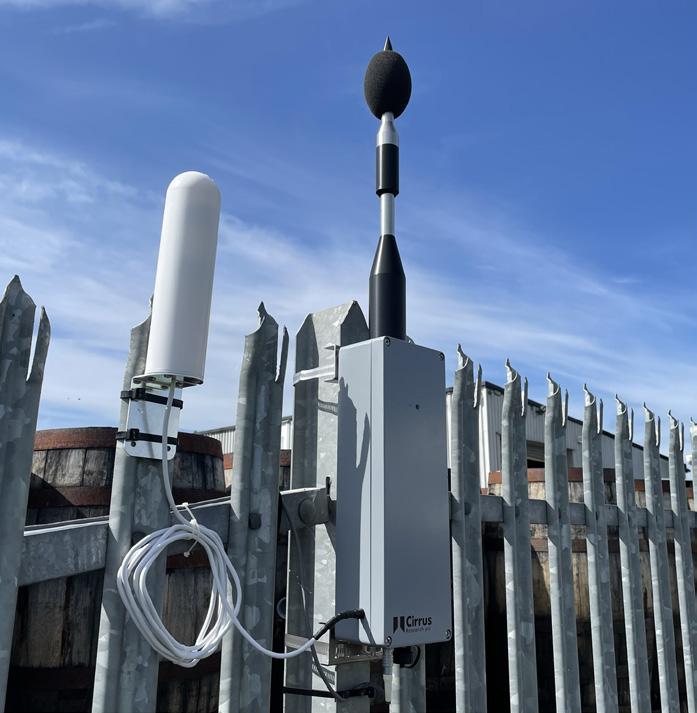
warranty, a global network of service and support centres, and ongoing assistance and training even after the sale.
UK manufacturing, global reach
Headquartered in North Yorkshire, Cirrus Research designs, manufactures, and supports its products in the UK. This endto-end control over quality, coupled with a responsive in-house technical support team, makes Cirrus a reliable partner to the rail industry’s evolving needs.
Whether a project requires short-term noise monitoring or ongoing compliance management across multiple sites, Cirrus Research provides not just the equipment, but the expertise to help rail professionals manage risk, protect health, and build trust with stakeholders.
For more information, get in touch with Cirrus Research plc.

Tel: 01723 891655
Email: sales@cirrusresearch.com
Visit: www.cirrusresearch.com
Rediscovering a Railway Gem in Dumfries and Galloway
Nestled along a quiet, leafy single-track road in Eastriggs, southern Scotland, lies a historic site once known as ‘the largest factory in the Empire’

Built during World War I to meet the urgent demand for munitions, HM Factory Gretna played a critical role in producing cordite – nicknamed ‘Devil’s Porridge’ – an explosive propellant for artillery. At its peak, the factory employed 30,000 workers, including 12,000 women.
Today, this former military base, with direct connections to the West Coast Main Line, is experiencing a remarkable revival. Rail Sidings Limited, a dynamic SME with bold ambitions, has reactivated the site after 14 years of dormancy. With a strong commitment to supporting the local community, the company is creating jobs and career pathways for young people in the rail industry.
Rail Cluster Scotland, a project led by Scottish Engineering and funded by Scottish Enterprise, Transport Scotland, and Skills Development Scotland, quickly recognised the site's potential. The collaboration with Managing Director Gary Draisey has proven instrumental in supporting Scotland’s rail sector, paving the way for transformative developments.

A fast-growing hub for rail operations
In just eight months, this once-hidden gem has reached full capacity. The site now accommodates a vast array of wagons, passenger trains, and snowploughs, offering secure storage, repair, and maintenance services while employing seven local people on a mix of full-time and part-time contracts.
Yet, this is only the beginning of Rail Sidings’ ambitious vision. The site's potential as a rail hub for Southern Scotland, the Borders and Northern England is undeniable. It serves as a crucial link between the central belt and Southern Scotland and Ireland, filling a longstanding logistical gap. By enabling more efficient transport routes, this site has the ability to reduce the carbon footprint for all these areas, significantly cutting mileage for products reaching their destinations.
Several local businesses – including quarries and logistics firms – have expressed keen interest in utilising the railhead to transport goods by rail rather than road. Expanding access to the site would allow Rail Sidings to further develop freight services, leveraging the strategic proximity to the A75. This move aligns with Scotland’s netzero goals by reducing road congestion and emissions while offering the only rail service point between Manchester and Glasgow – a critical asset with far-reaching demand.
Investing in skills and the local community
Beyond infrastructure, Rail Sidings is dedicated to nurturing future talent. Discussions are underway with secondary schools in Annan and Dumfries to provide work experience opportunities, offering students a firsthand glimpse into the rail sector. By bridging the gap between education and industry, this initiative aims to inspire young people to pursue careers in rail – helping address the sector’s welldocumented skills shortage while fostering economic development in the region.
Further plans include establishing a dedicated training facility at Eastriggs, where students can gain practical, hands-on experience in a safe environment away from active rail networks.
The site is also embracing its rich heritage, forging close ties with the local Porridge Museum. Visitors can now embark on historic tours, participate in driver experiences, and, in September, welcome over 600 rail enthusiasts during a UK Railtours event featuring locally sourced food and festivities. Rail Sidings is committed to embedding this revived site into the fabric of the community, ensuring it plays a central role in local culture and economic growth.
Gary Draisey, Managing Director of Rail Sidings Ltd said: ‘Reviving this historic site is about more than rail operations. It's about creating opportunities for people, strengthening local industry and supporting Scotland's journey towards a more sustainable future. We're proud to be bringing Eastriggs back to life and shaping a brighter future for the region.’
With collaboration at its heart, Rail Sidings at Eastriggs is off to a bright start – one that, with continued partnership, has the potential to transform Scotland’s rail industry and deliver lasting benefits for generations to come.
Wagons and passenger trains on site at Eastriggs

Working together to empower a brighter energy future for the railways
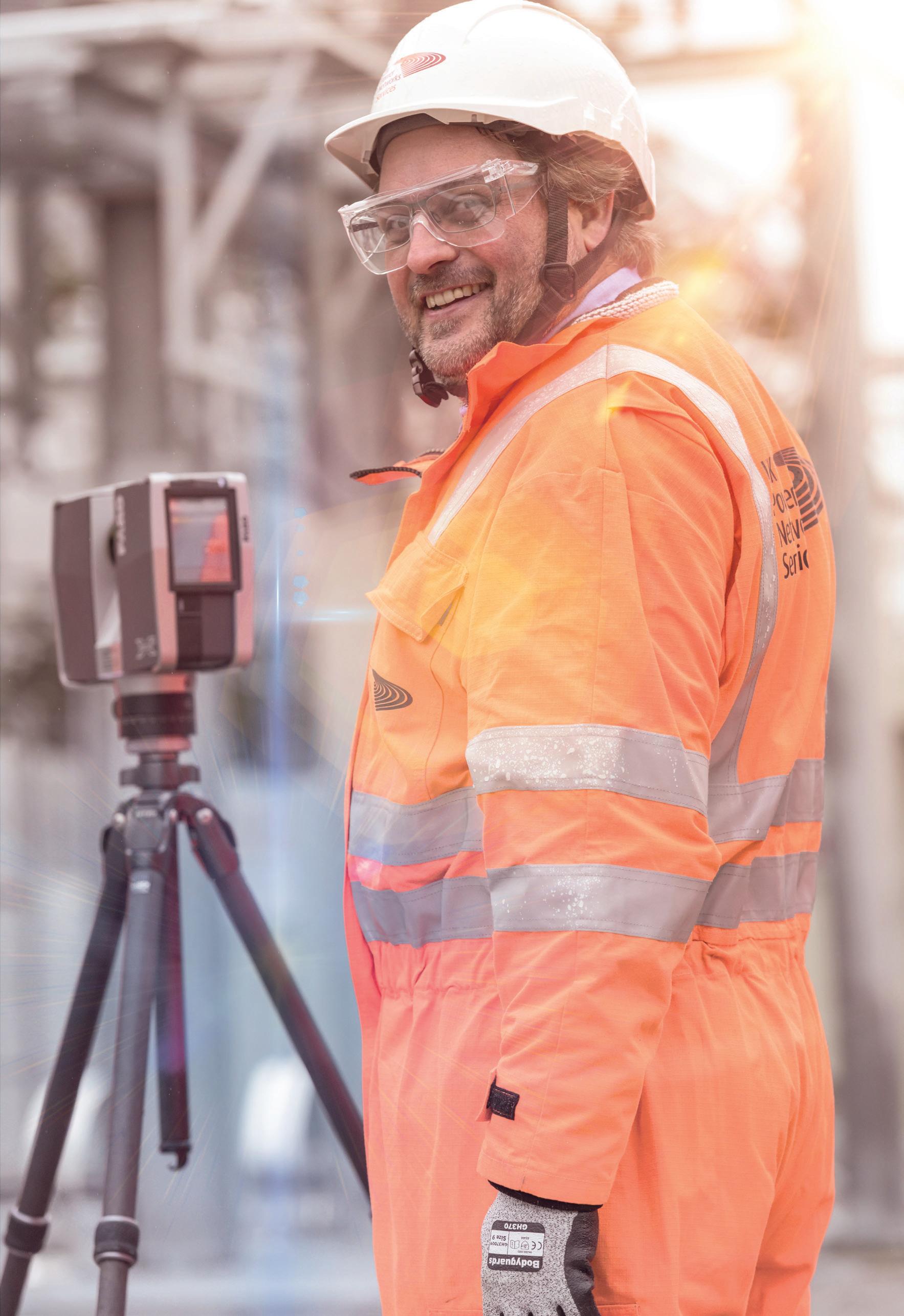
We work with alliance partners in the industry to deliver for the UK’s railways. By leveraging the capabilities of our partners, we are able to deliver more cost effective and innovative solutions.

Scan here to get in touch
